
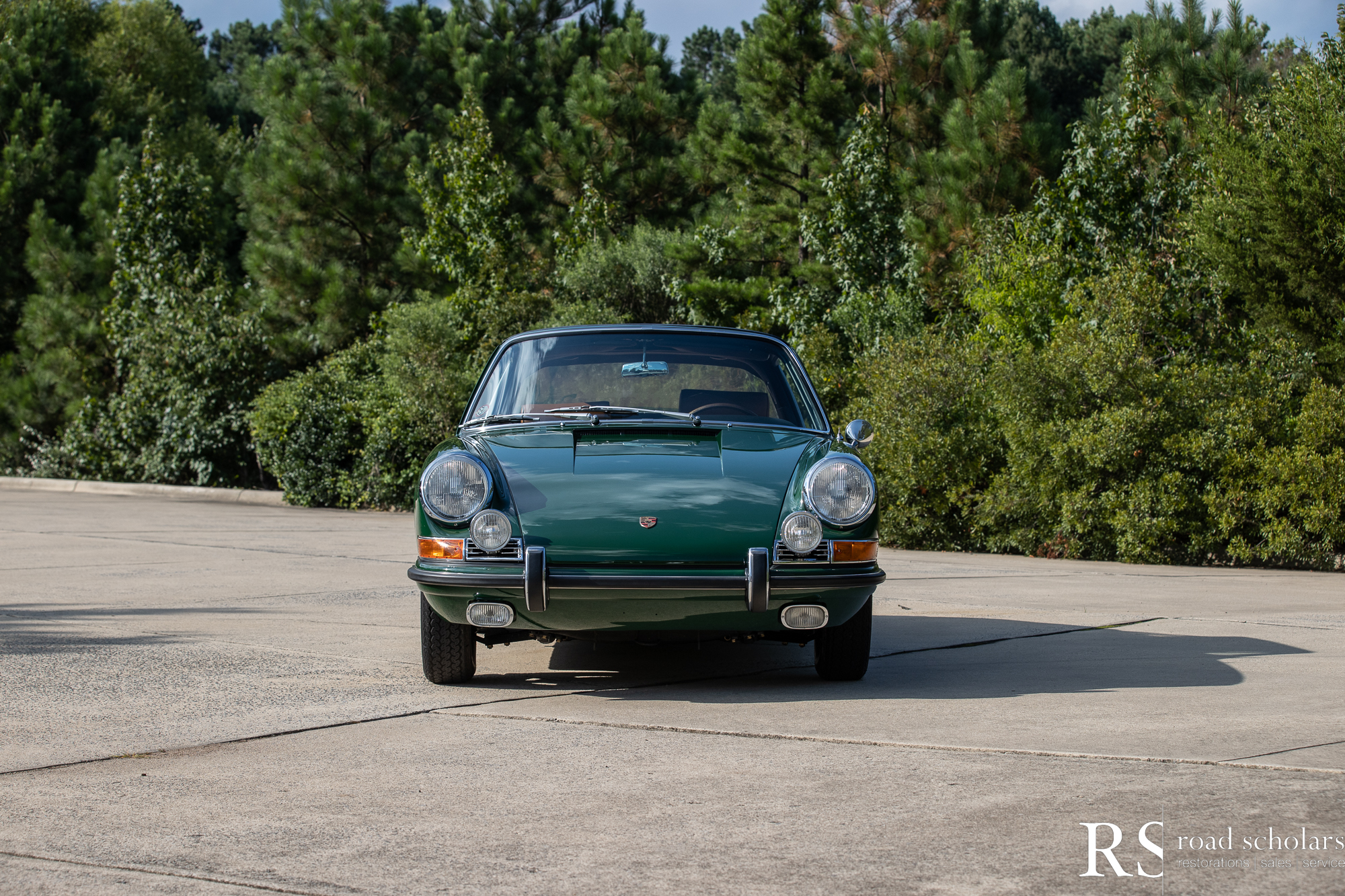
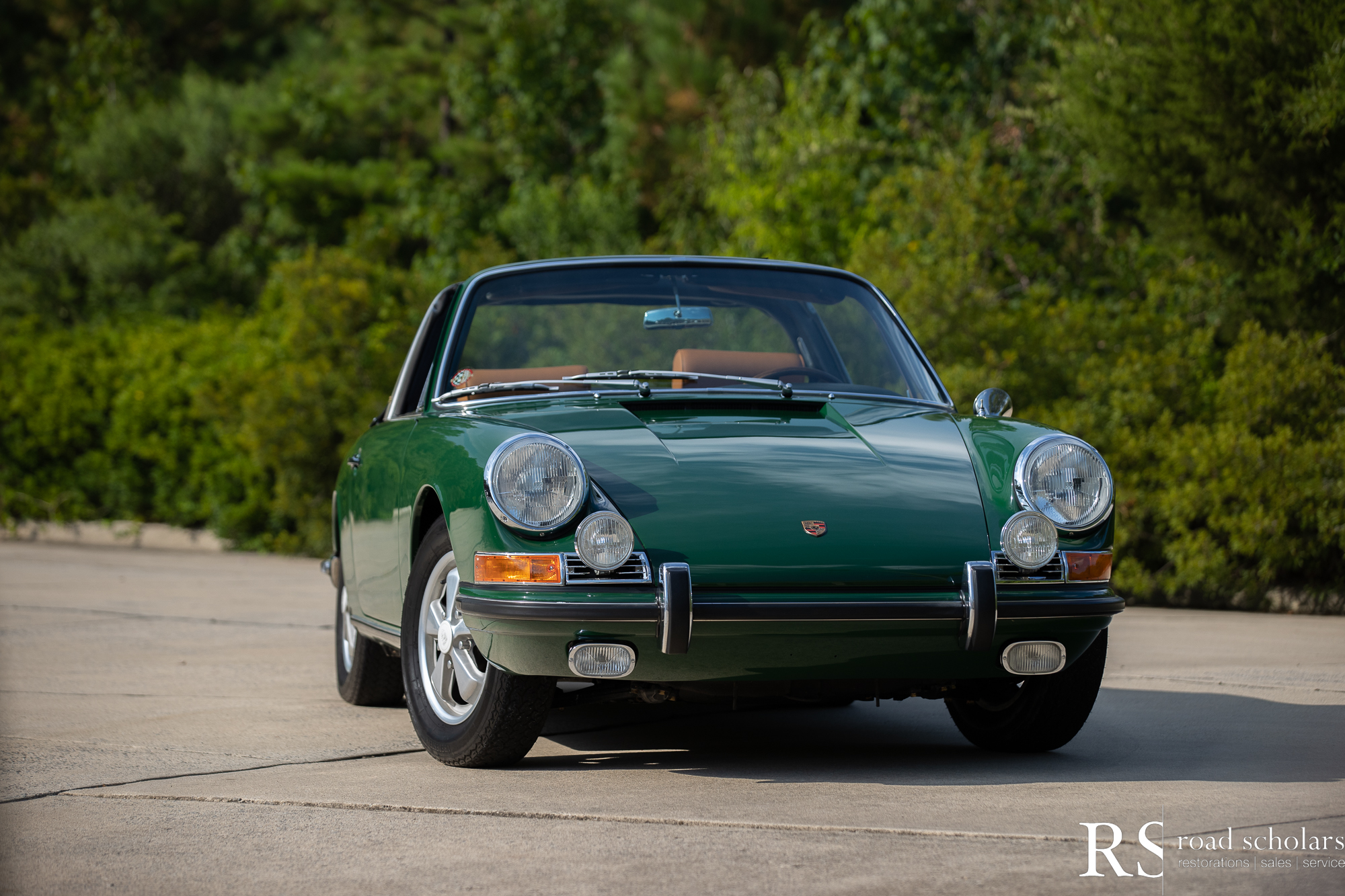
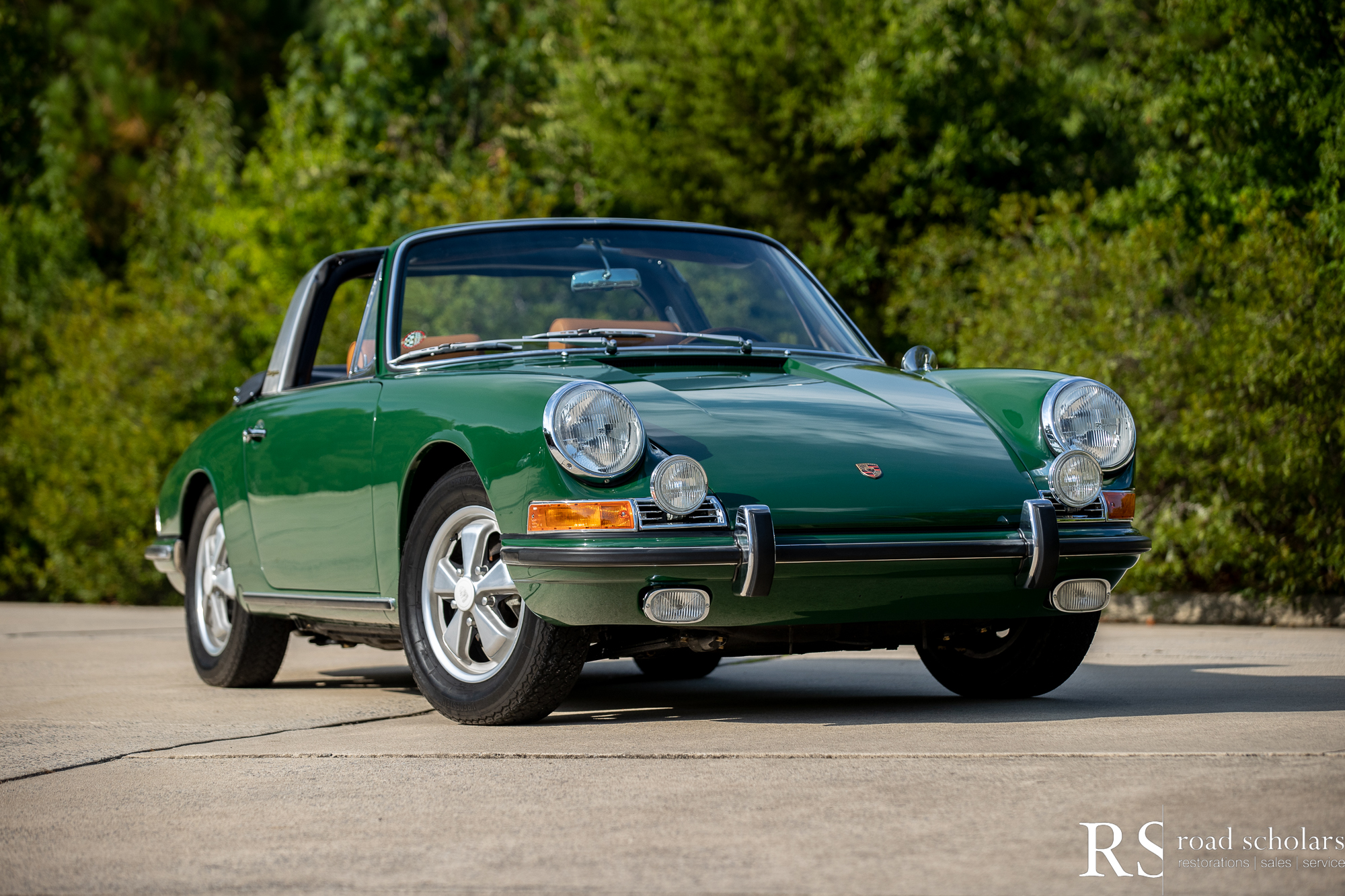
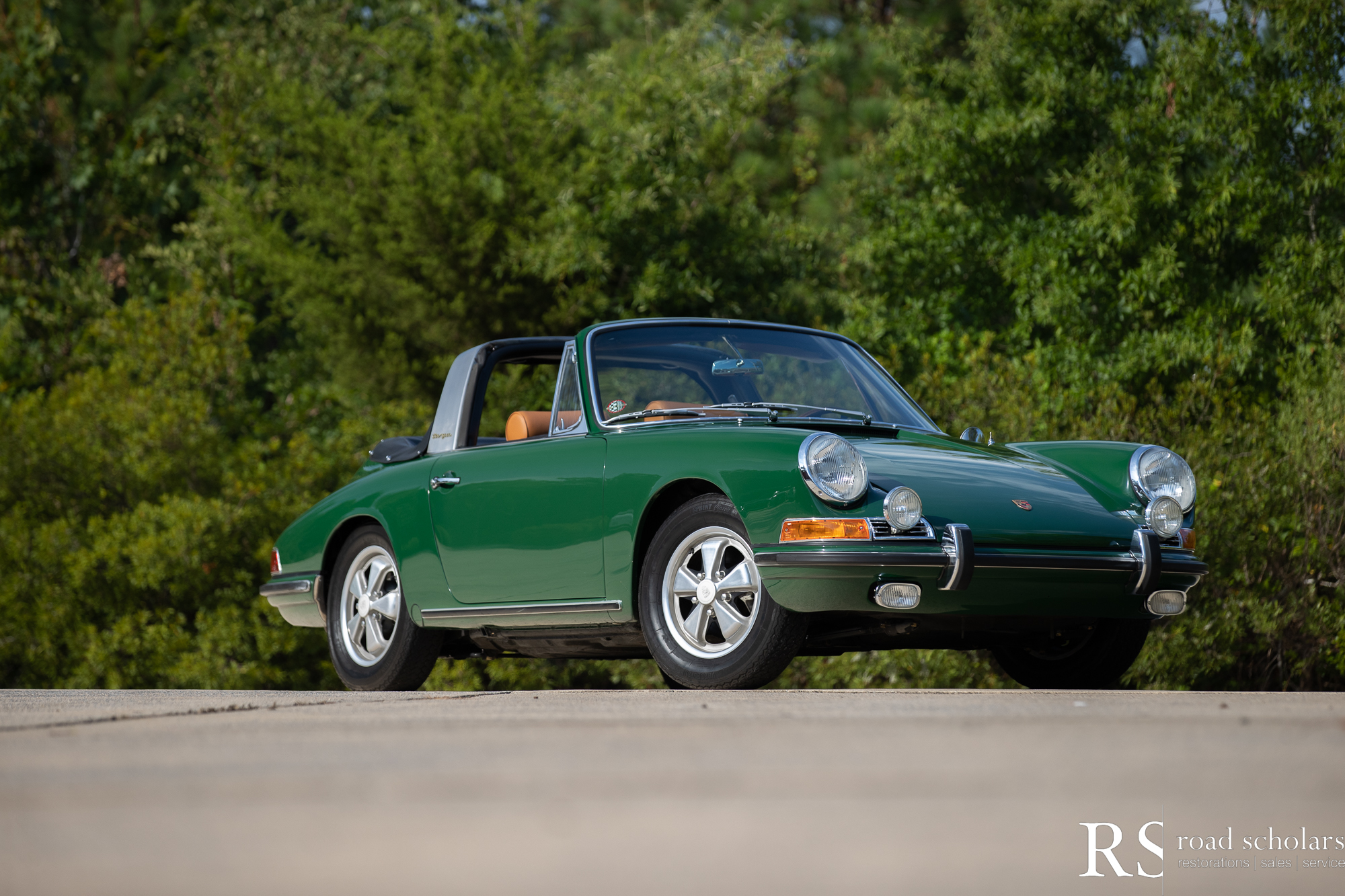
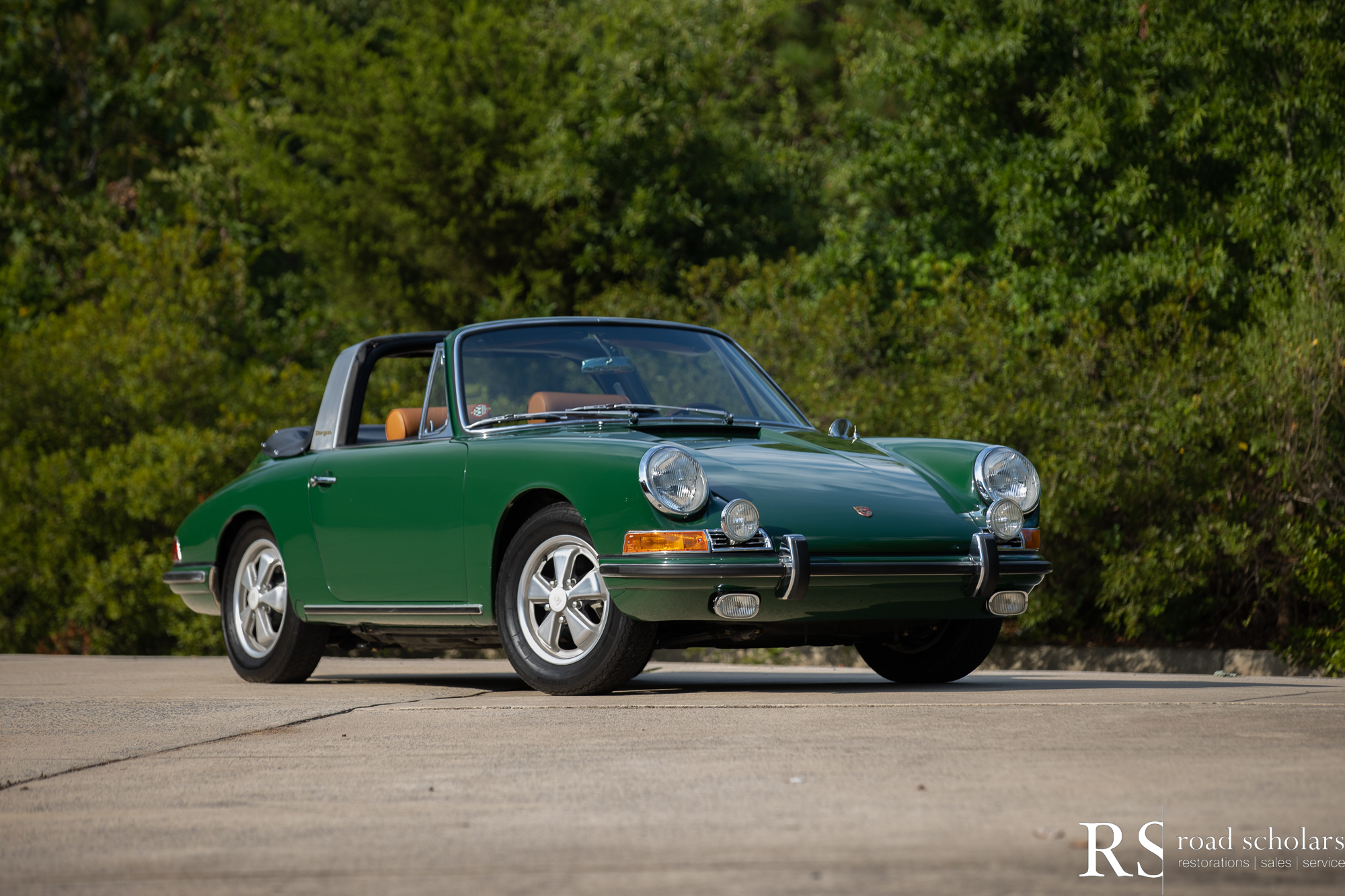
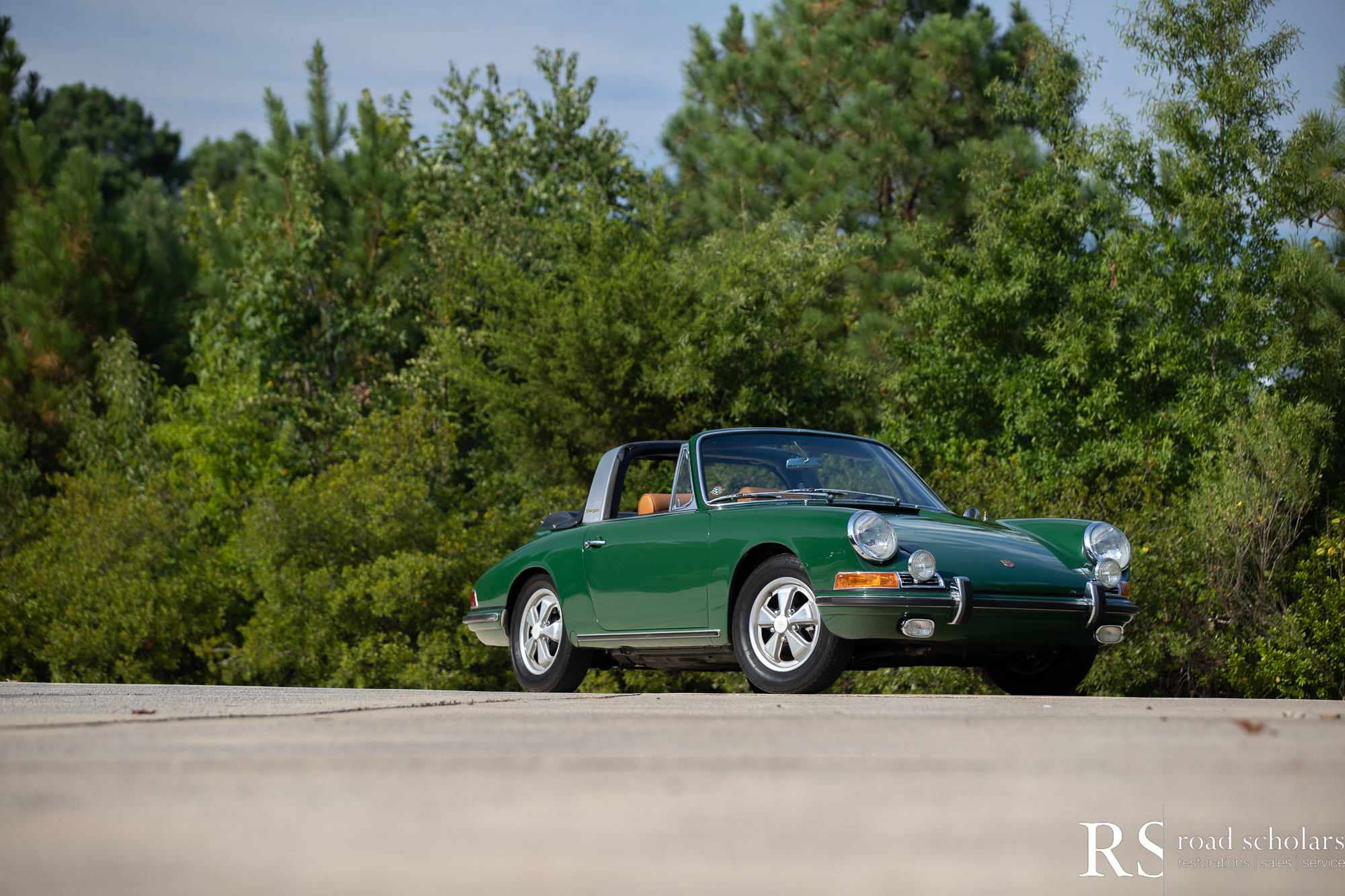

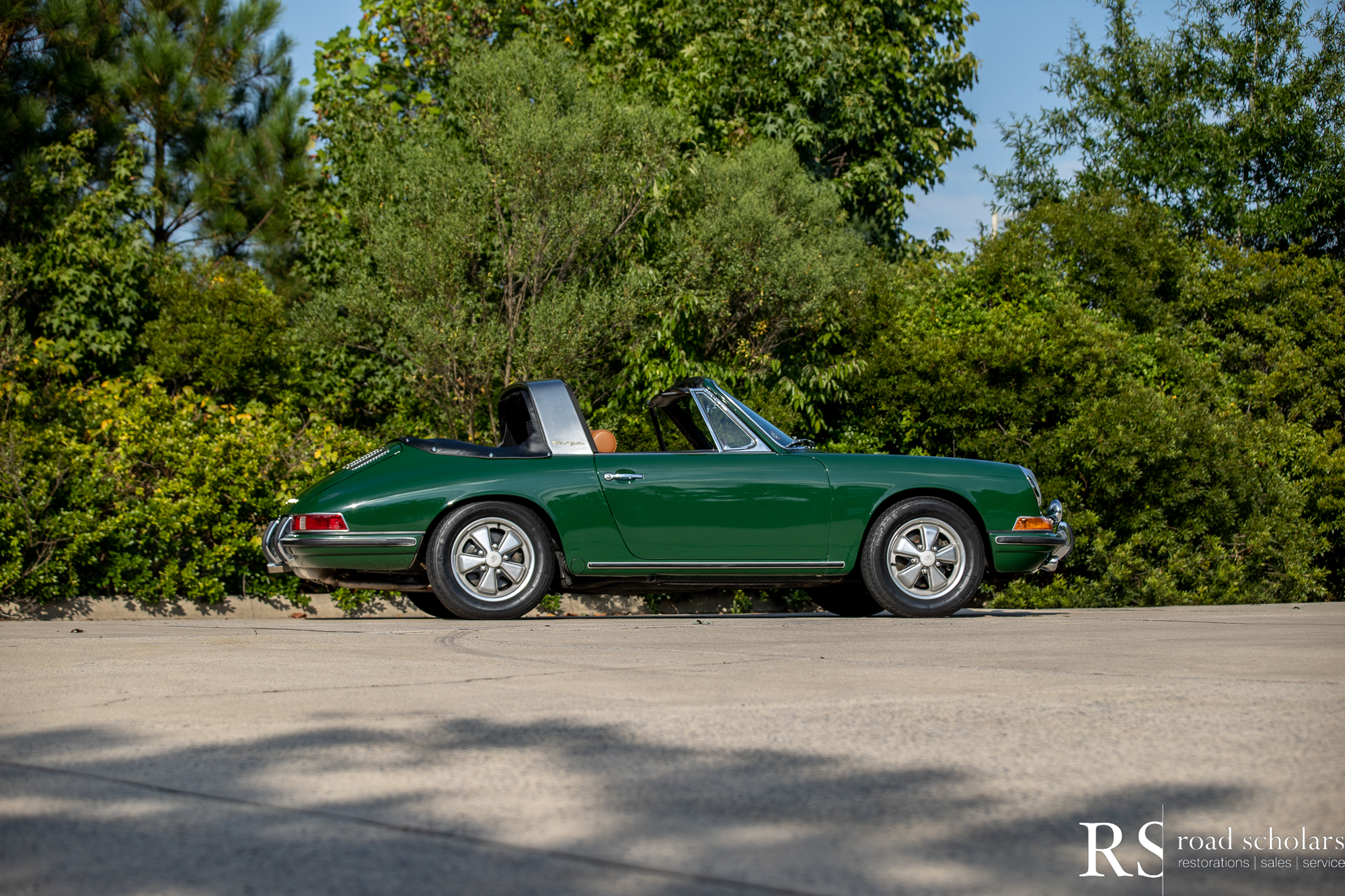
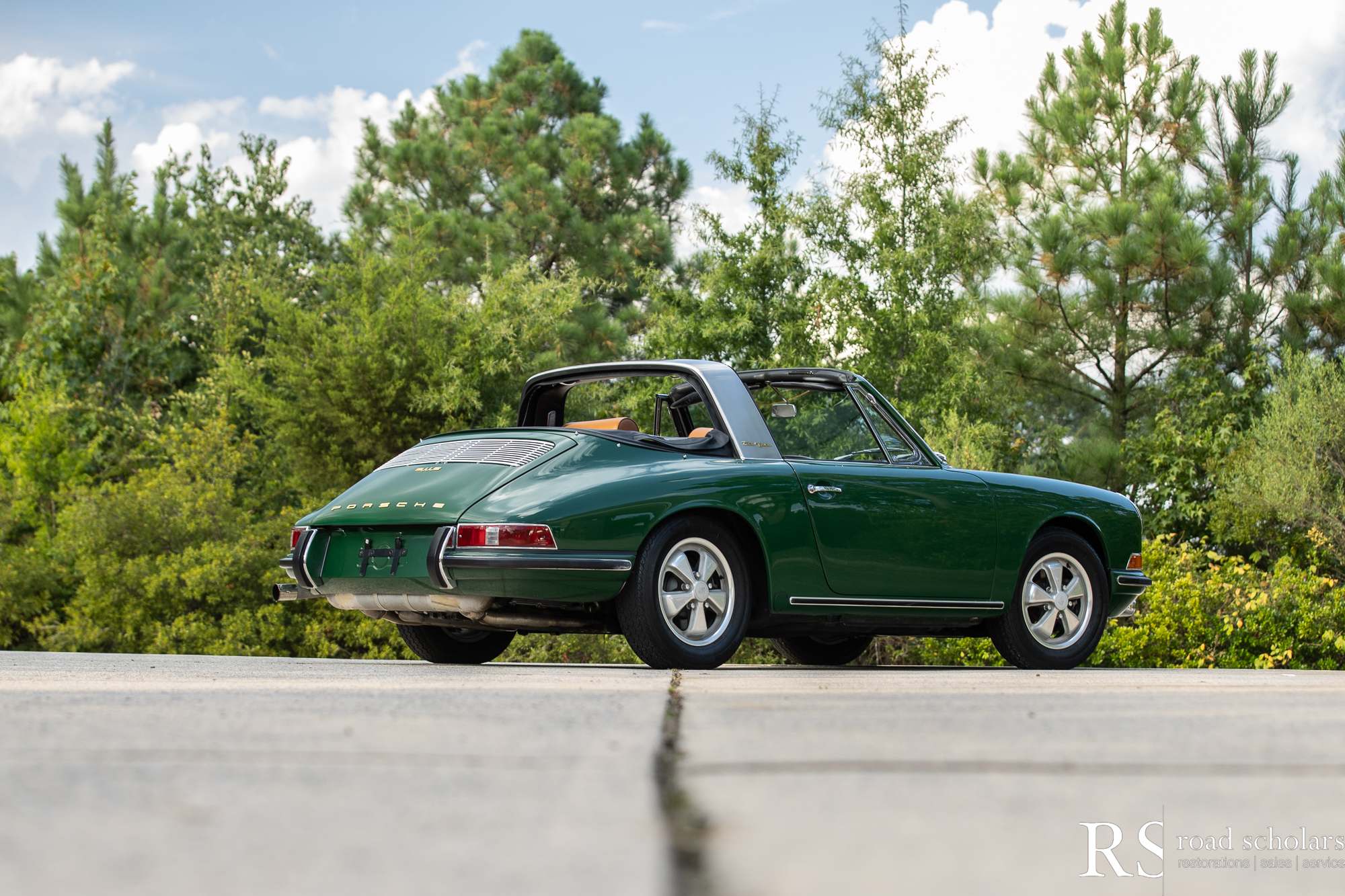
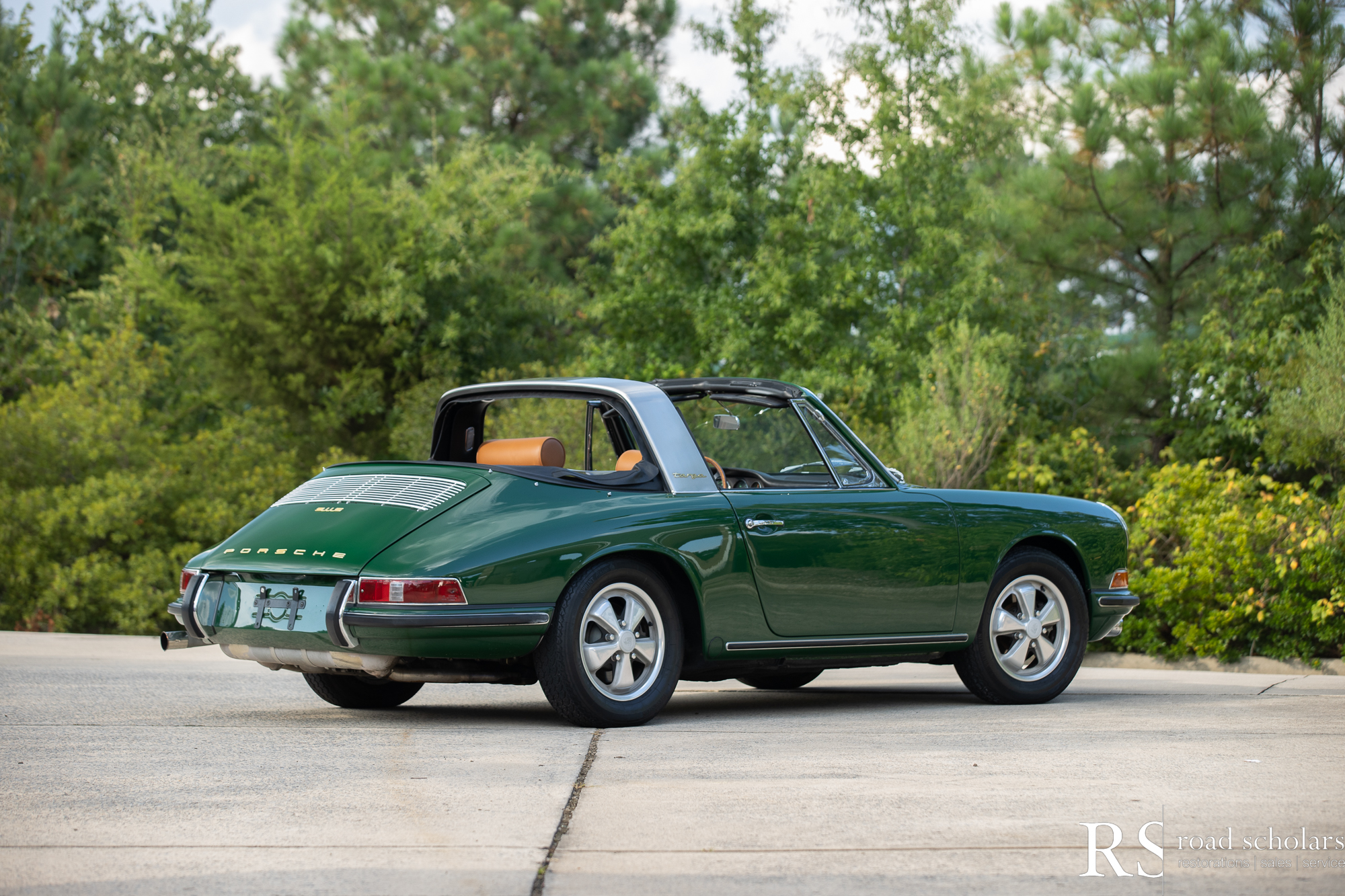
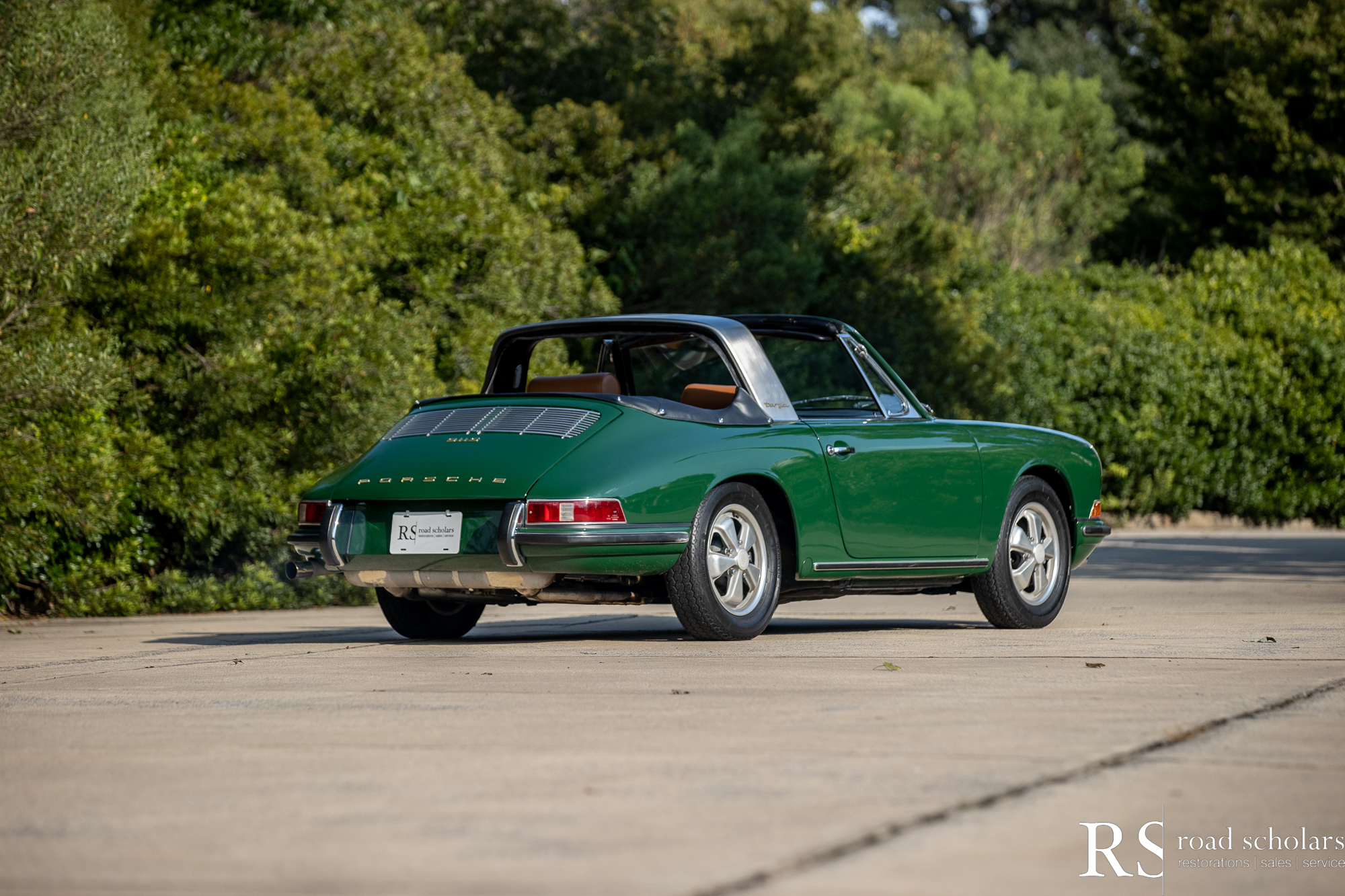

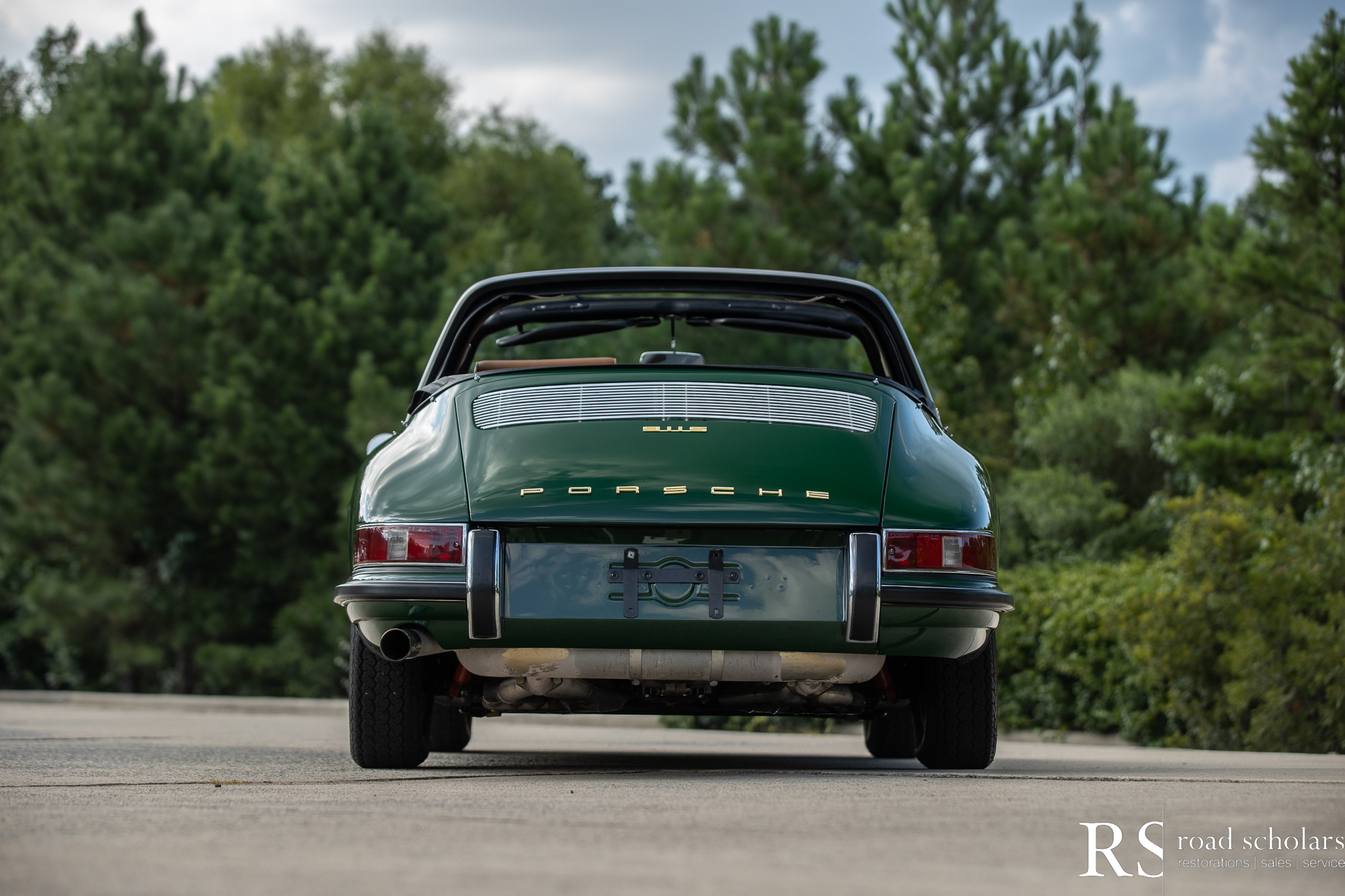
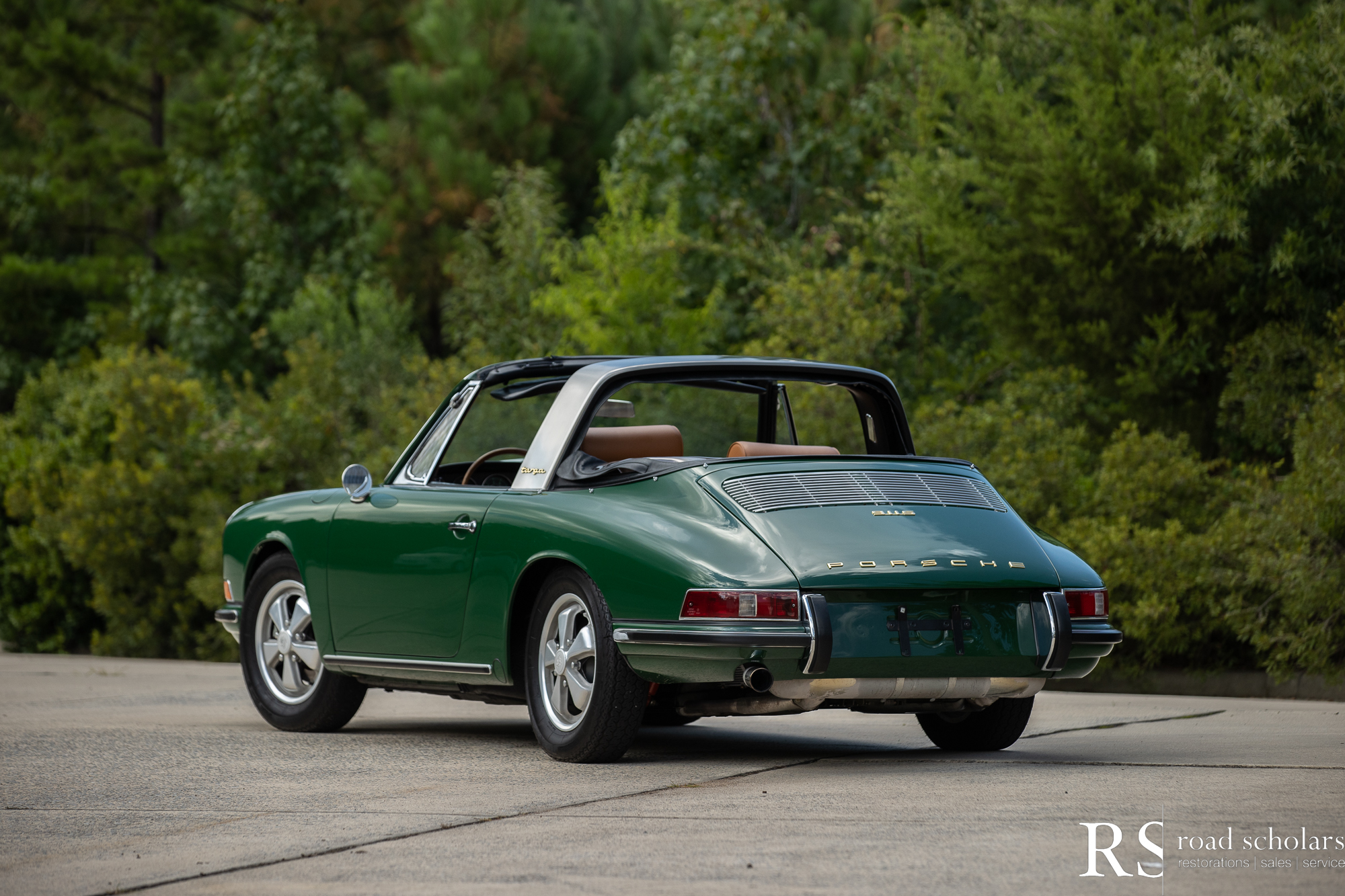
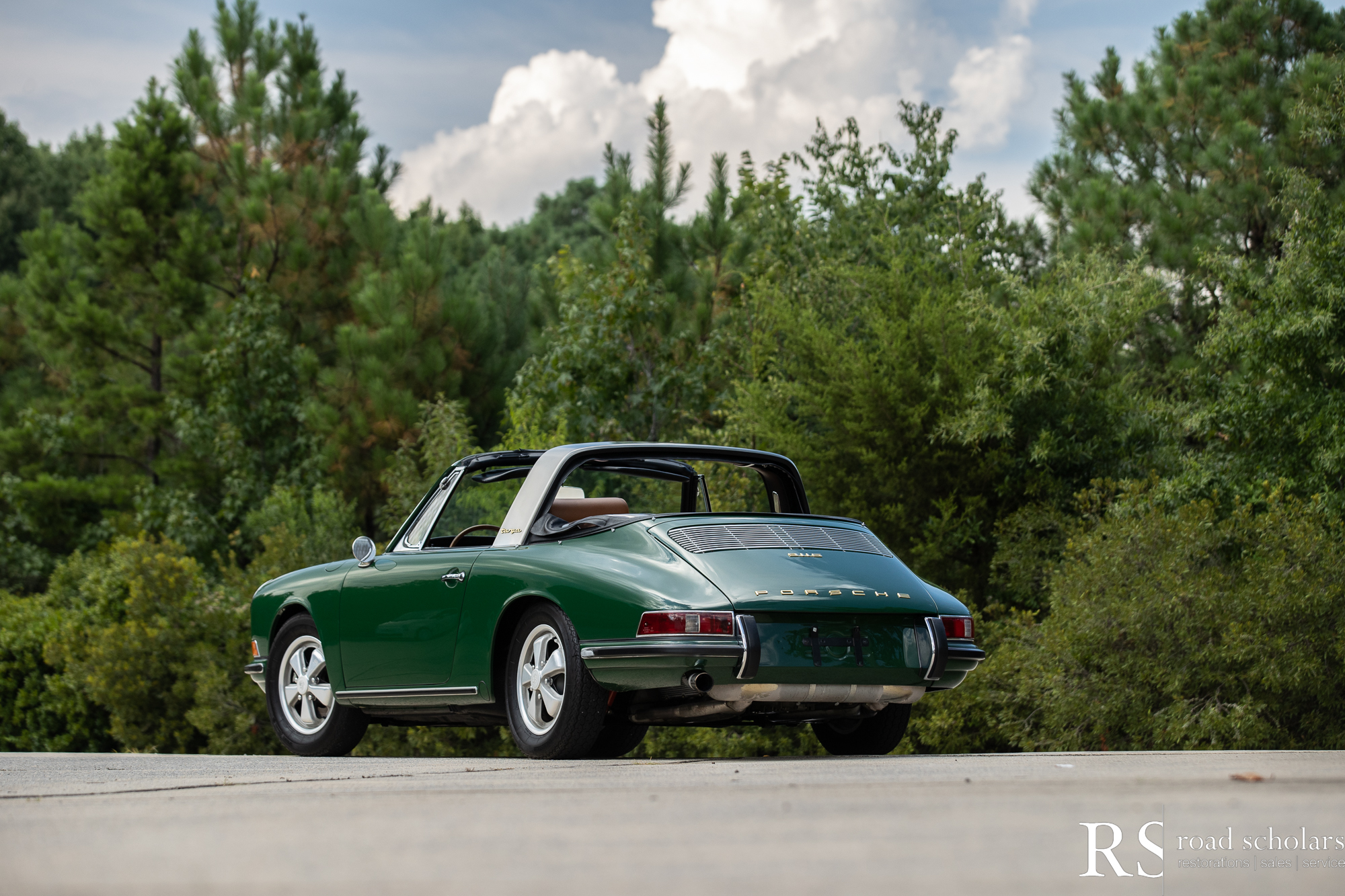
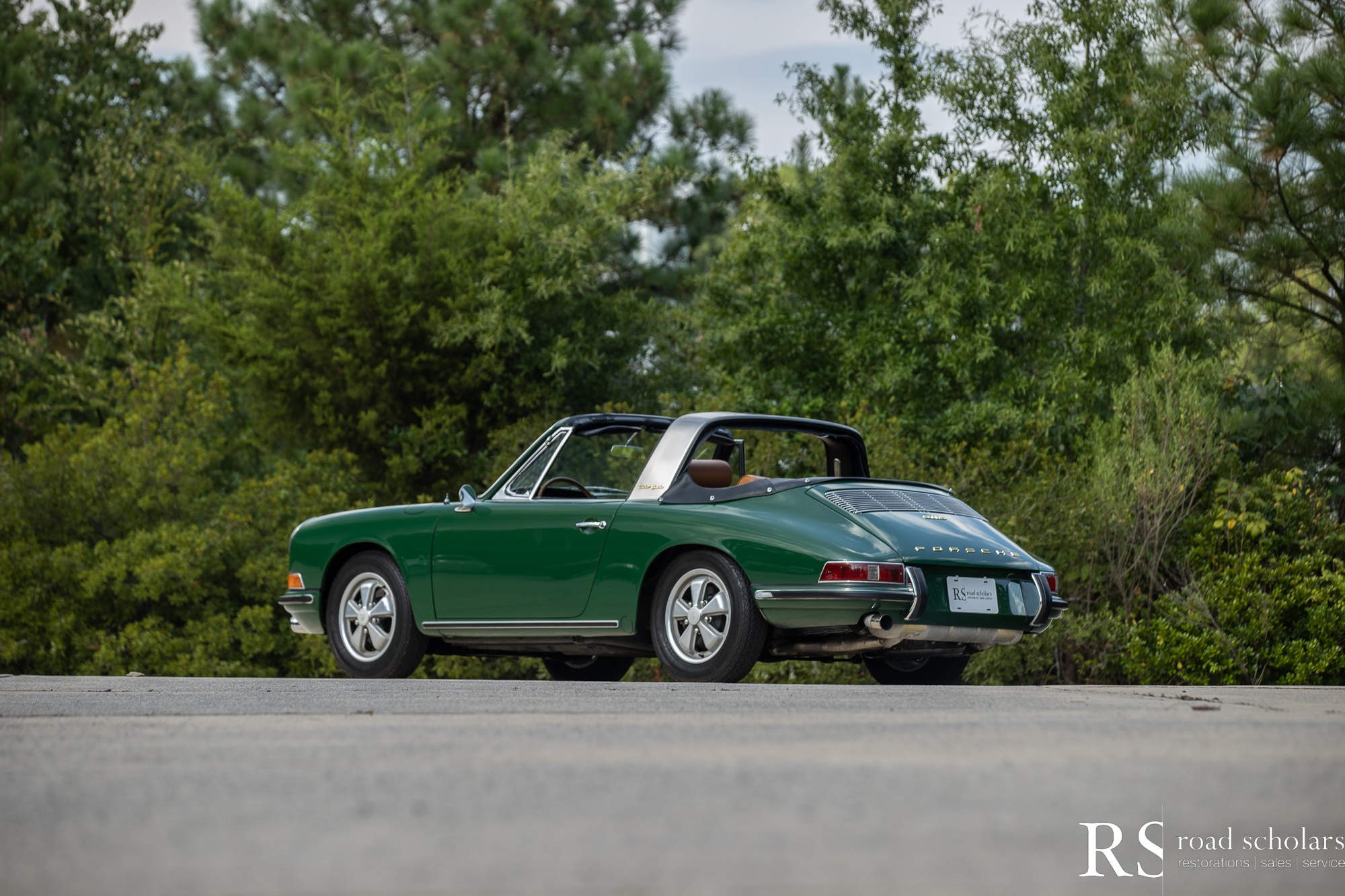
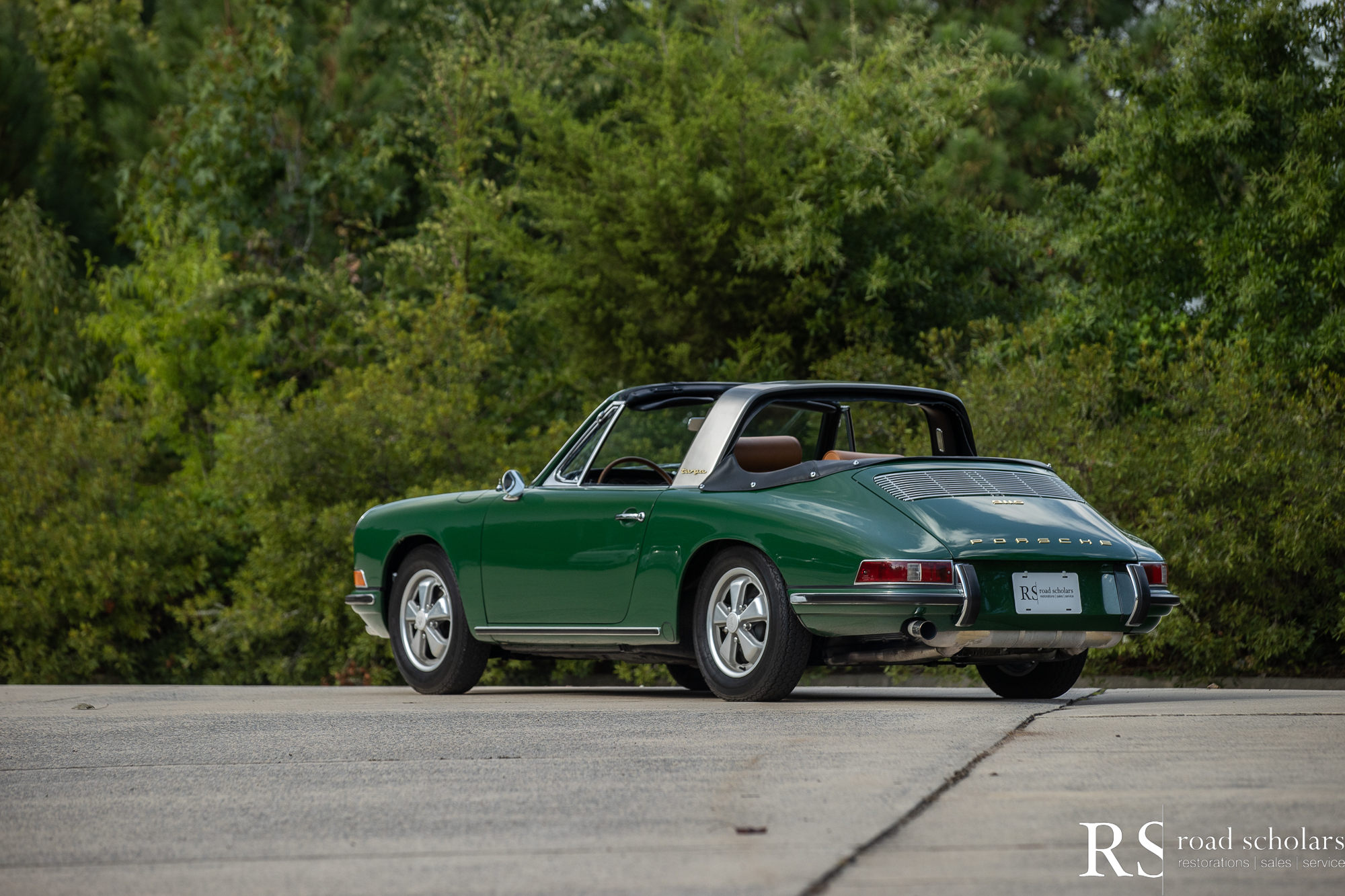

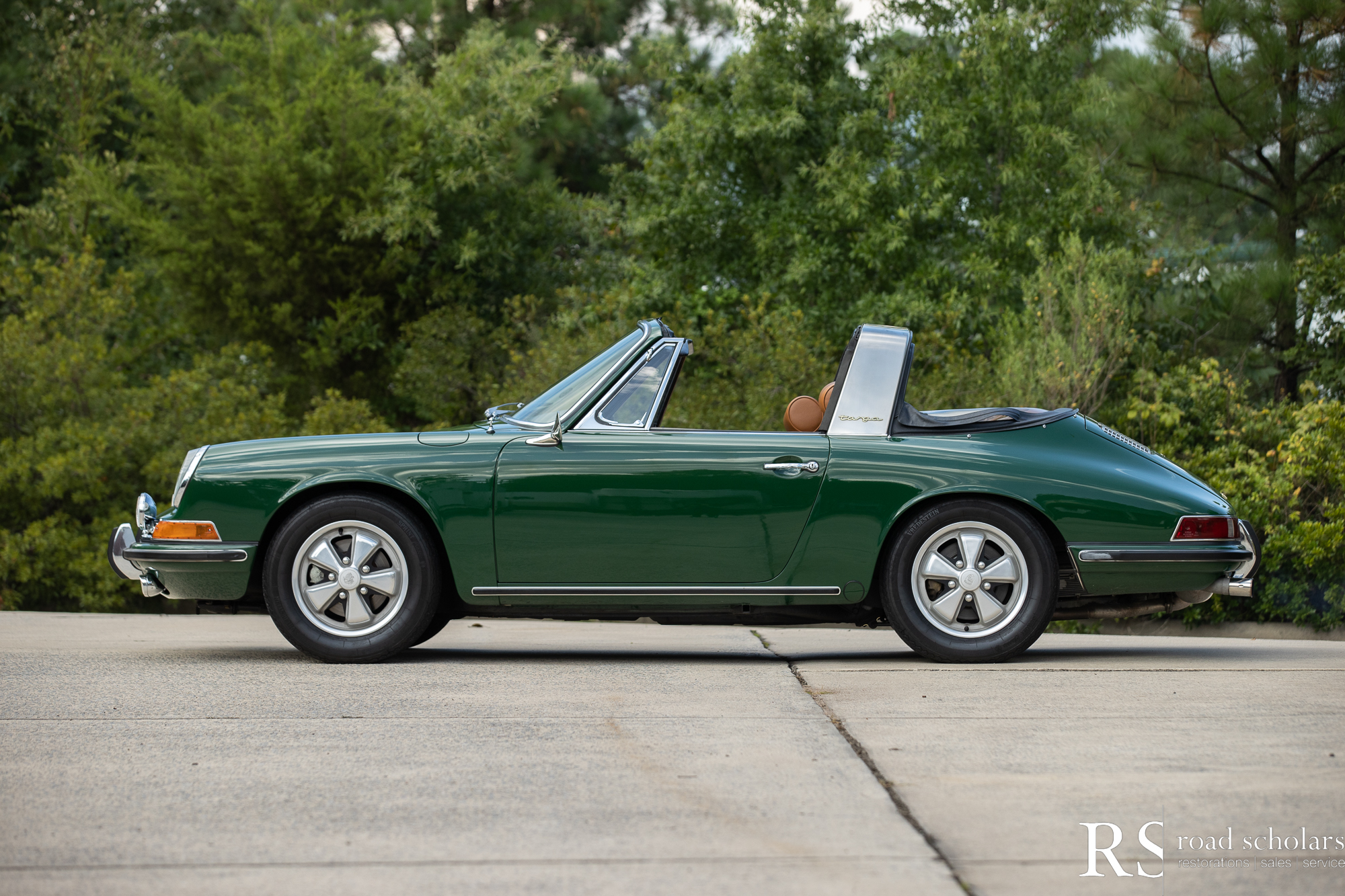
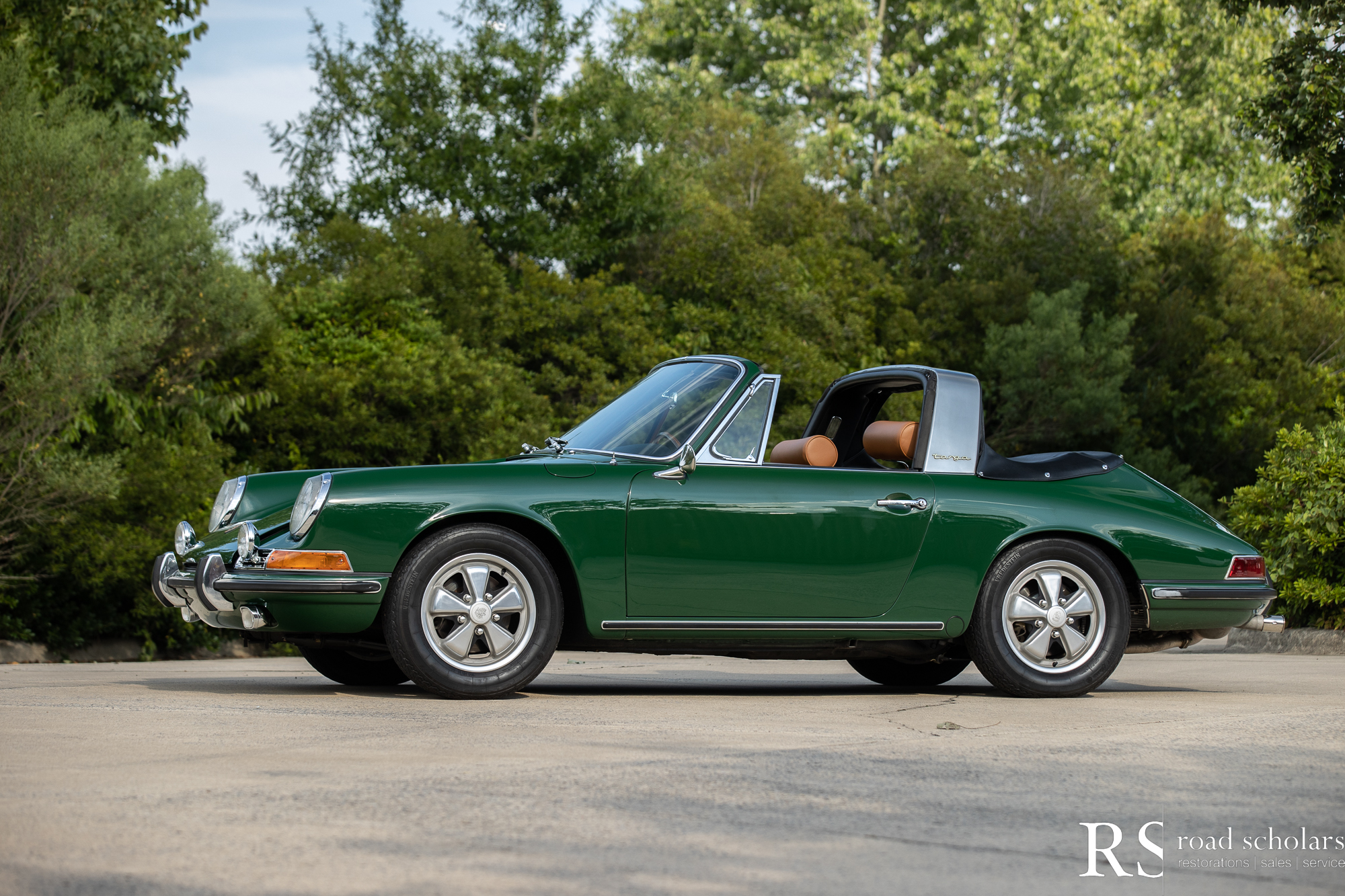
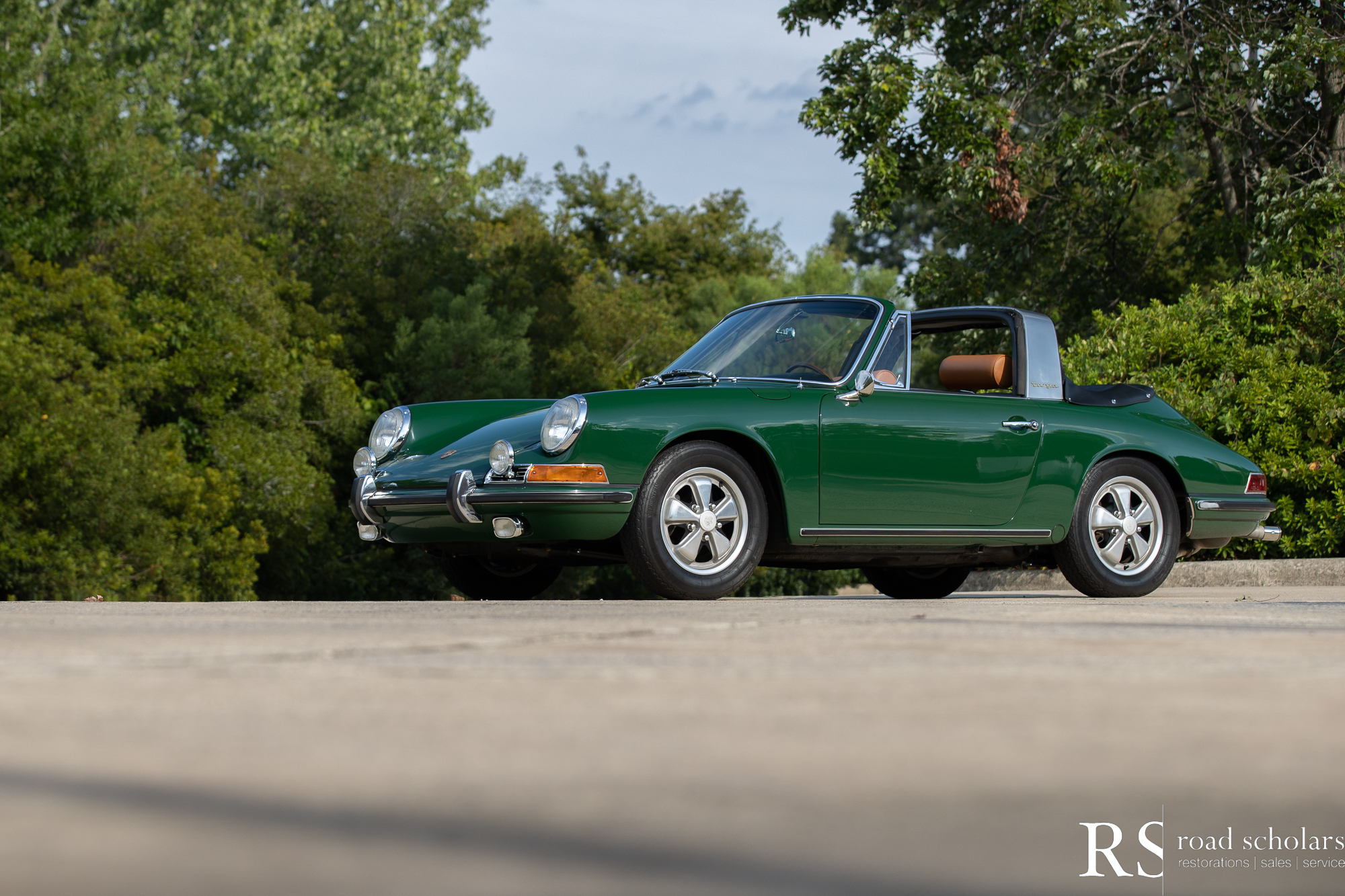
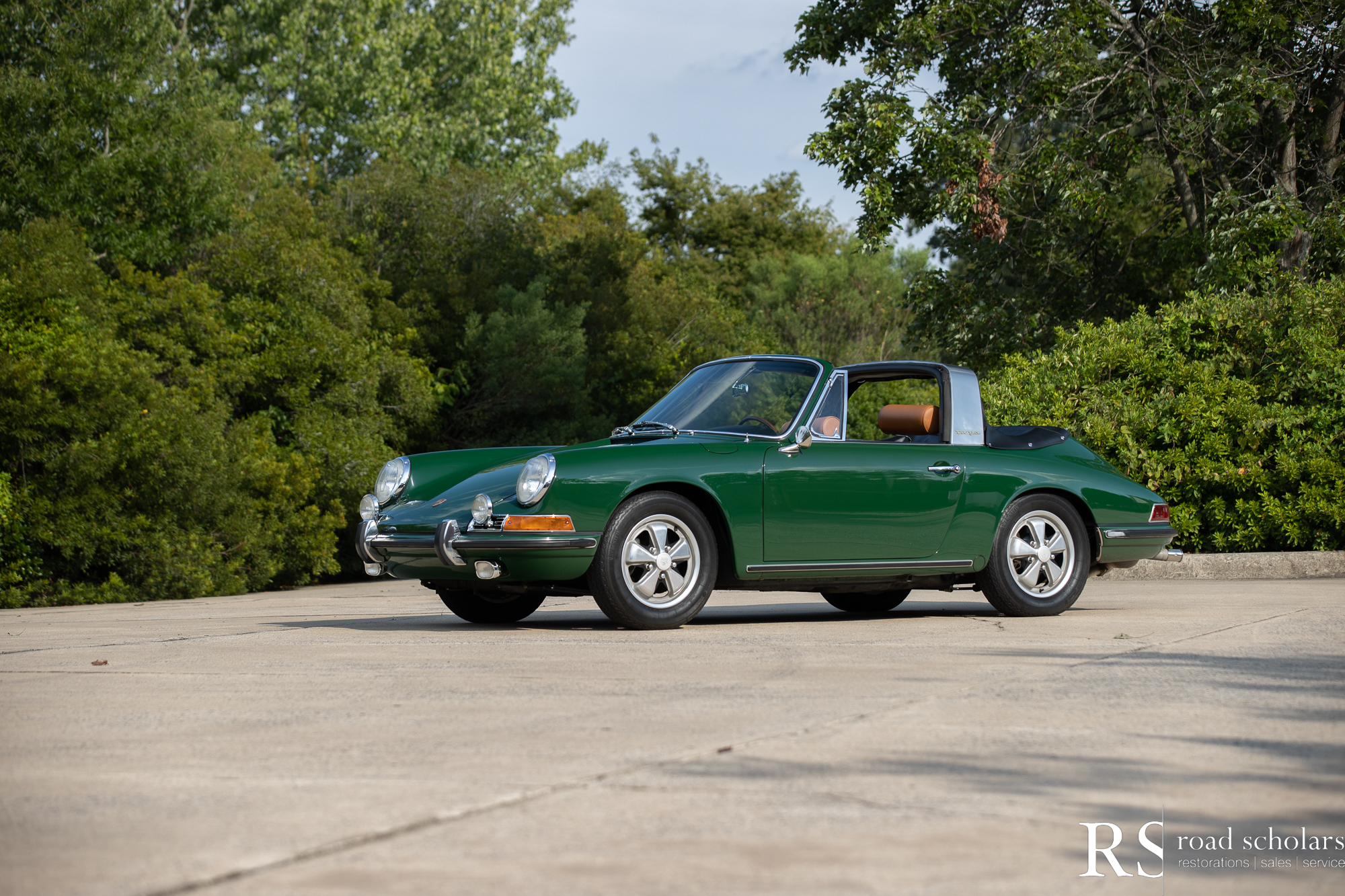

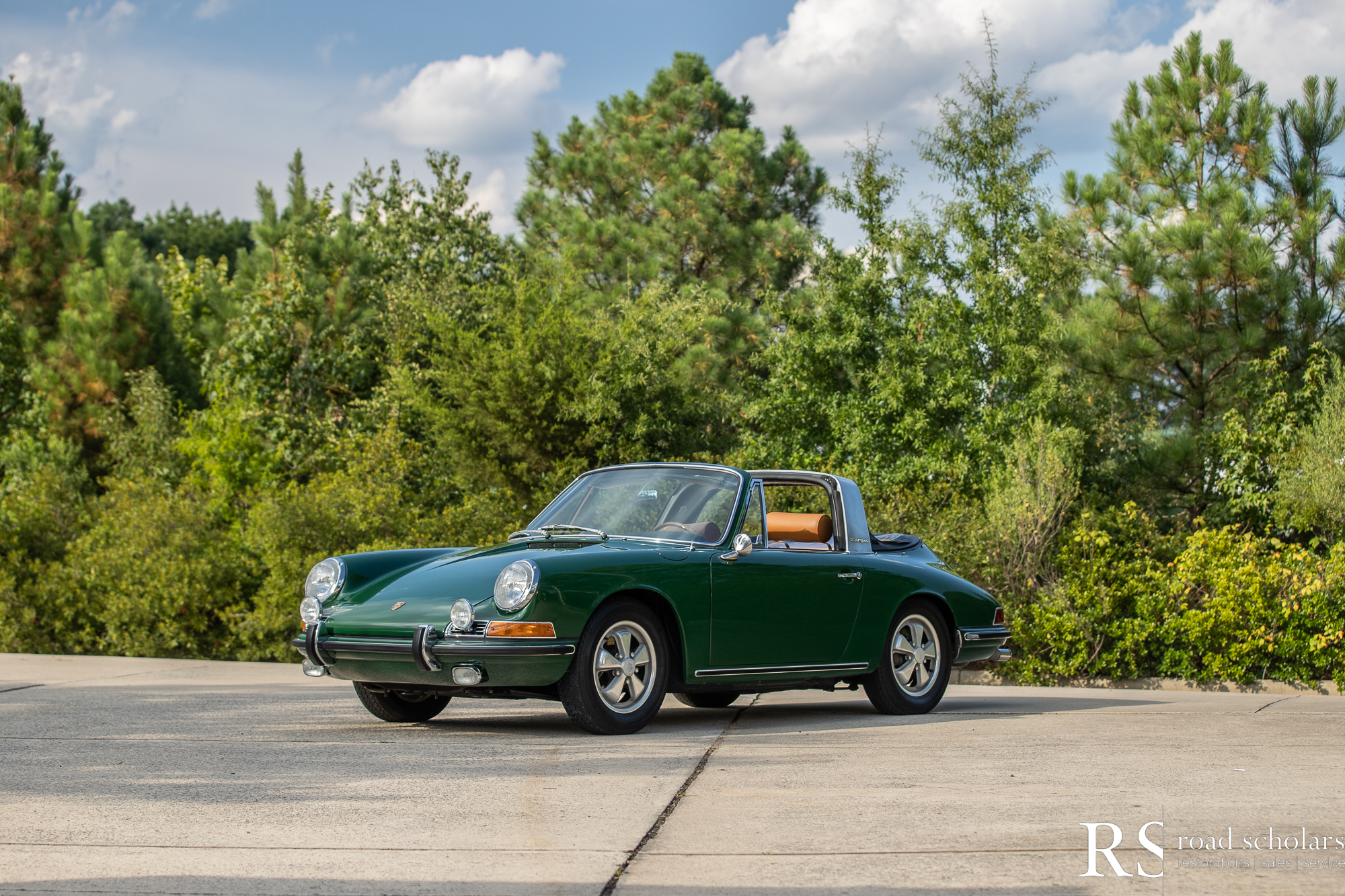
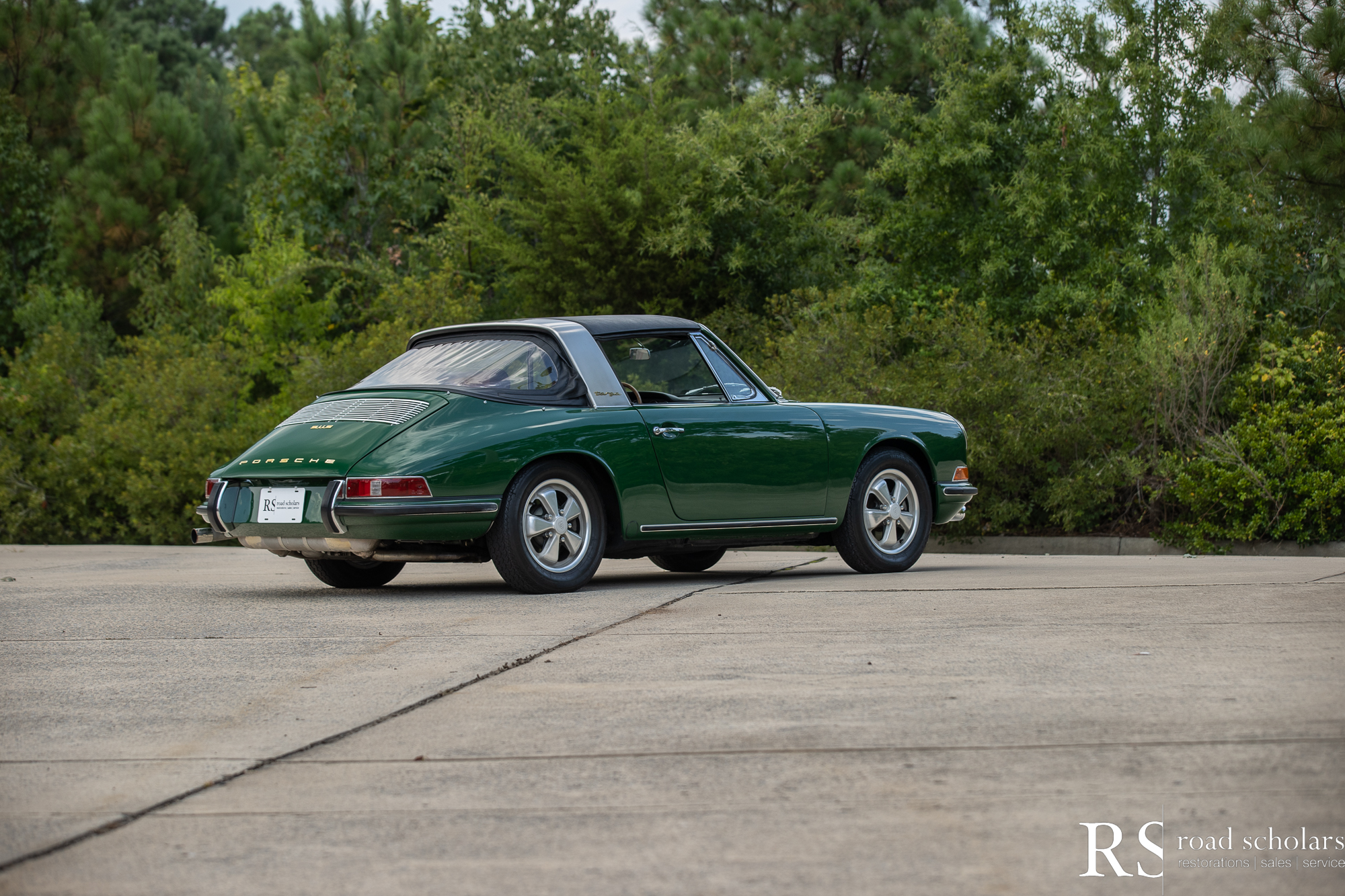
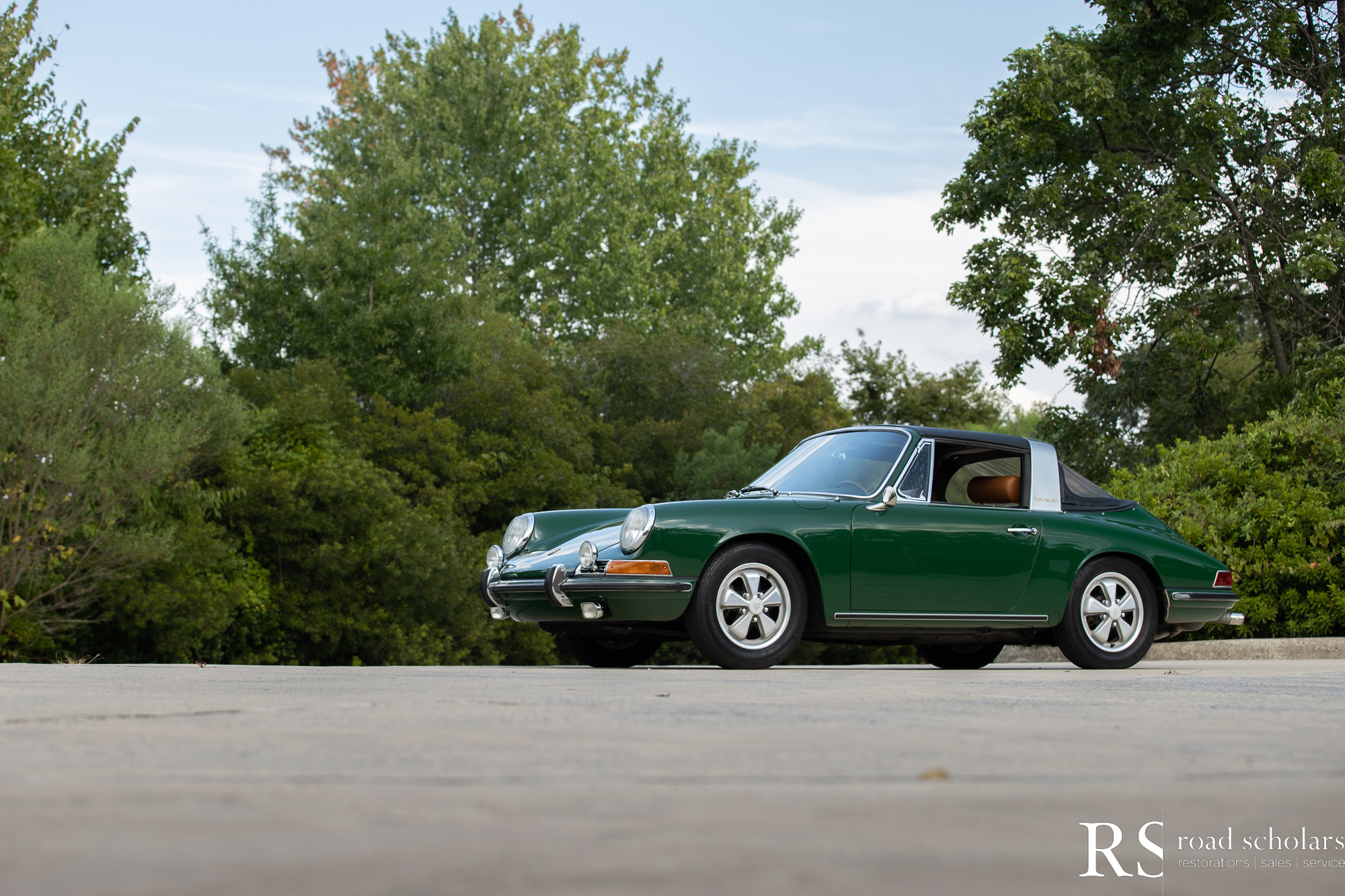
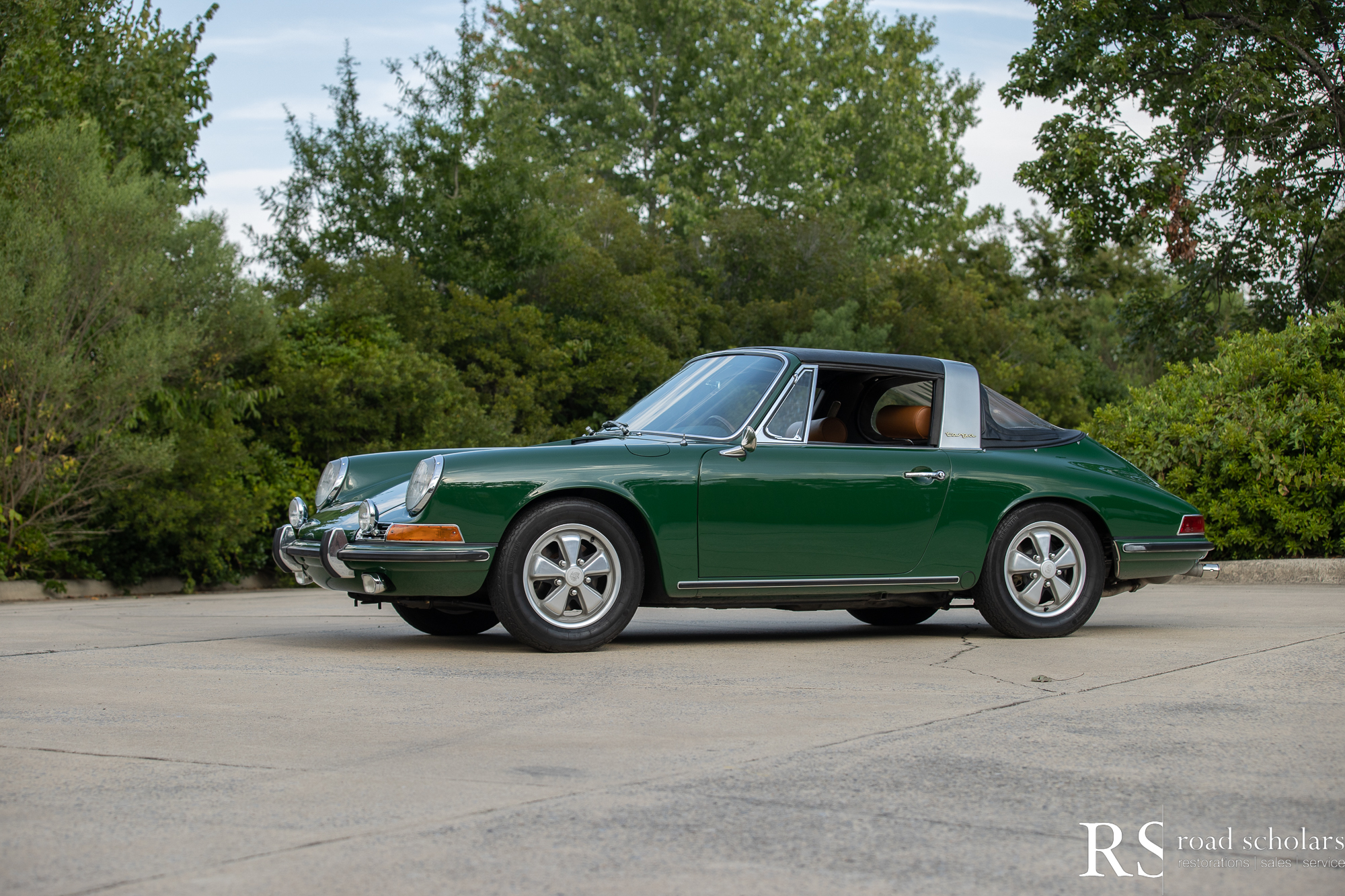
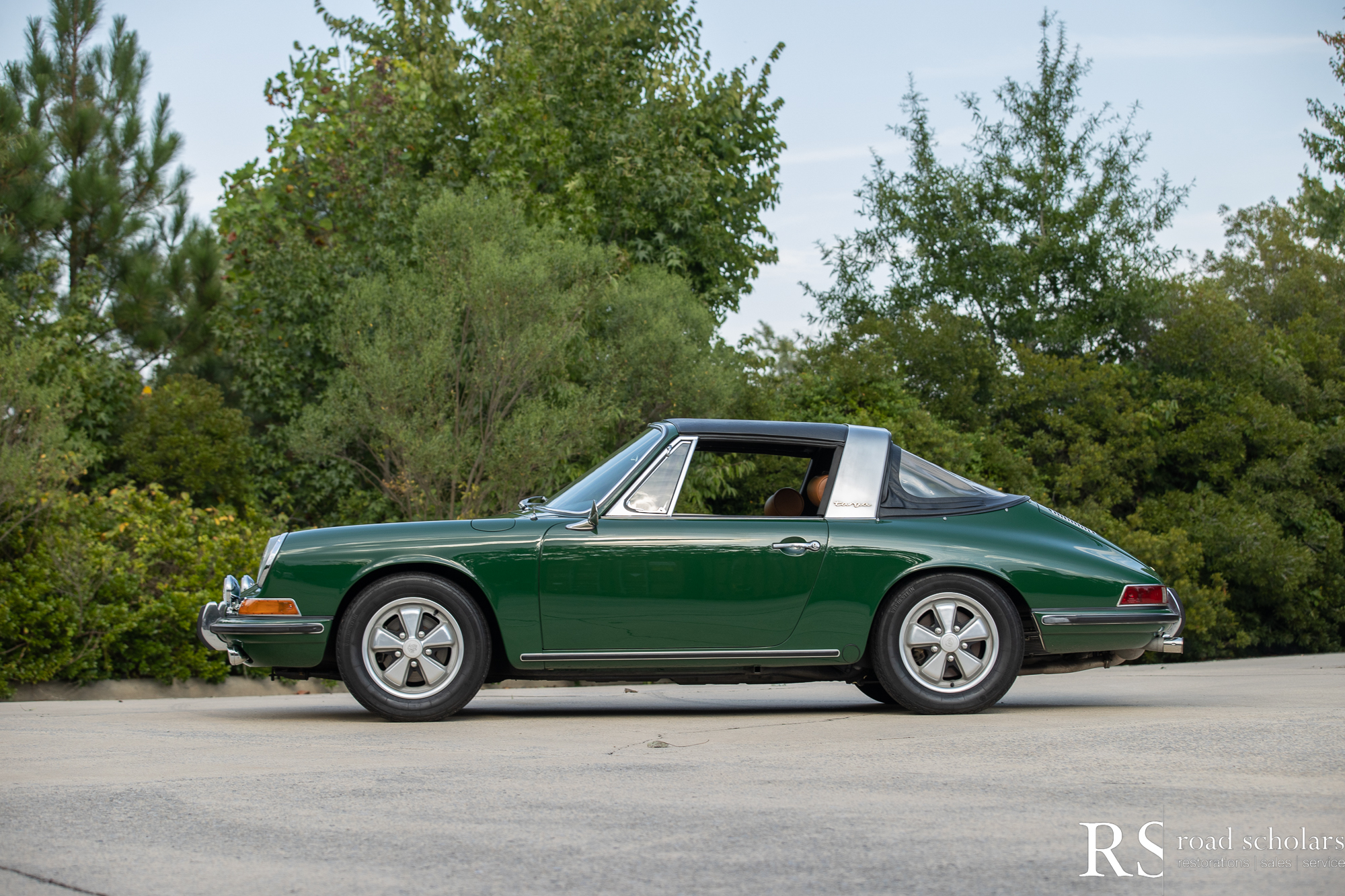
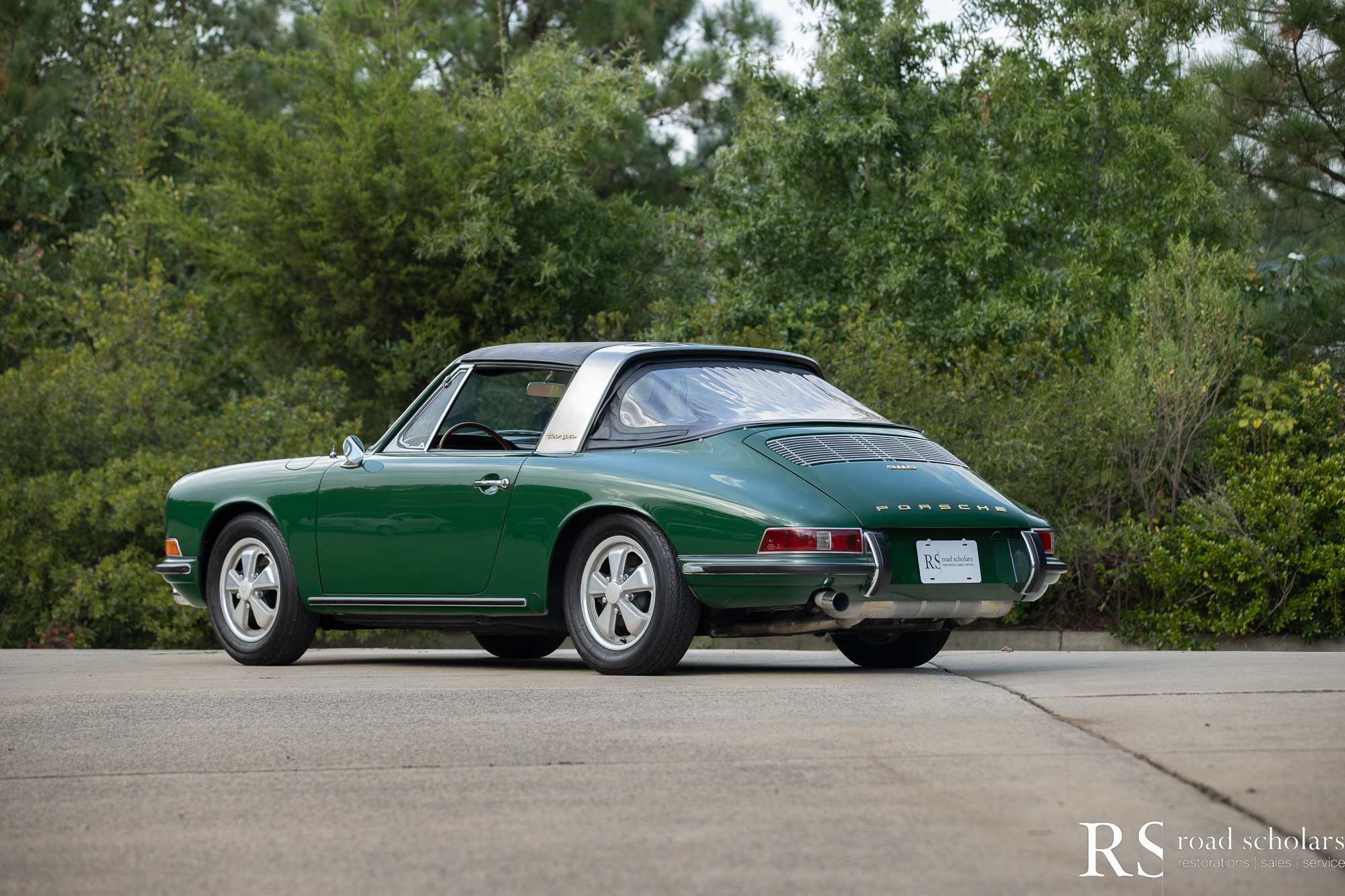
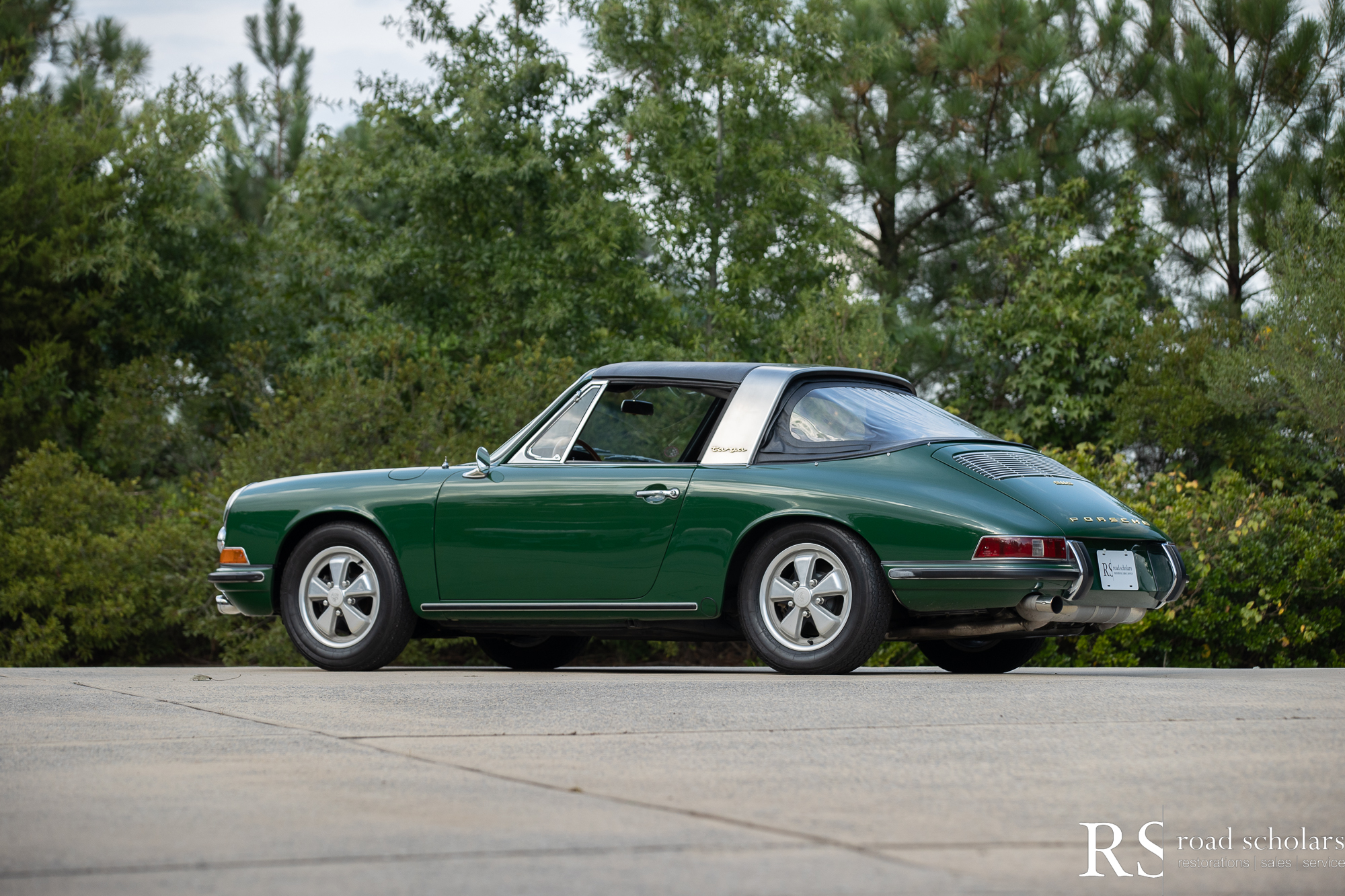
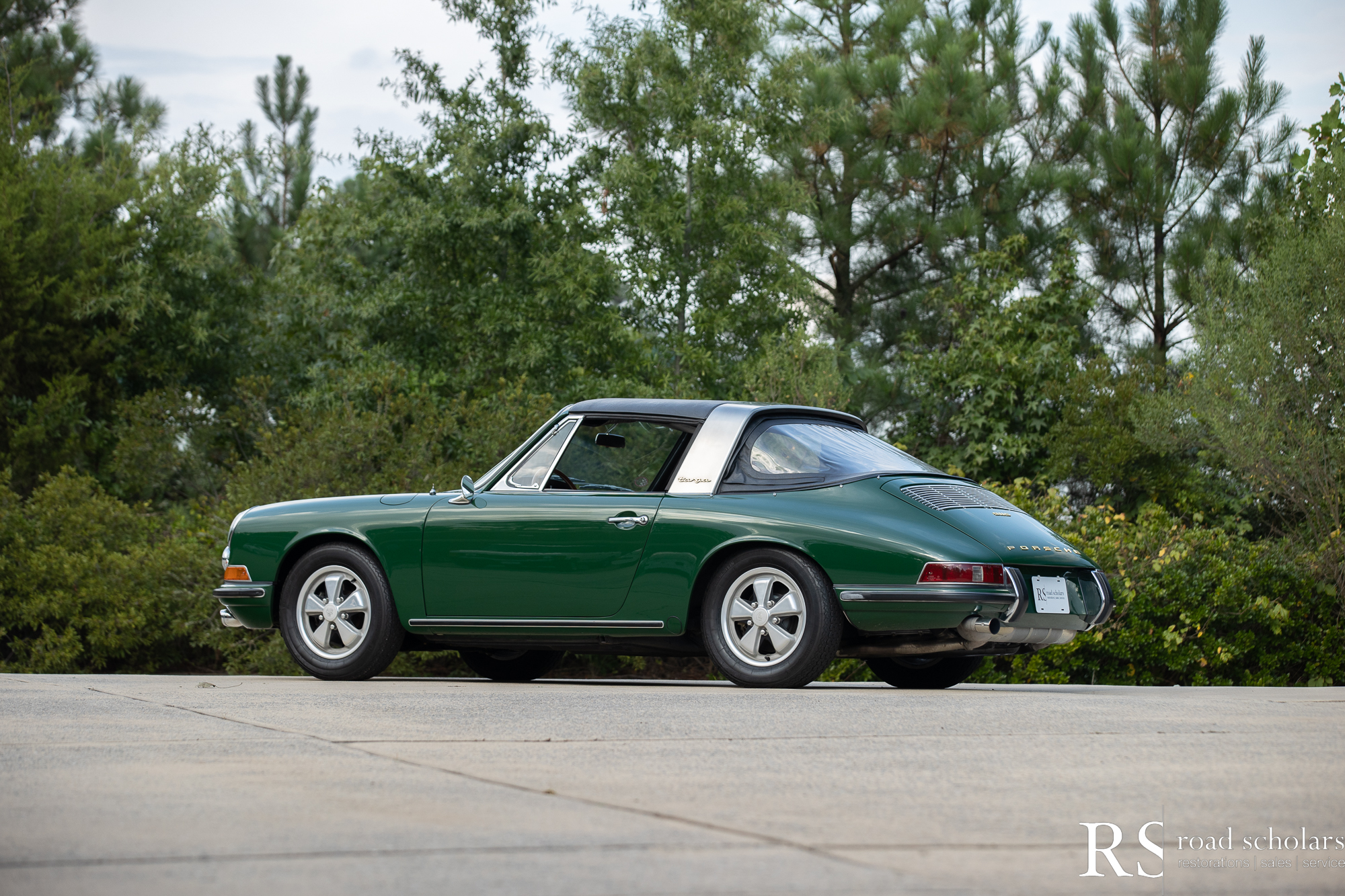
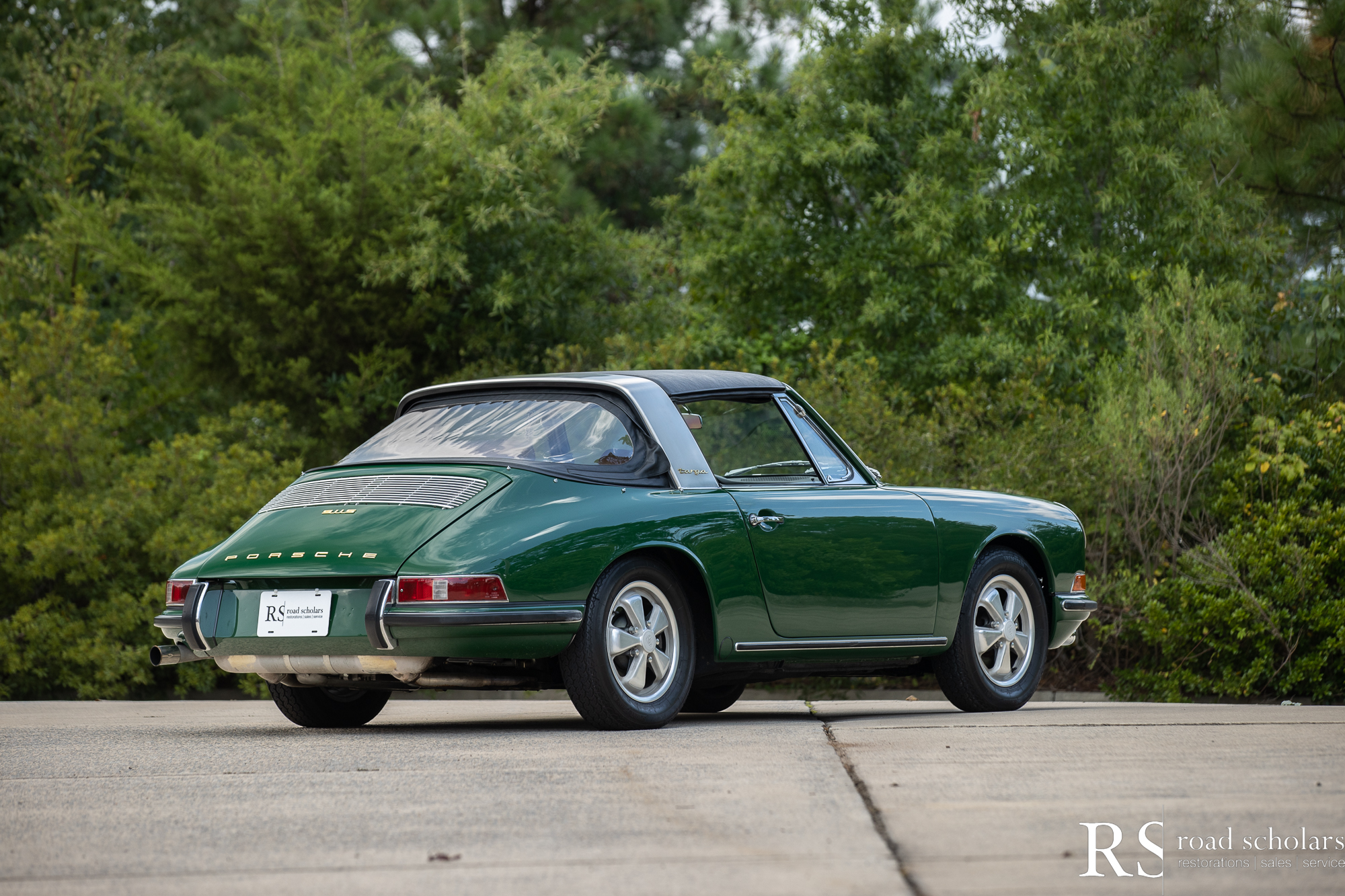
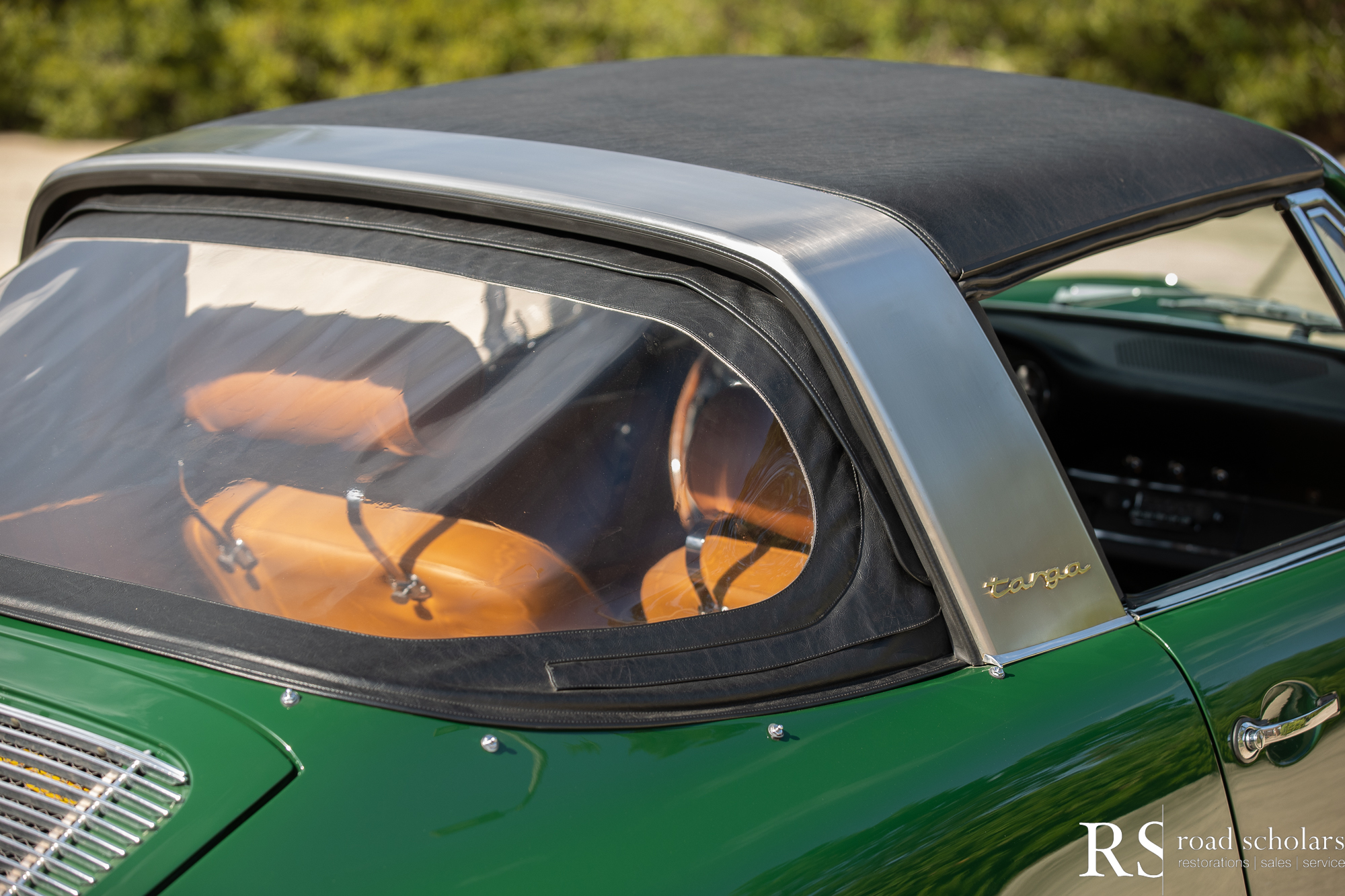
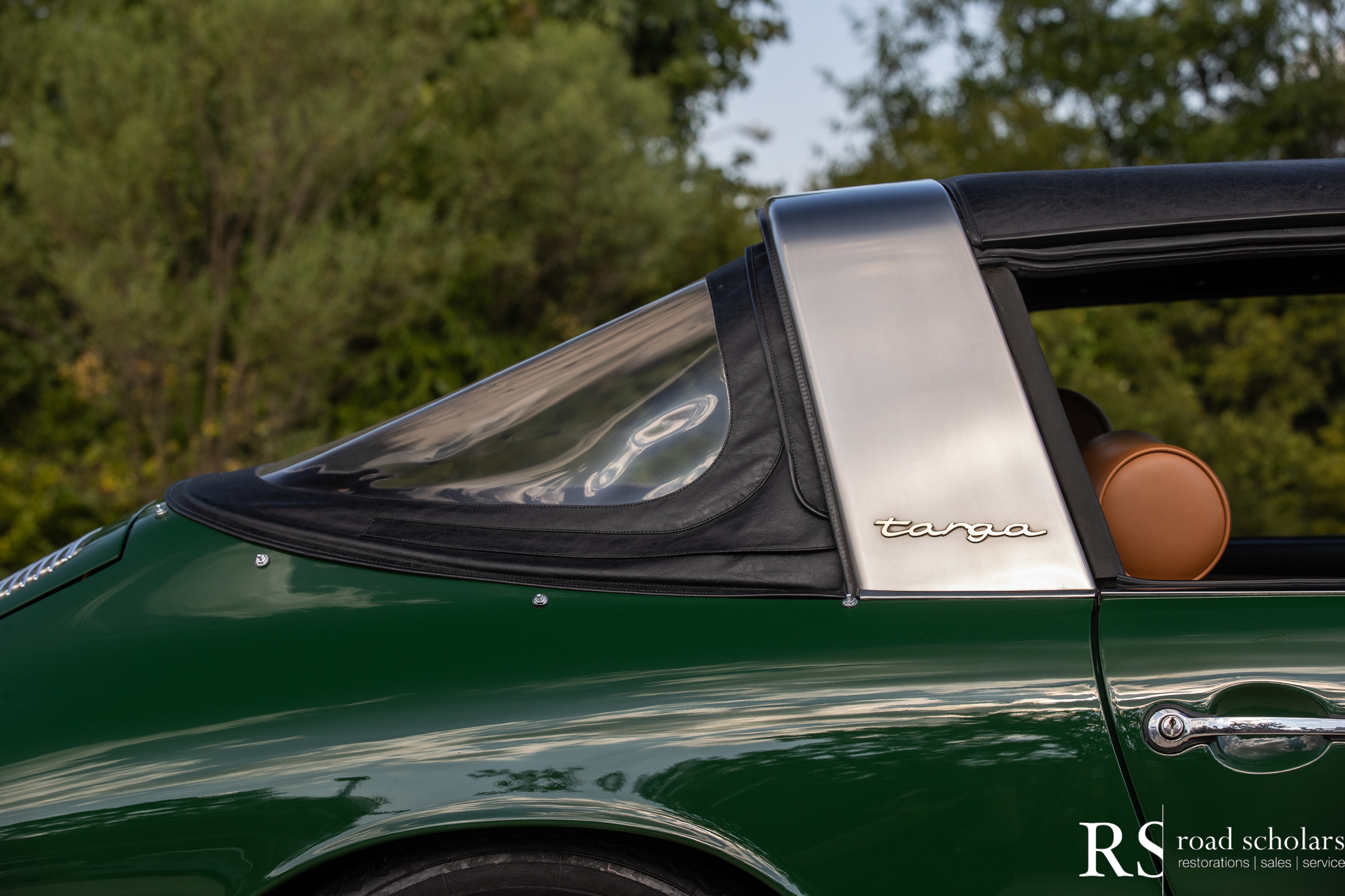
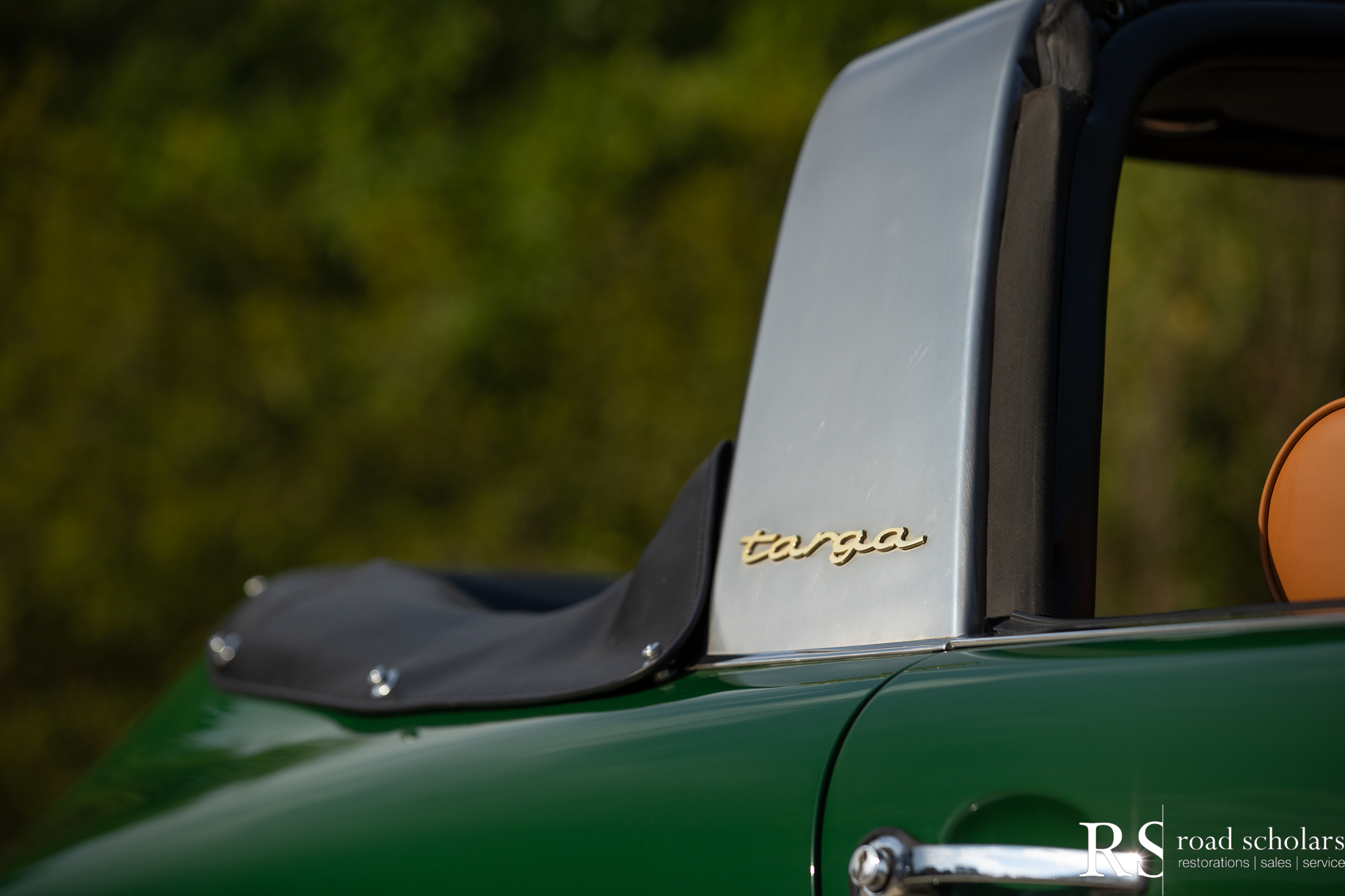
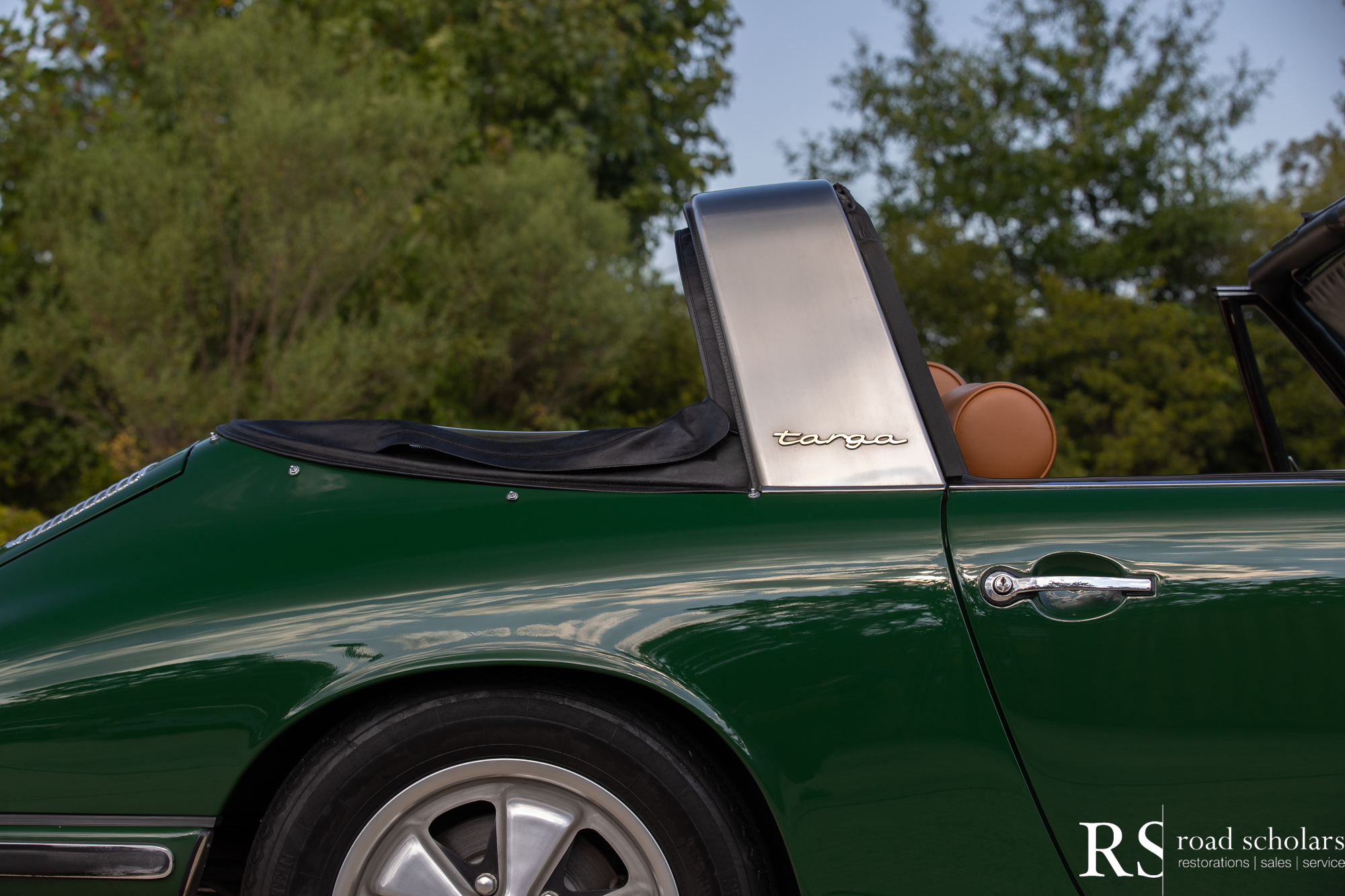
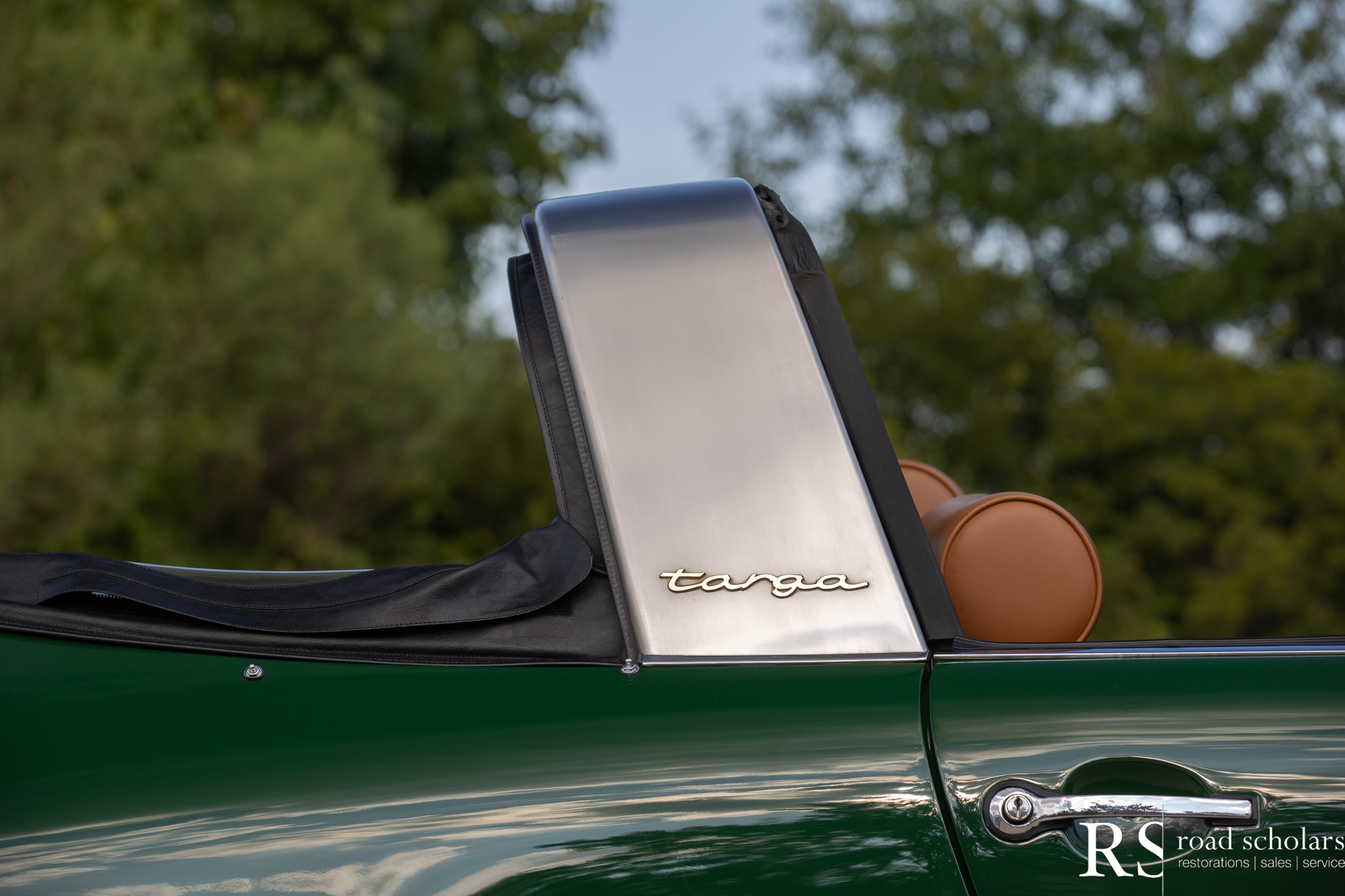
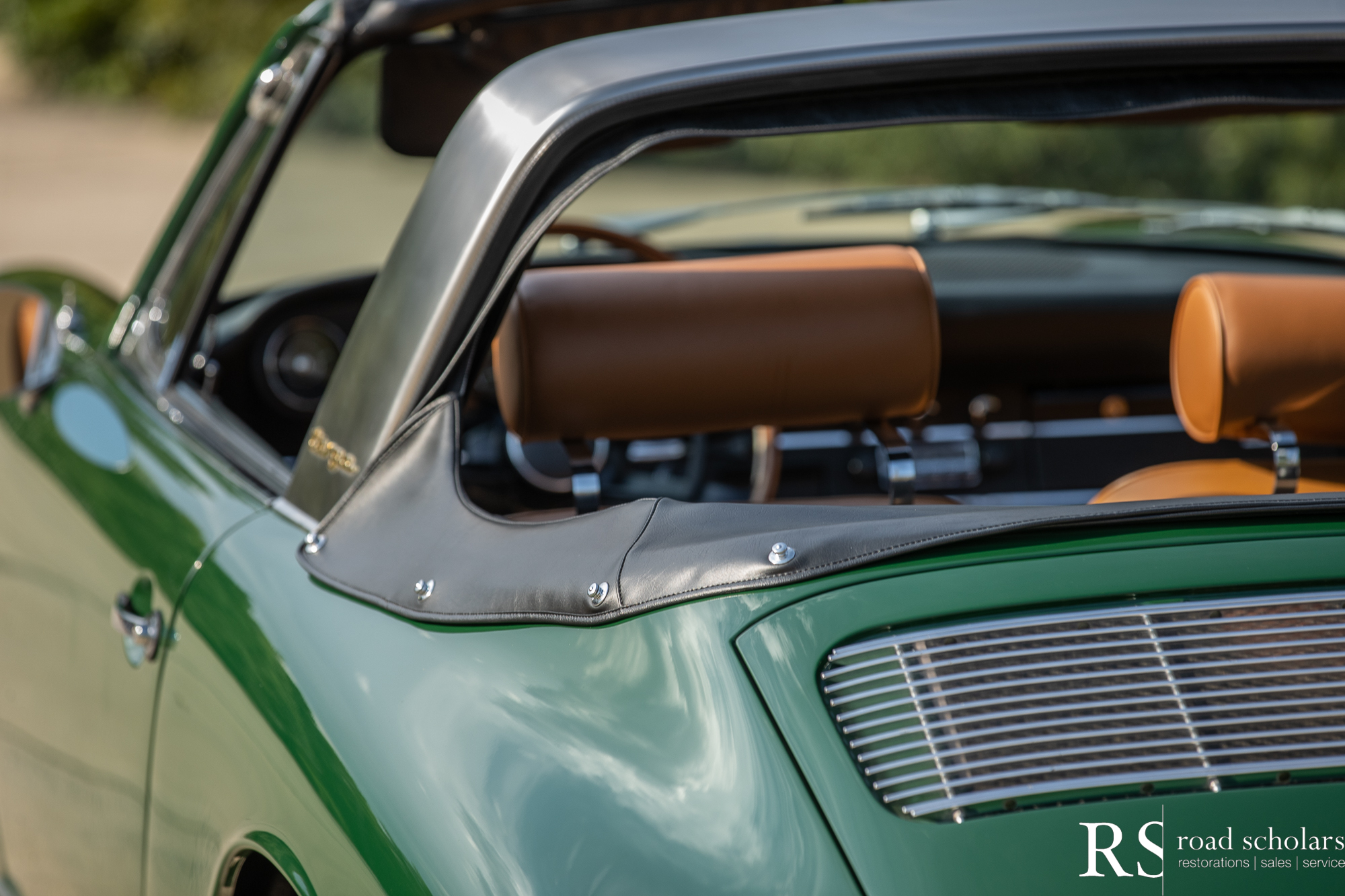
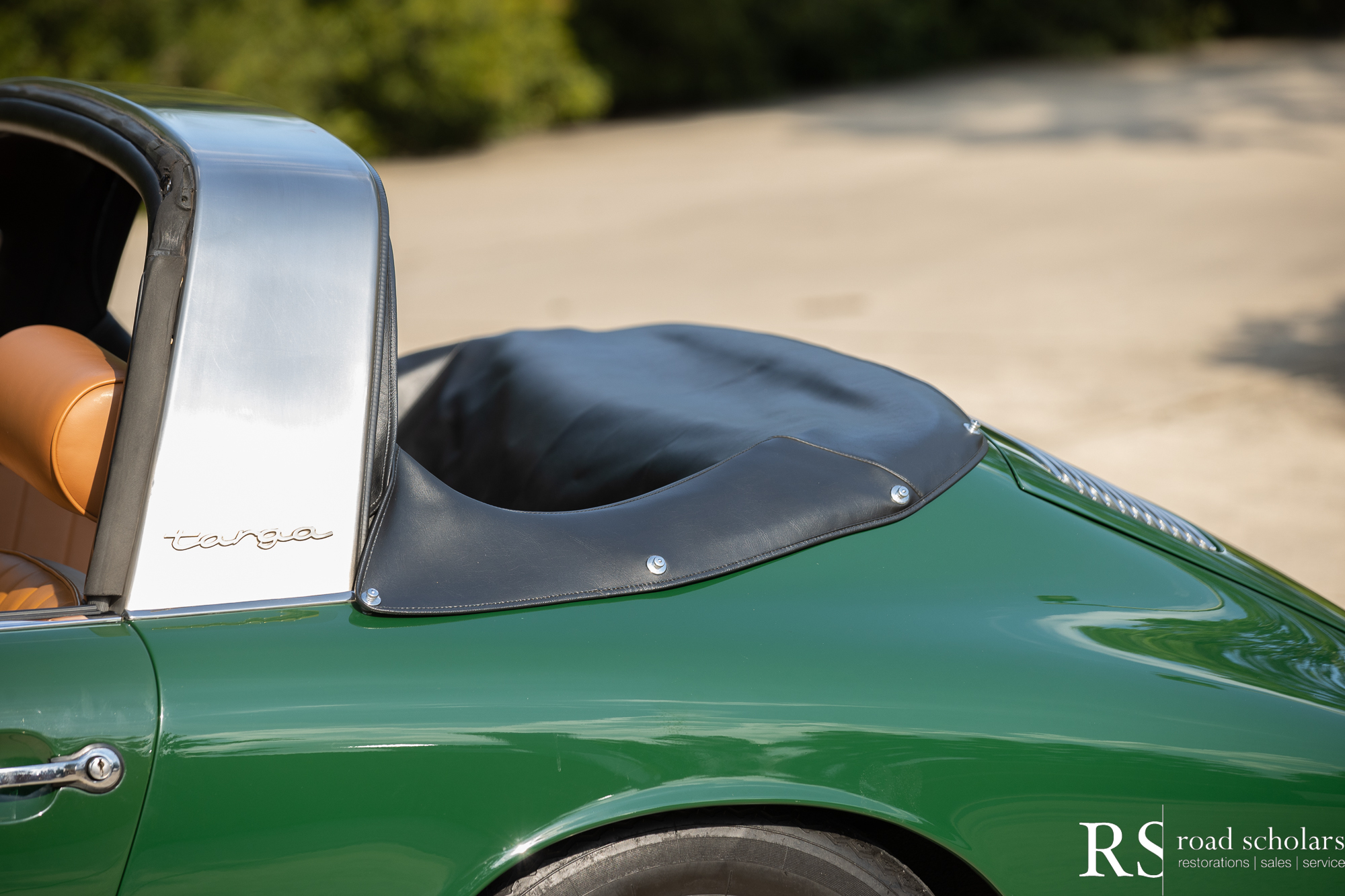
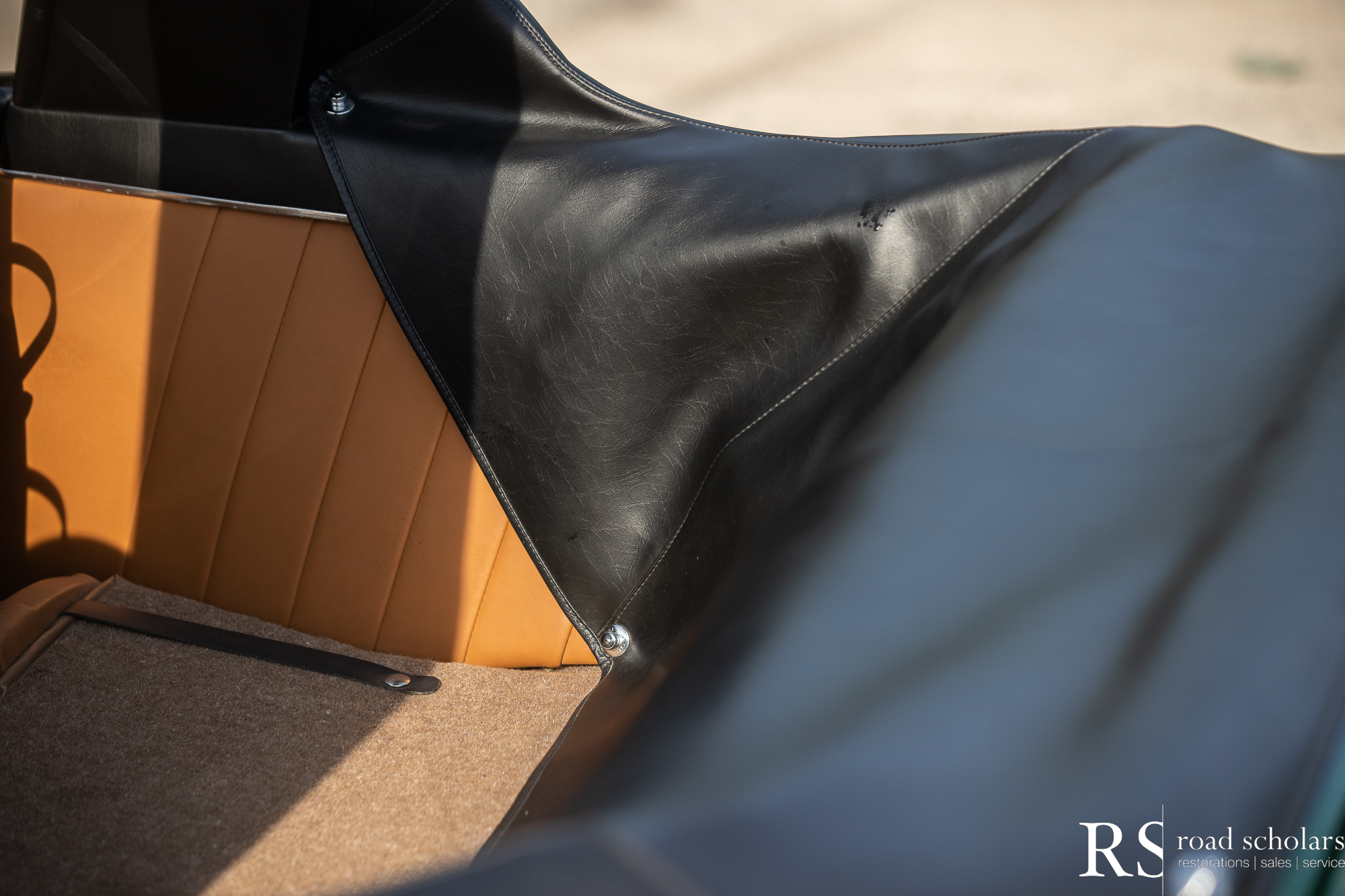
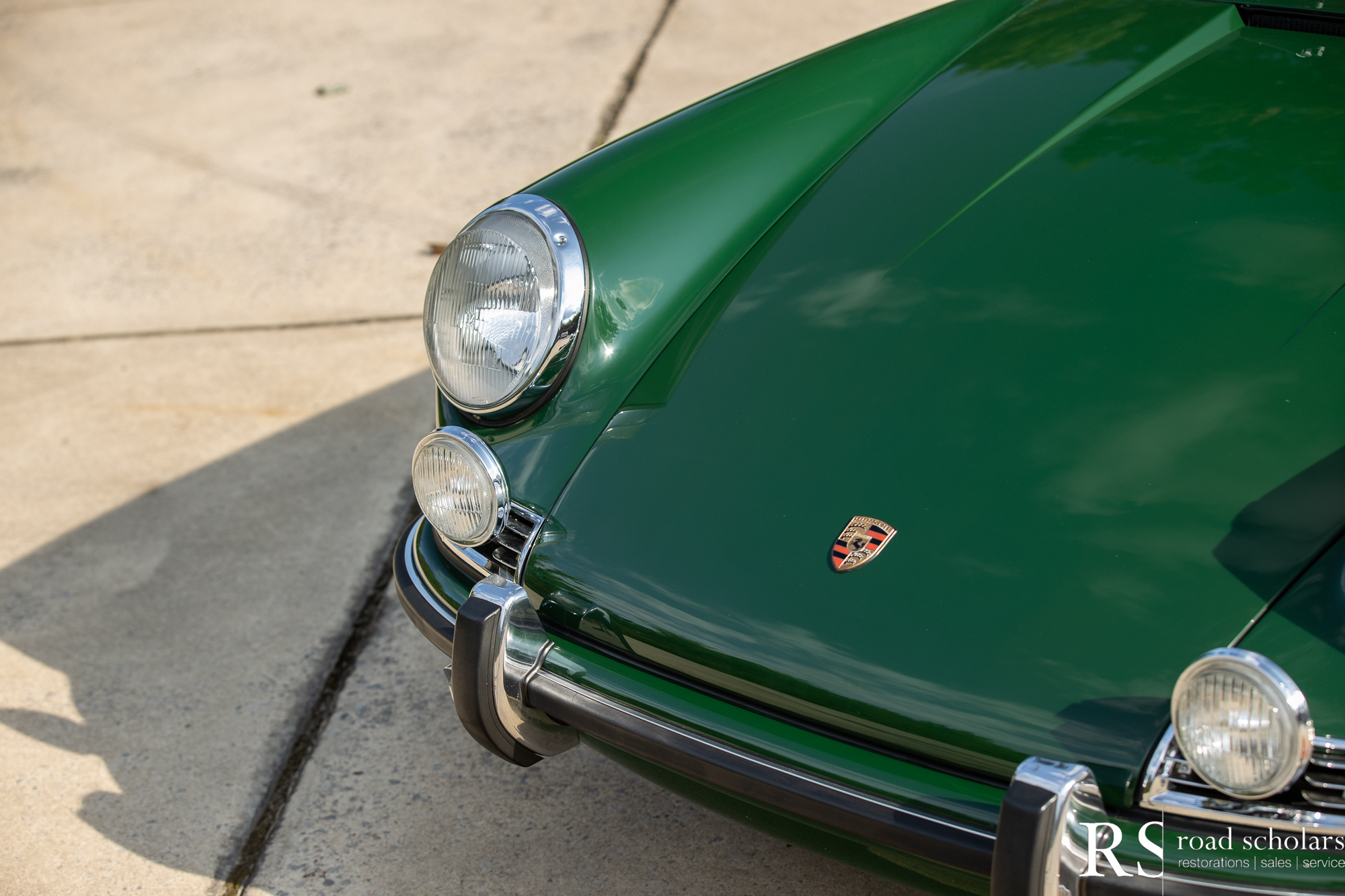
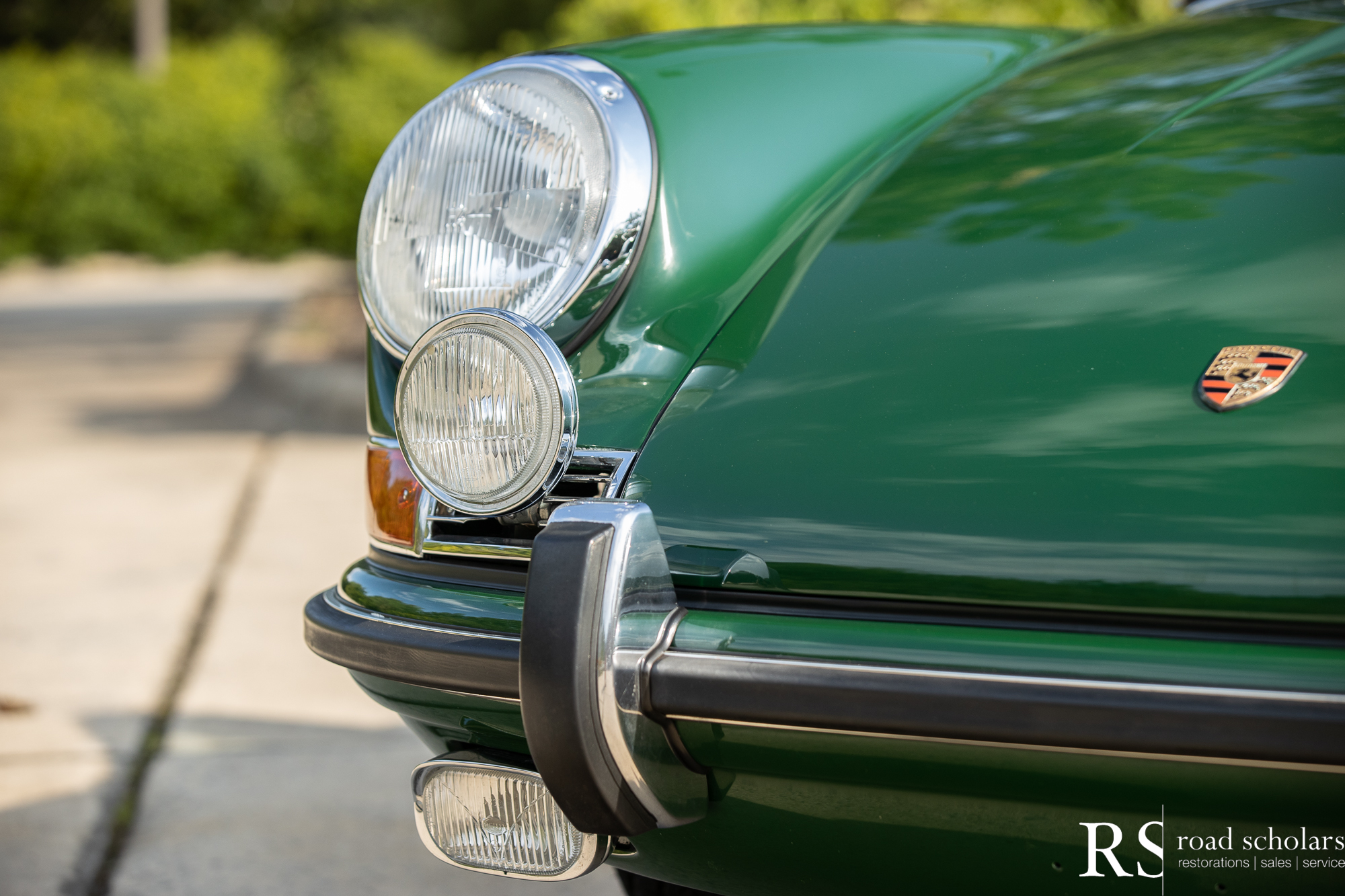
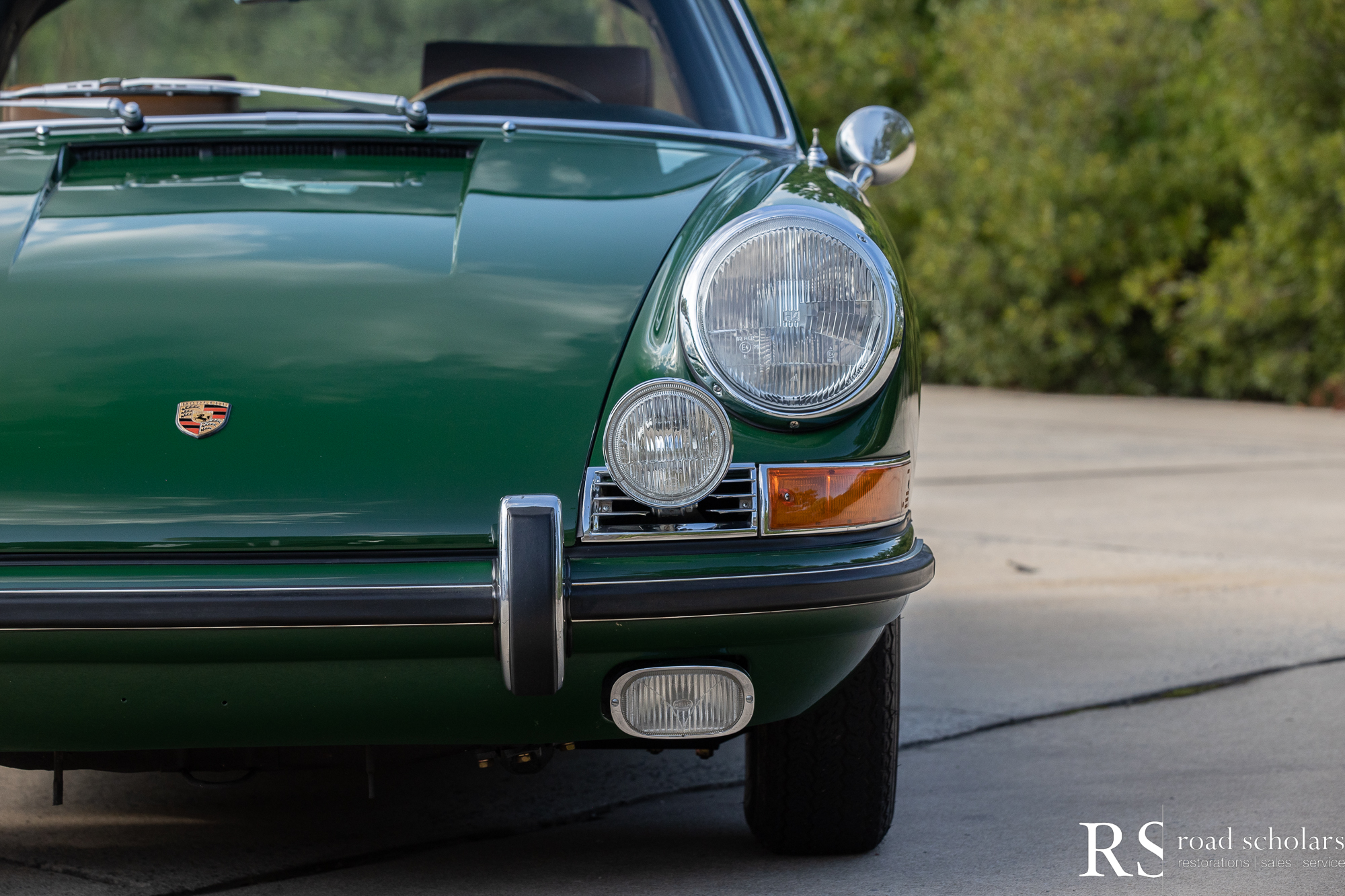
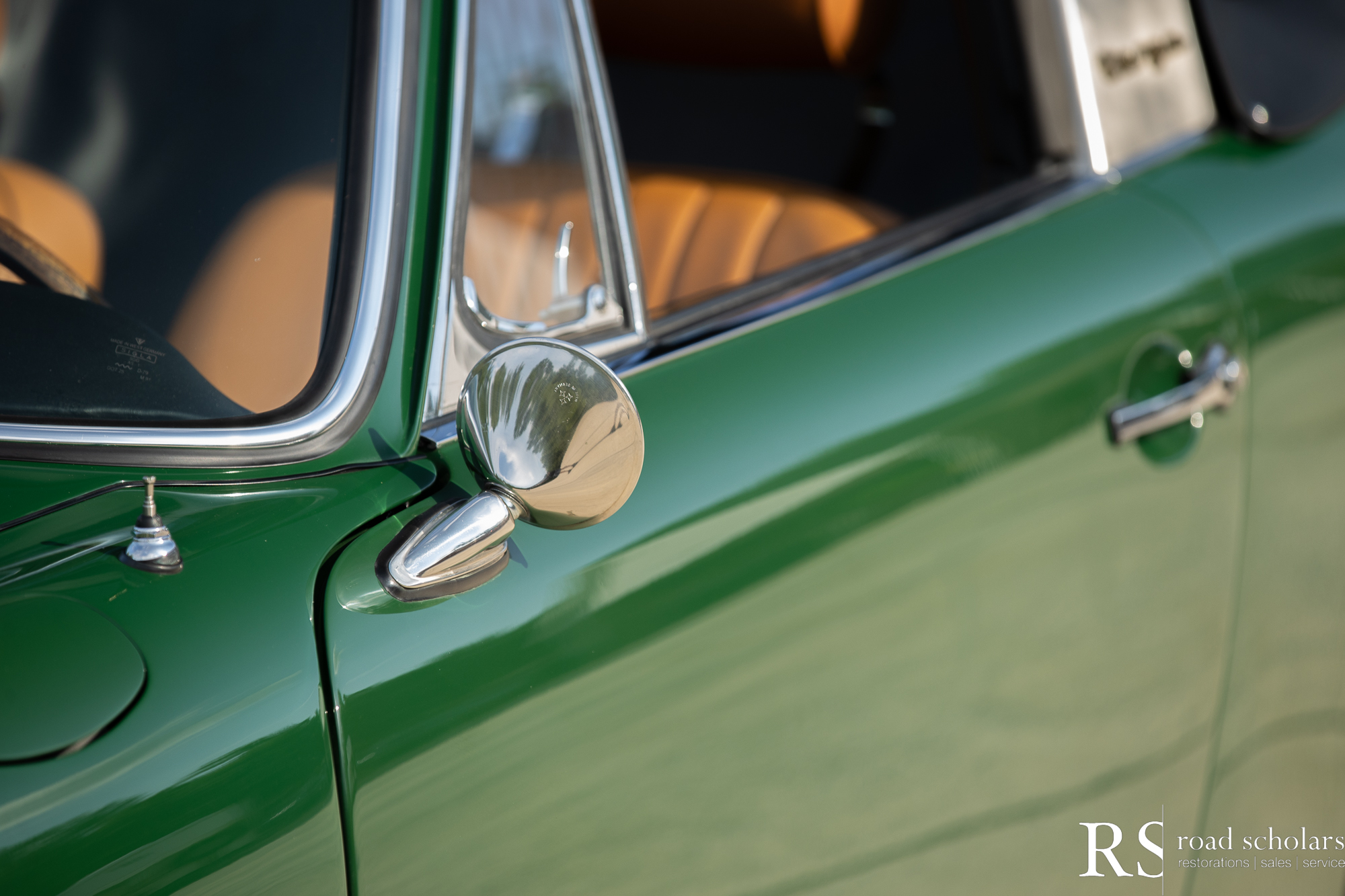
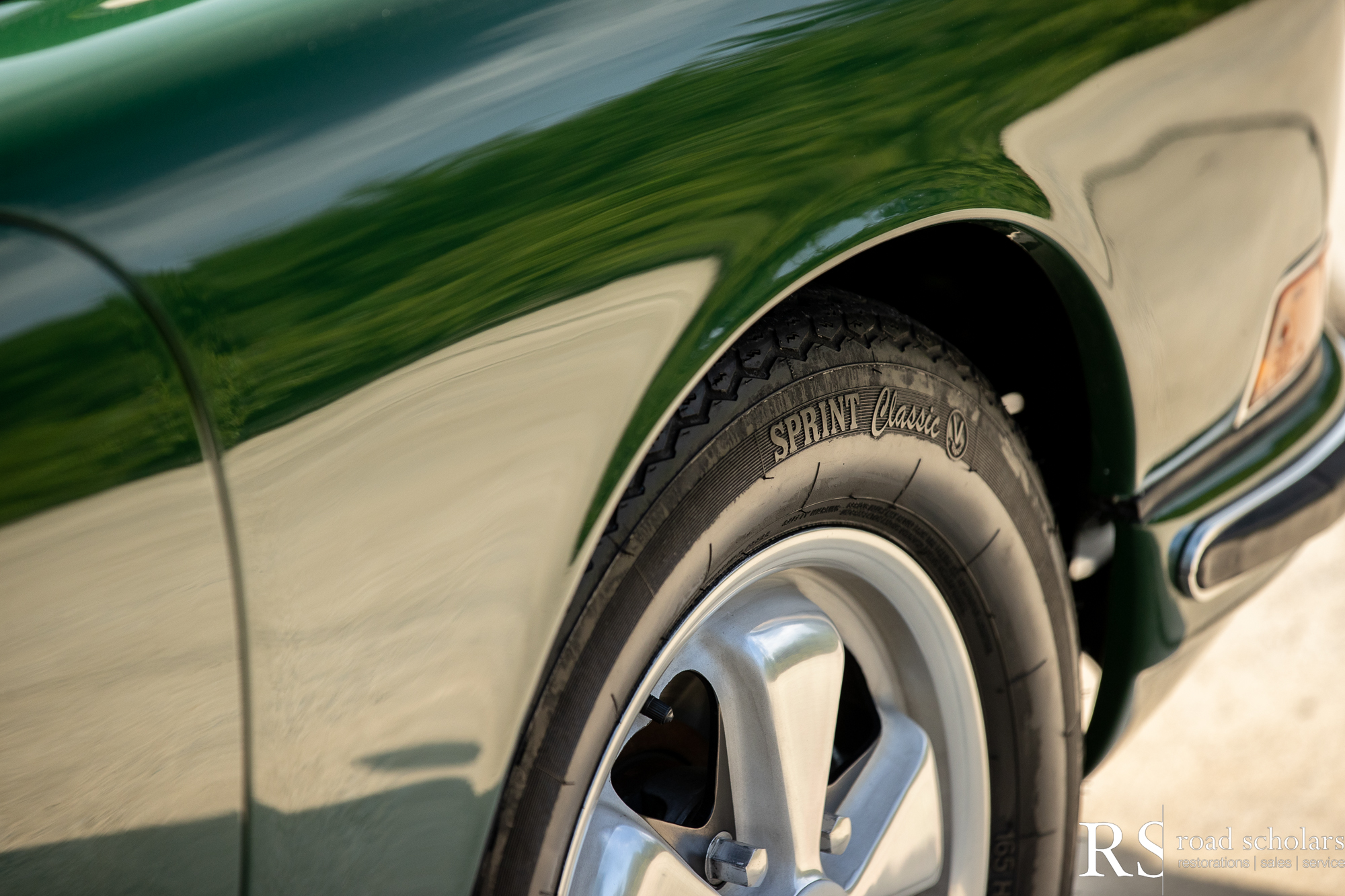

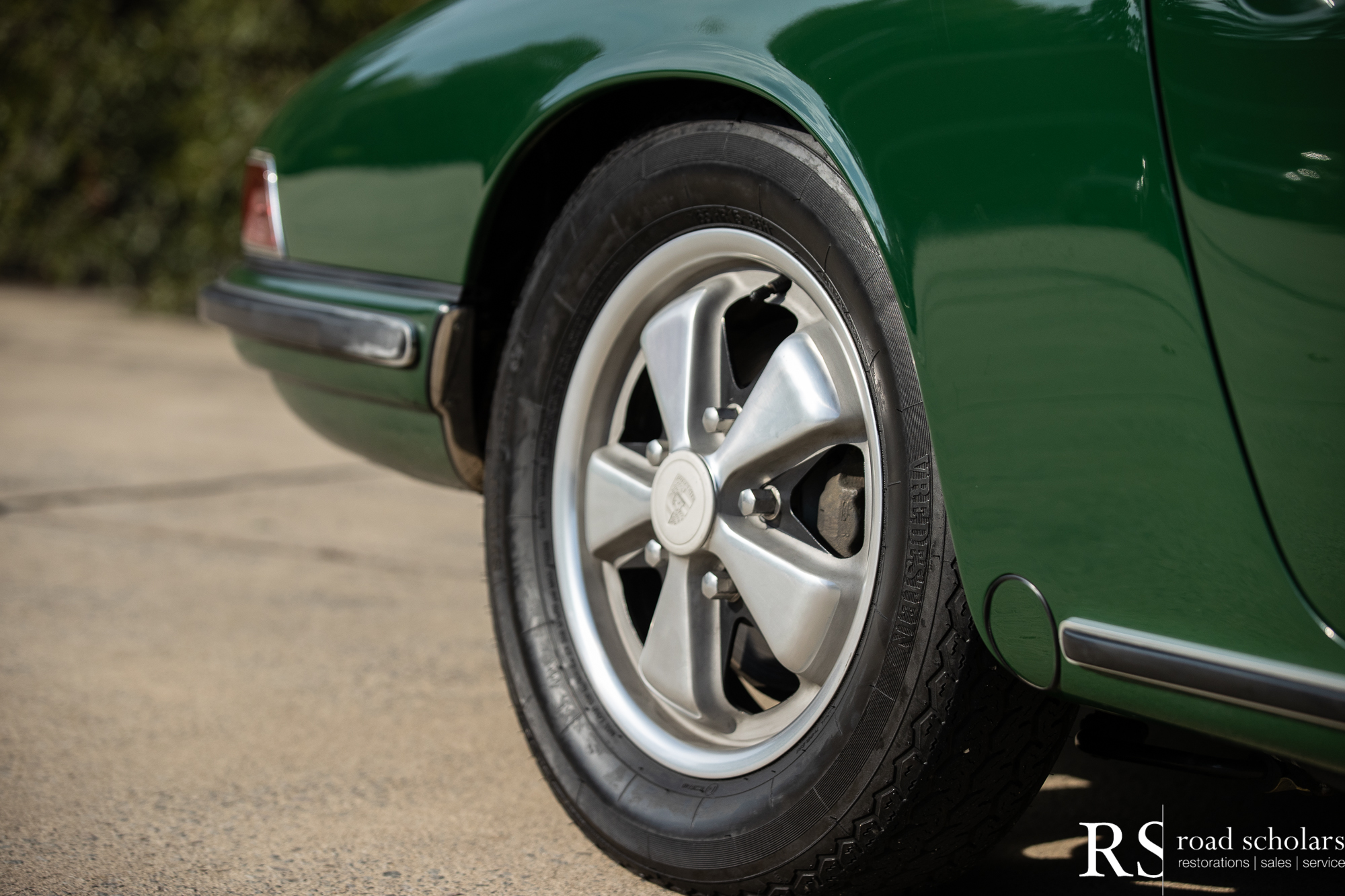
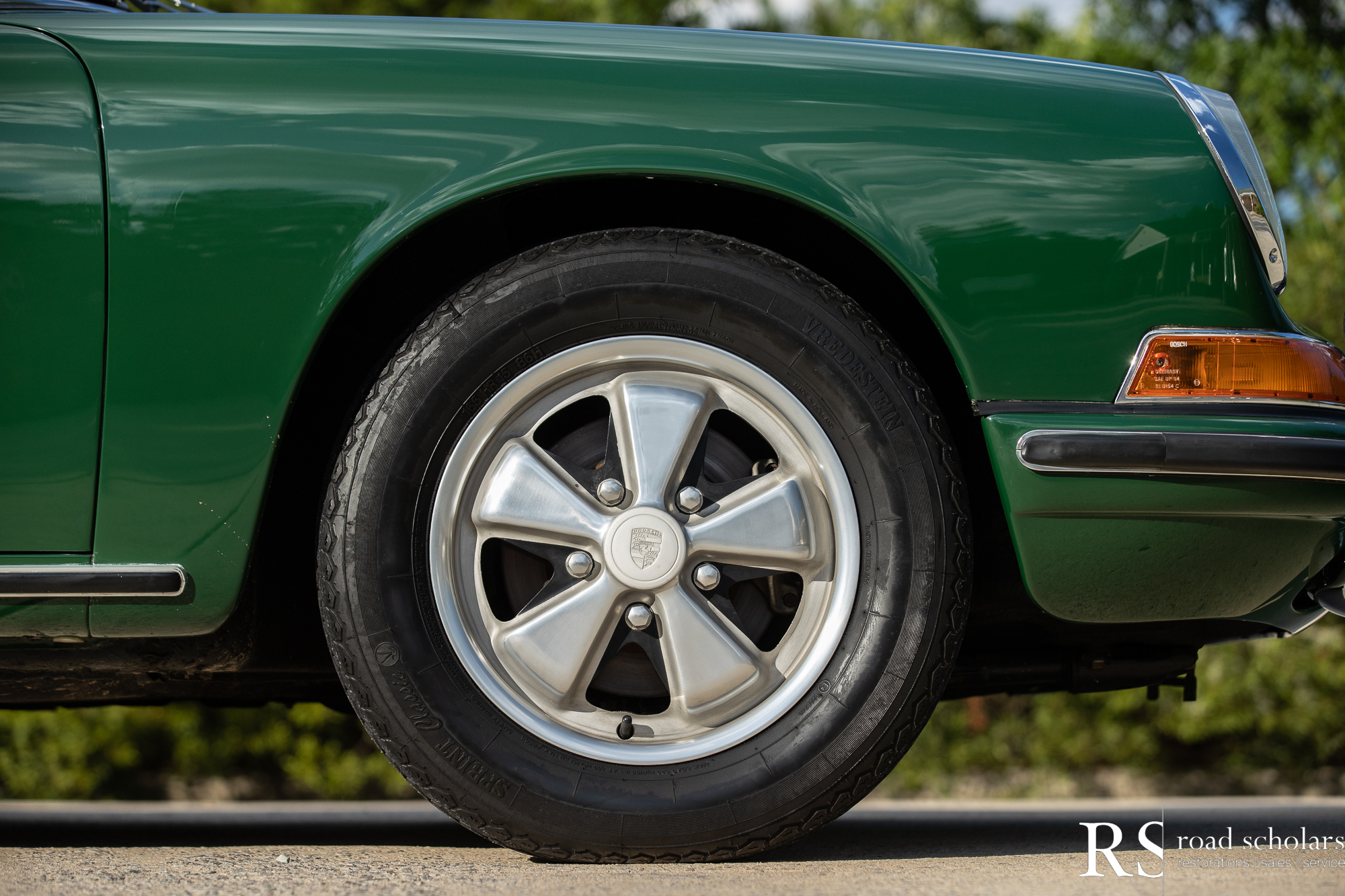
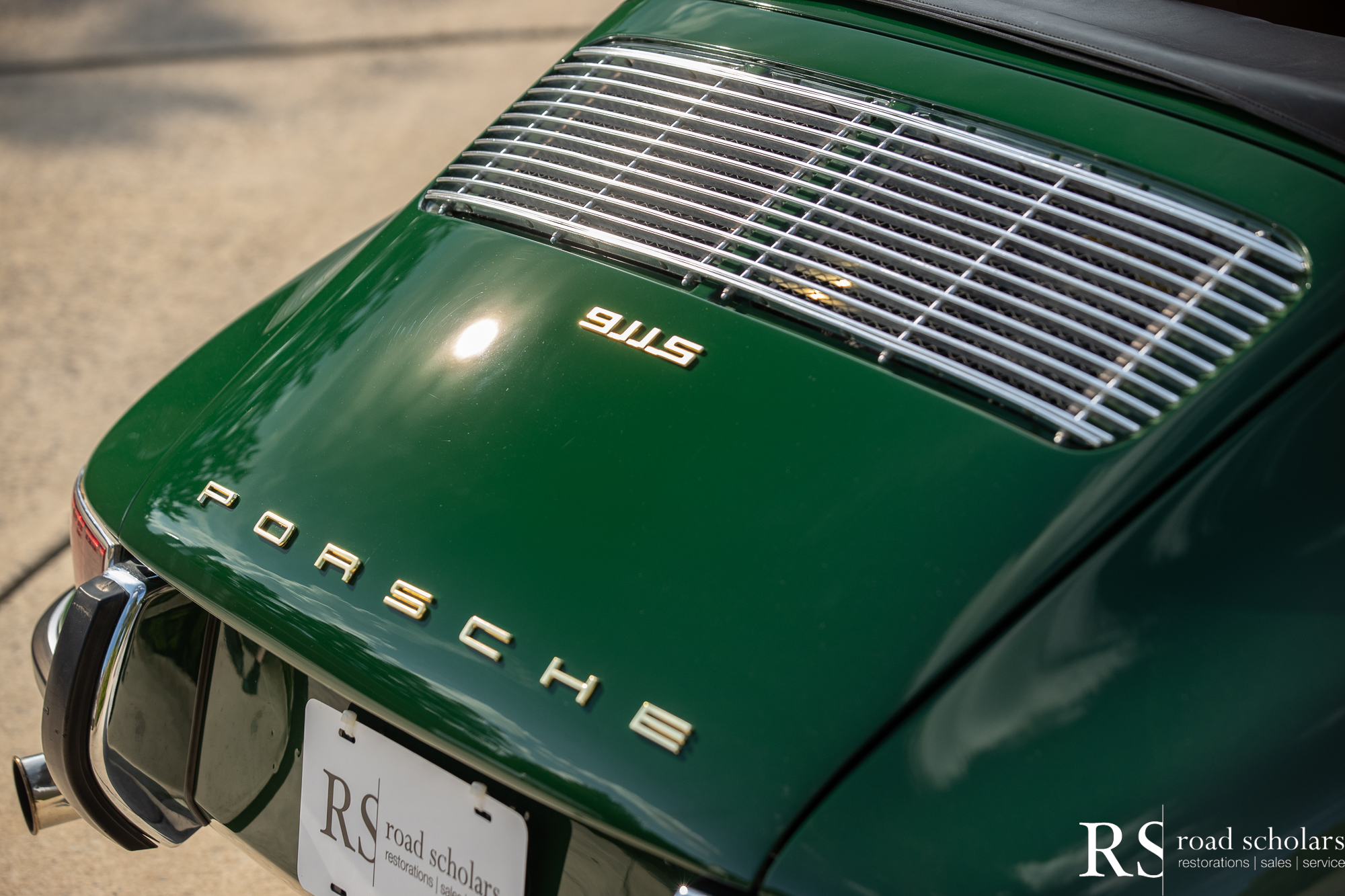
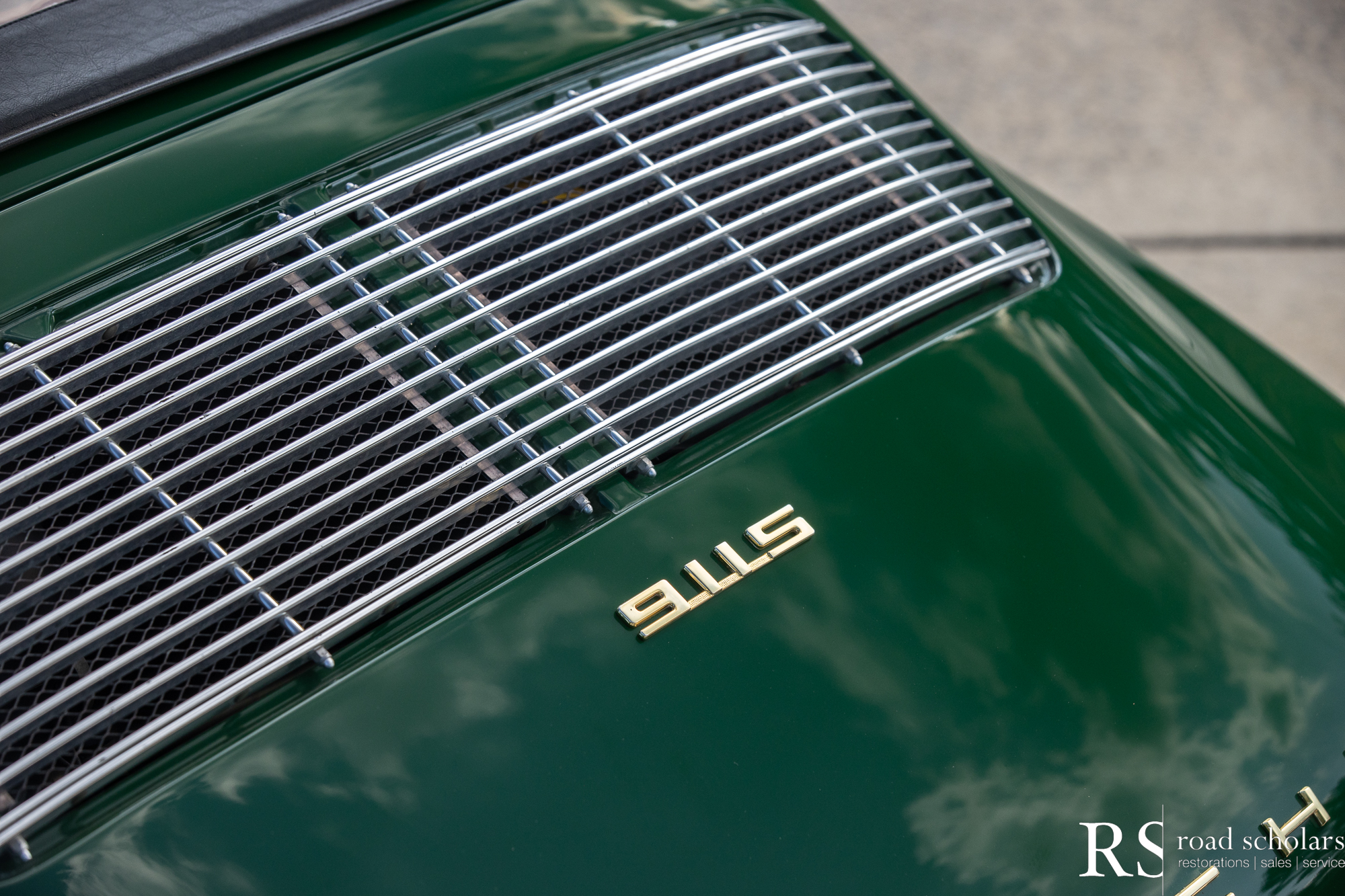
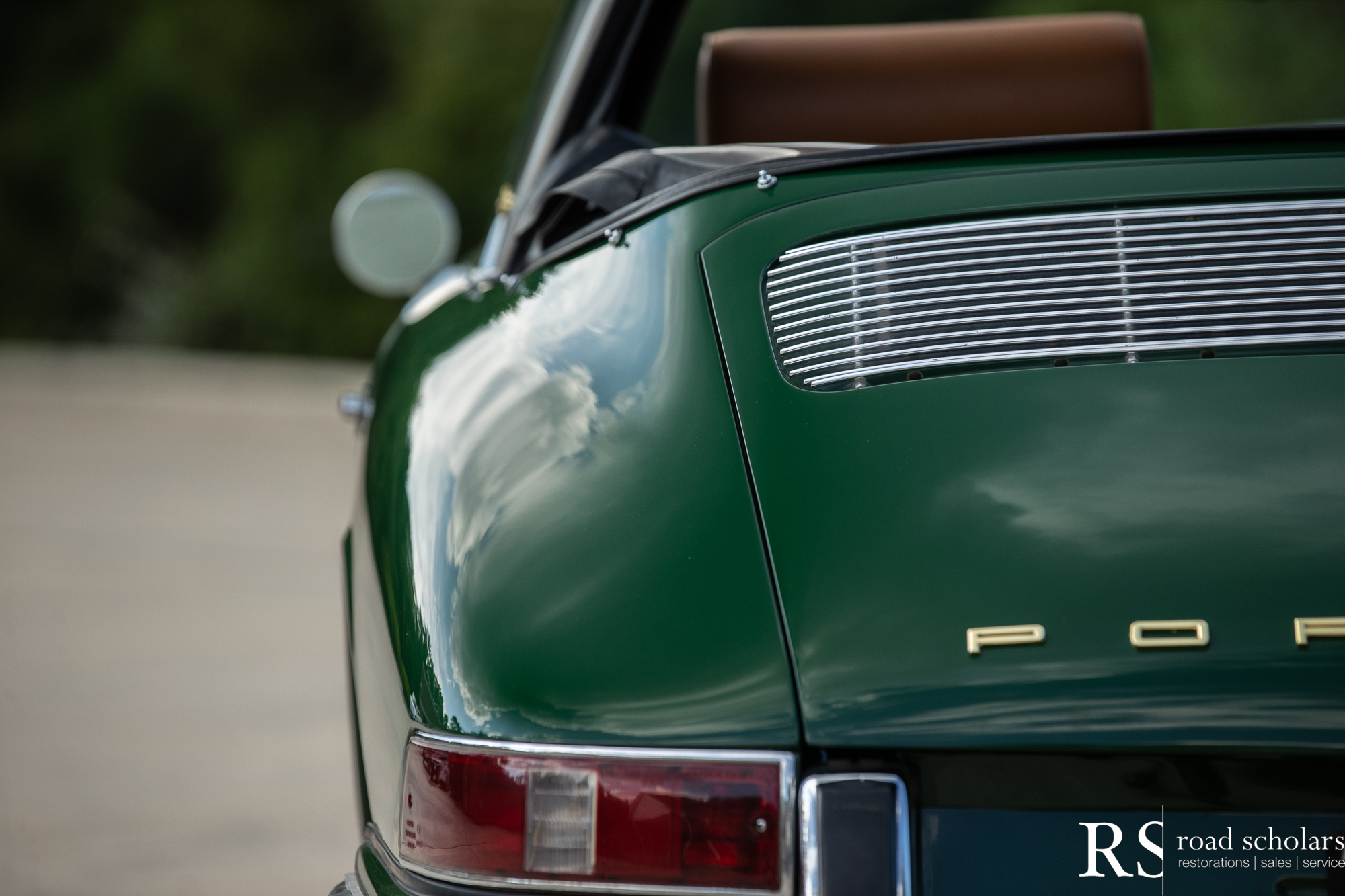
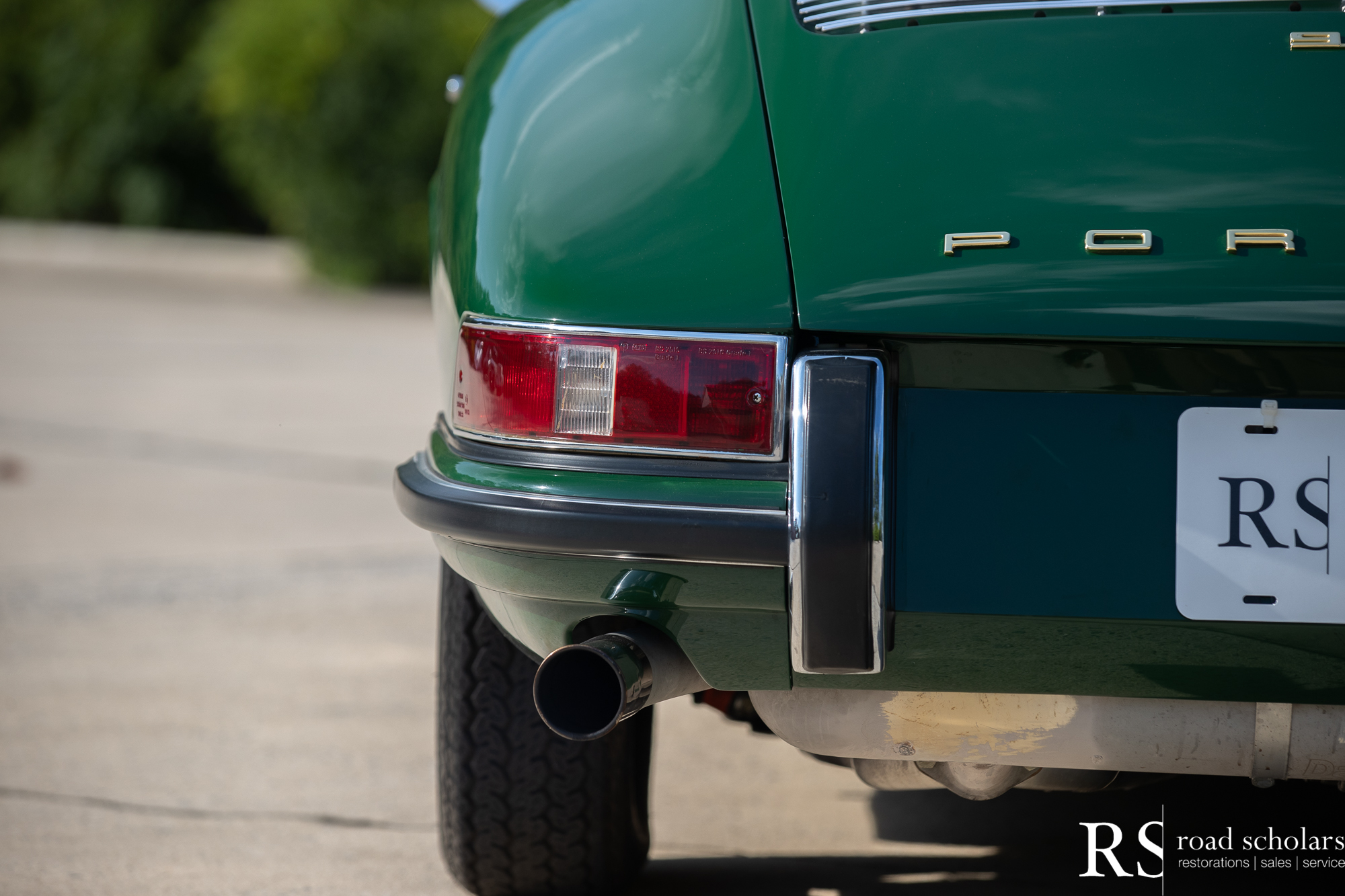

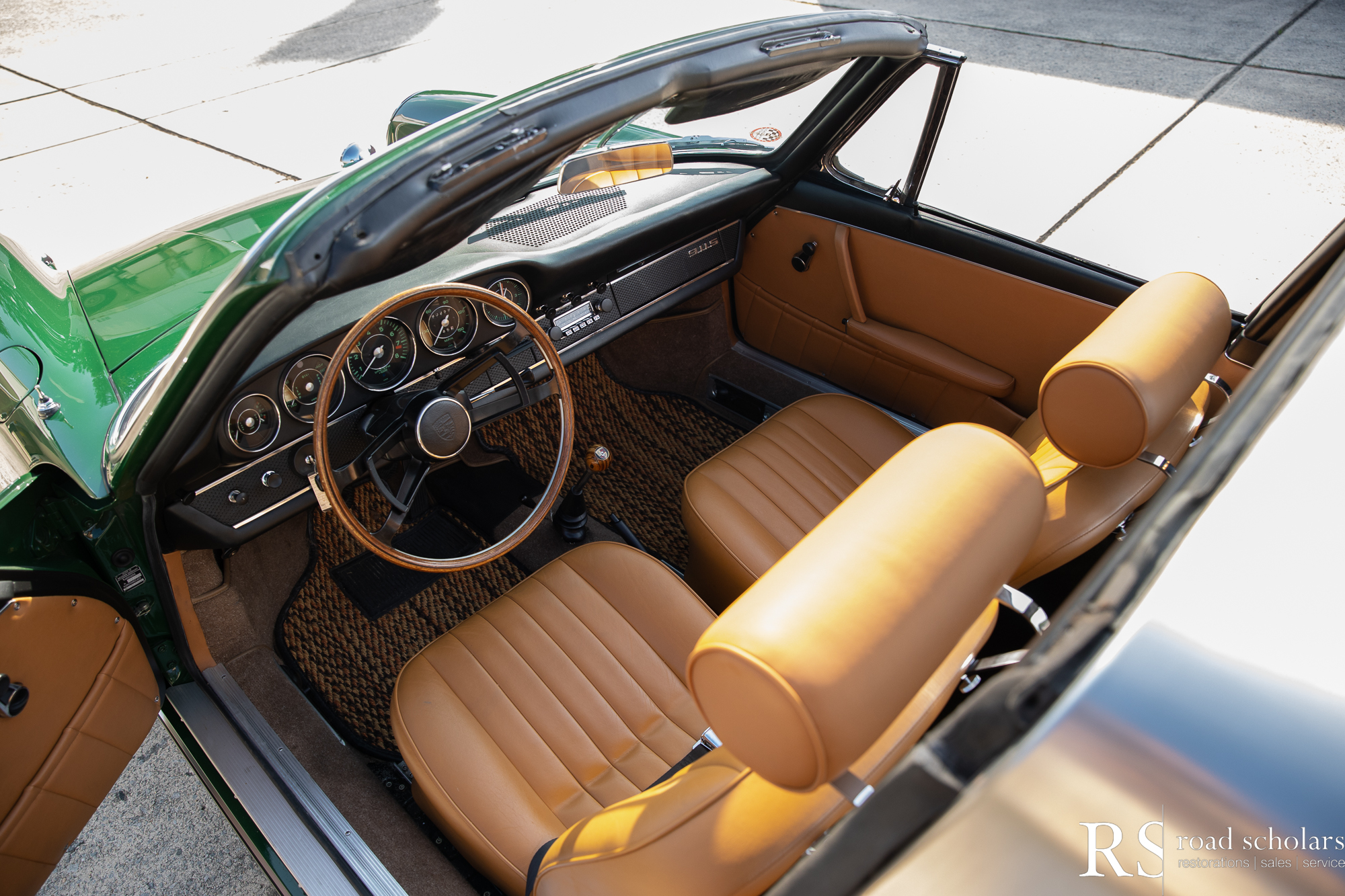
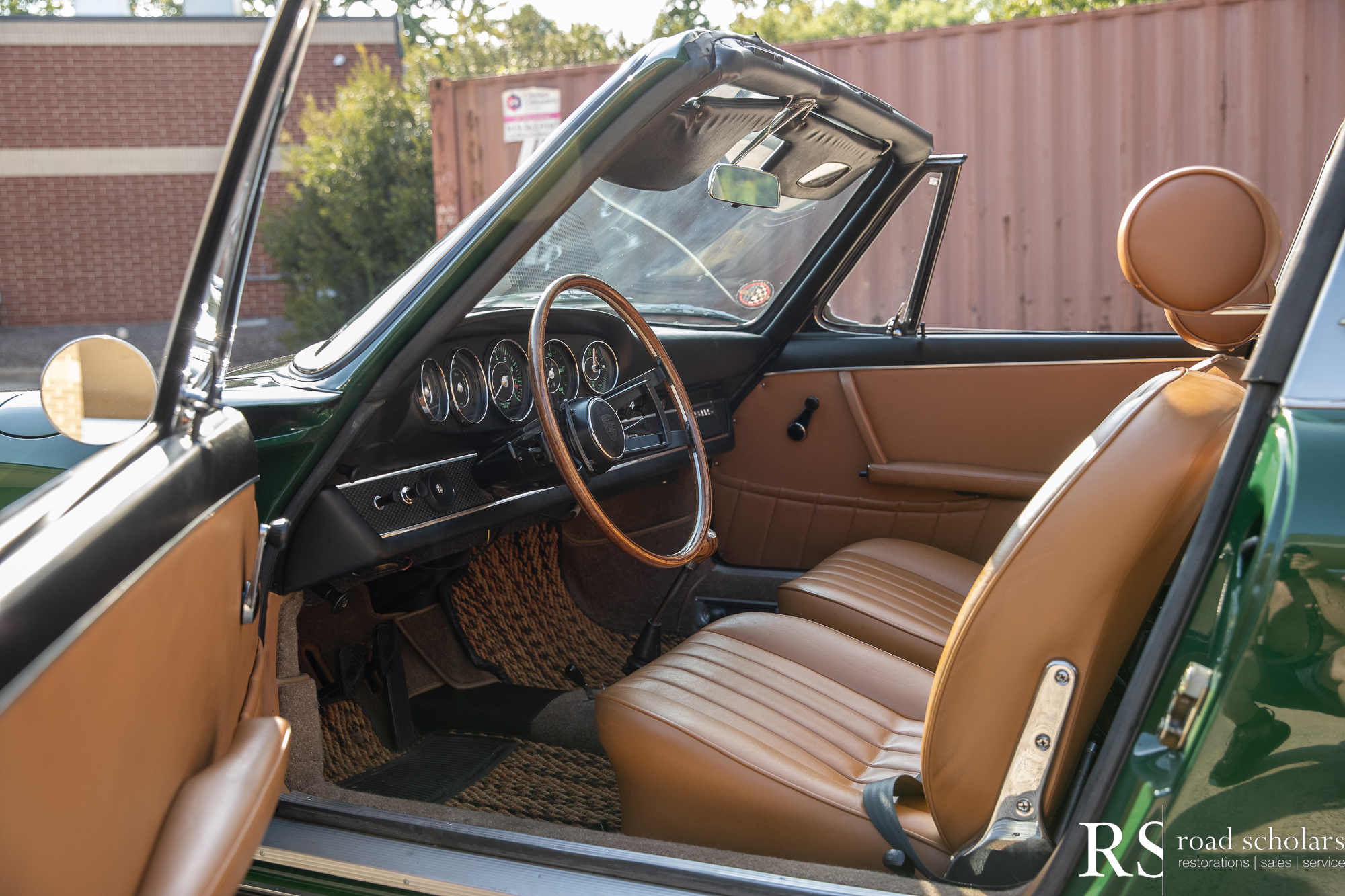
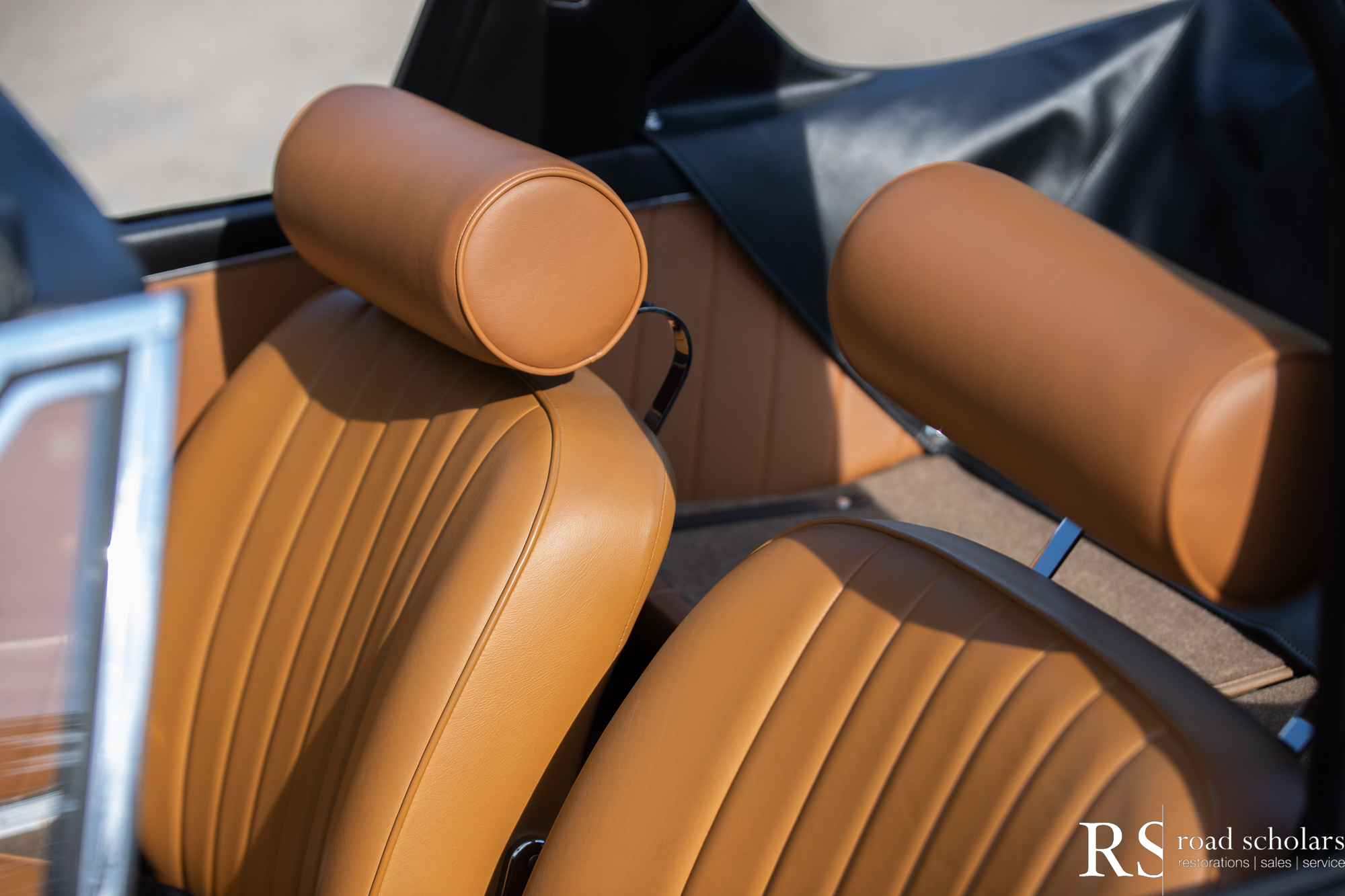
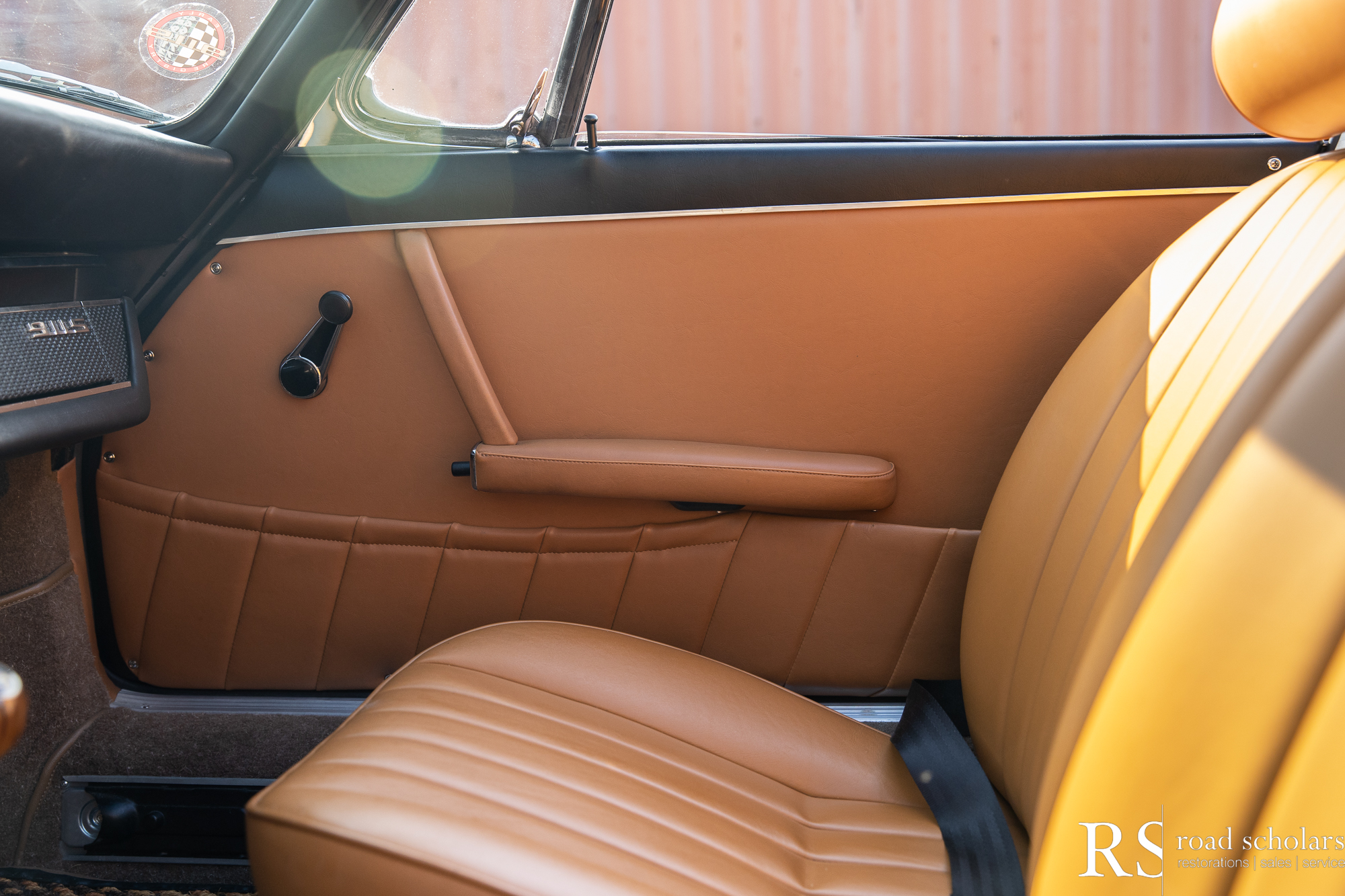
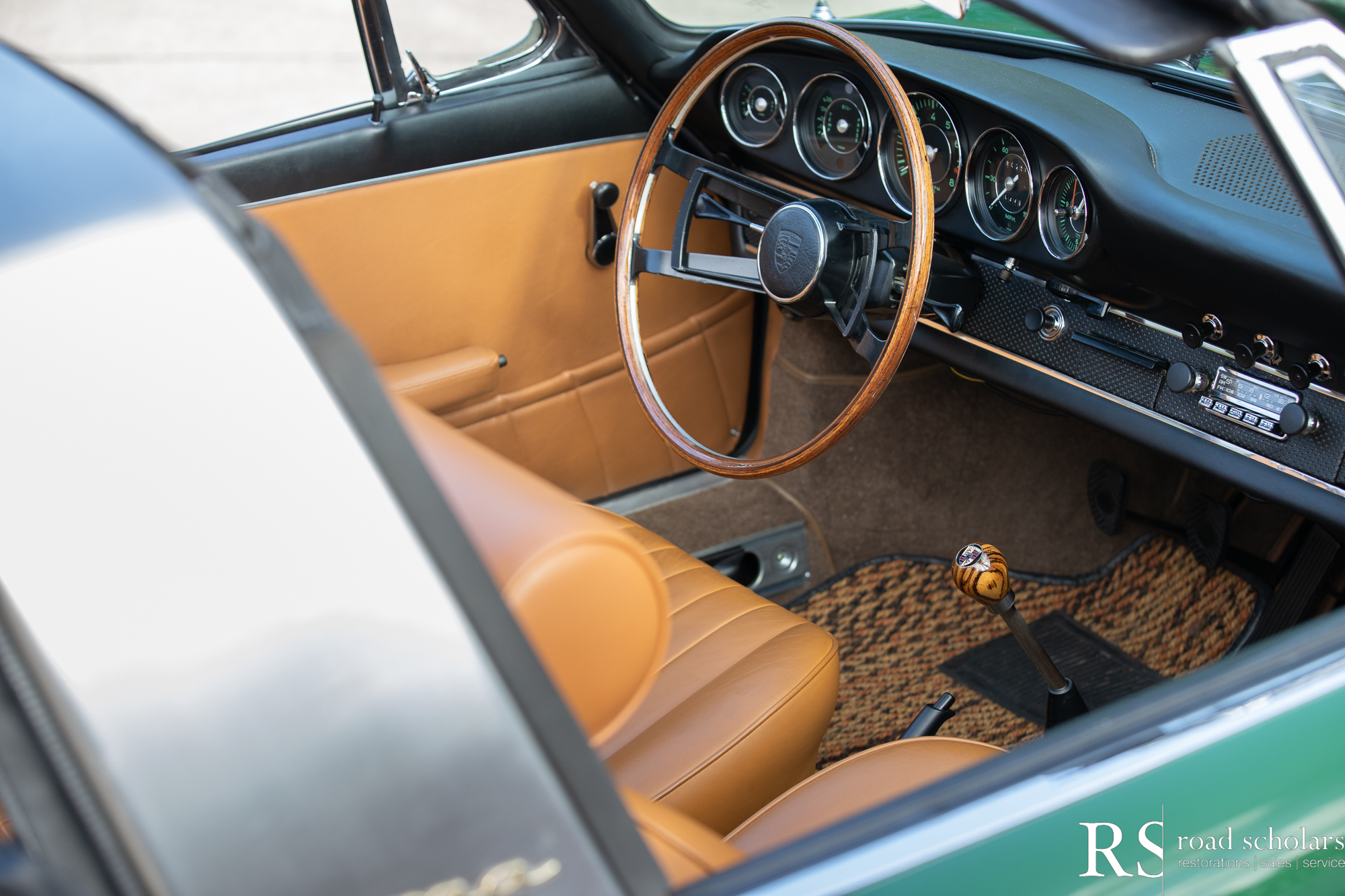
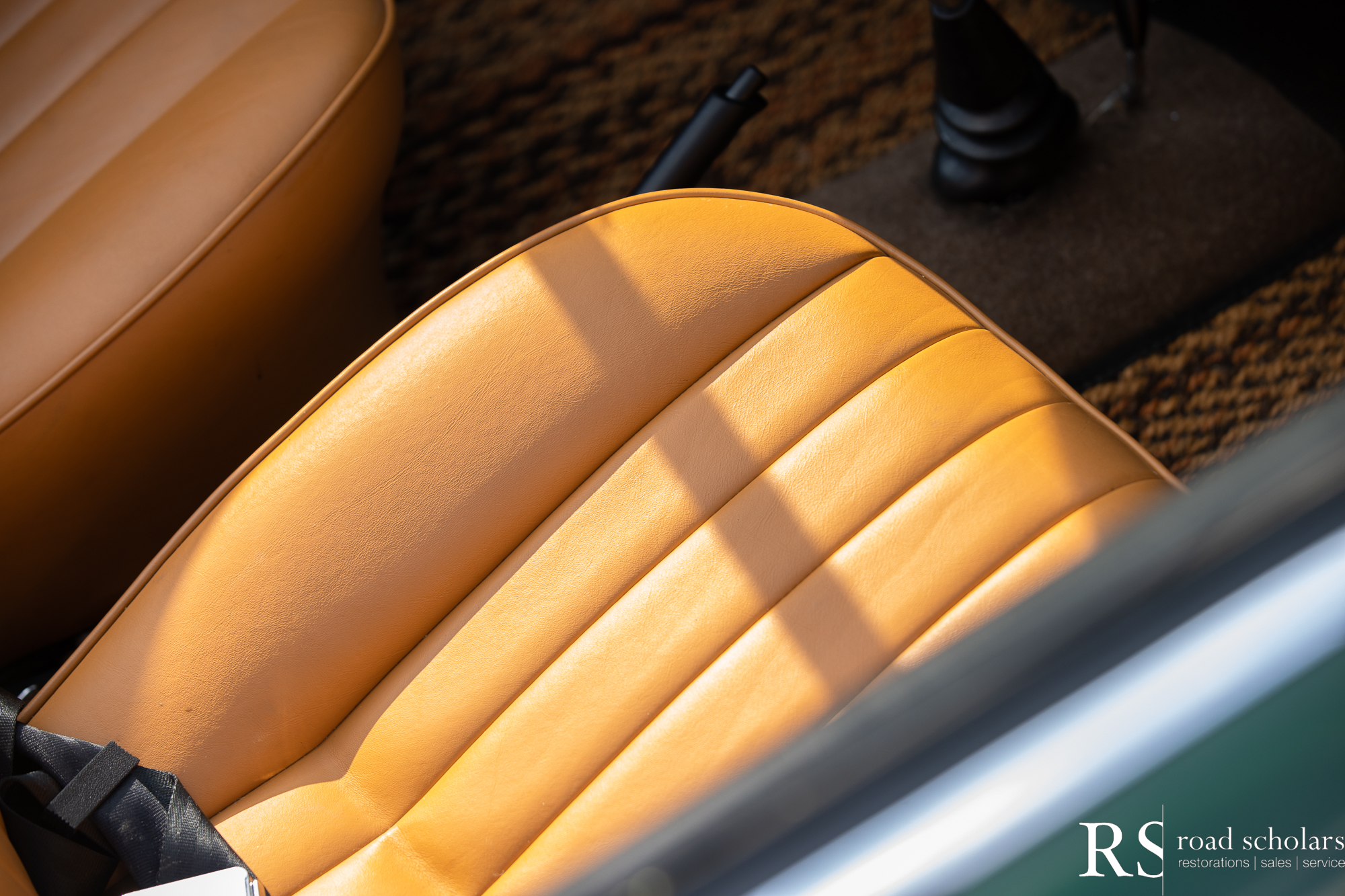
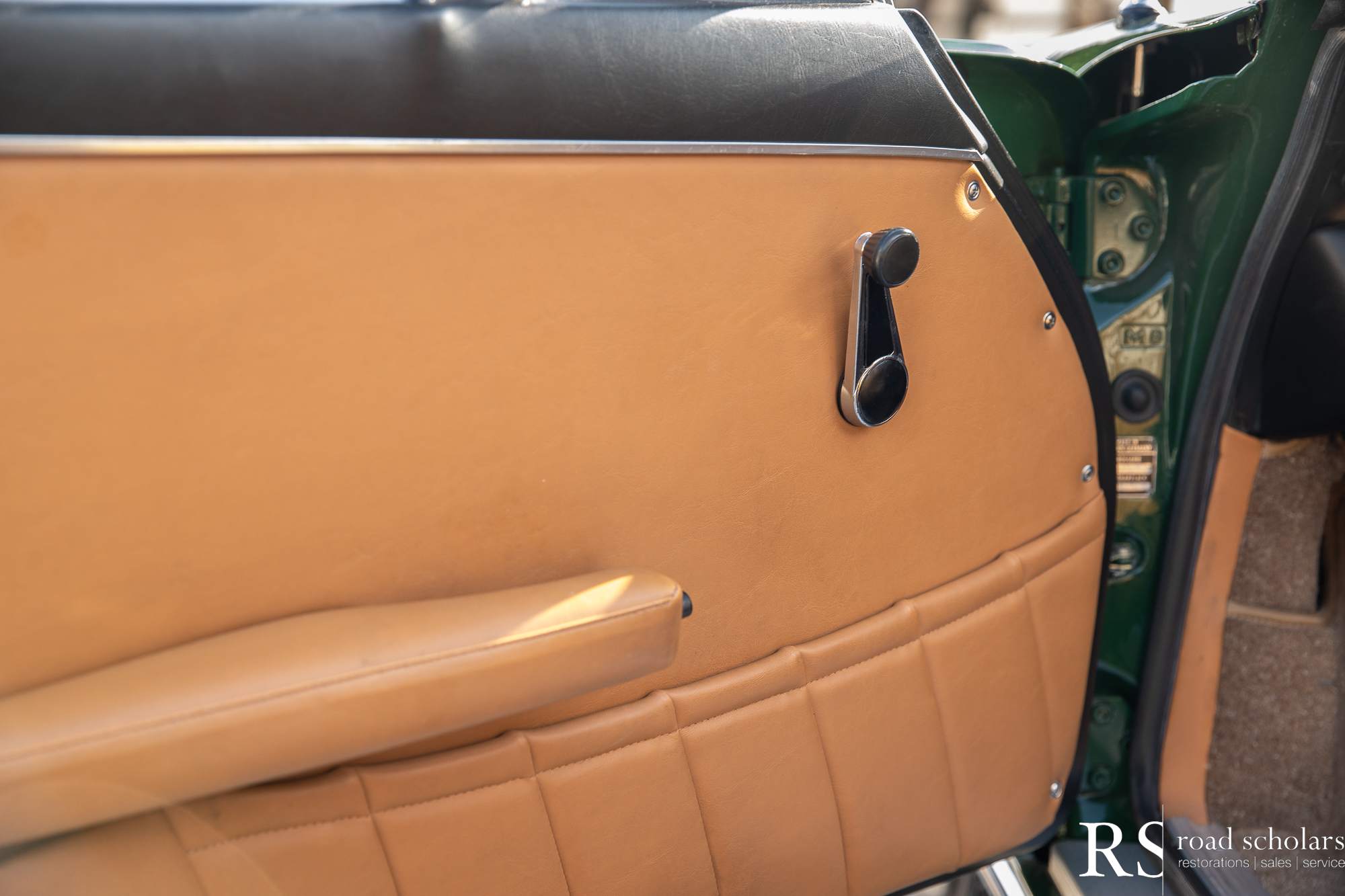
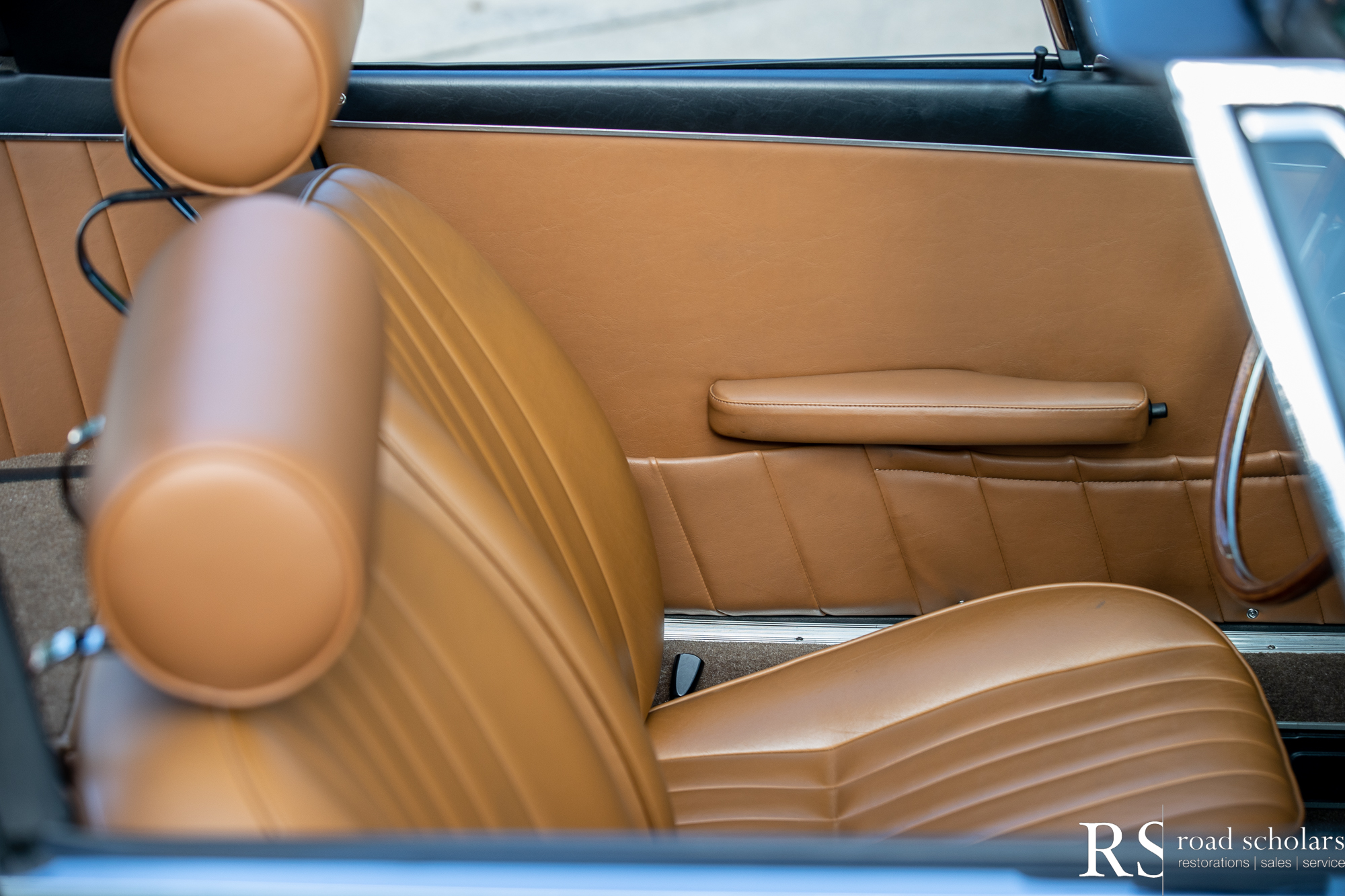
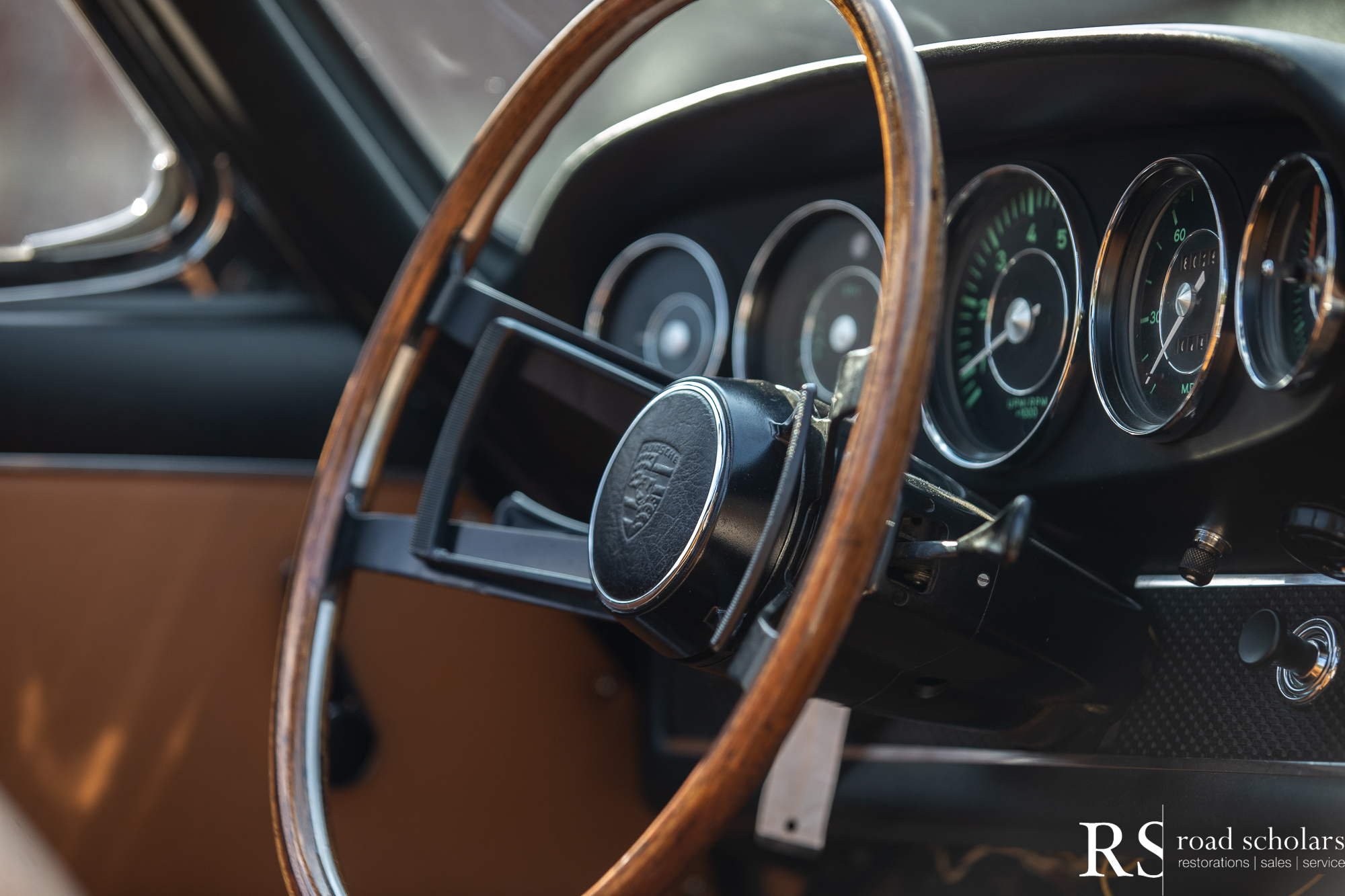
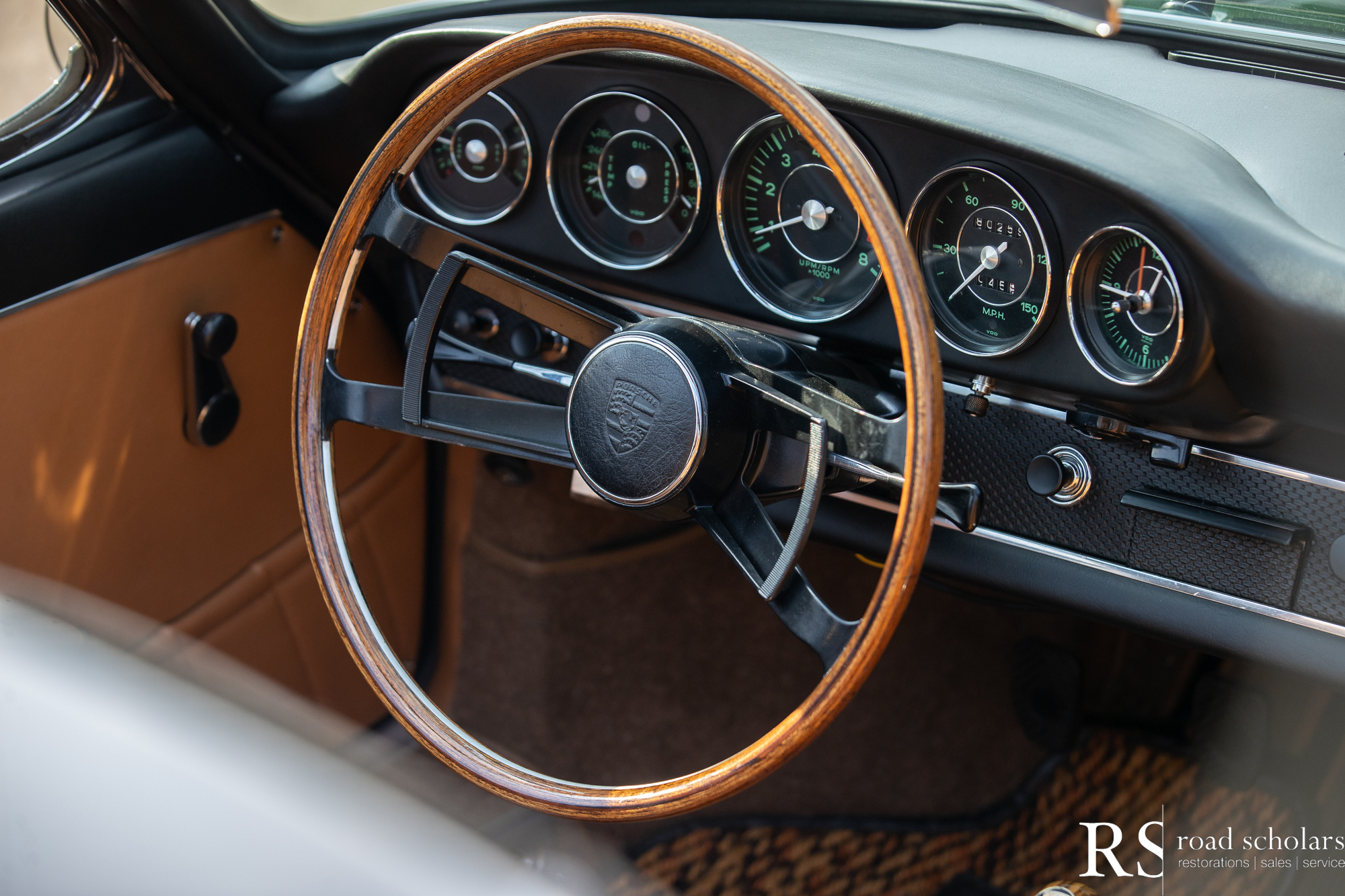
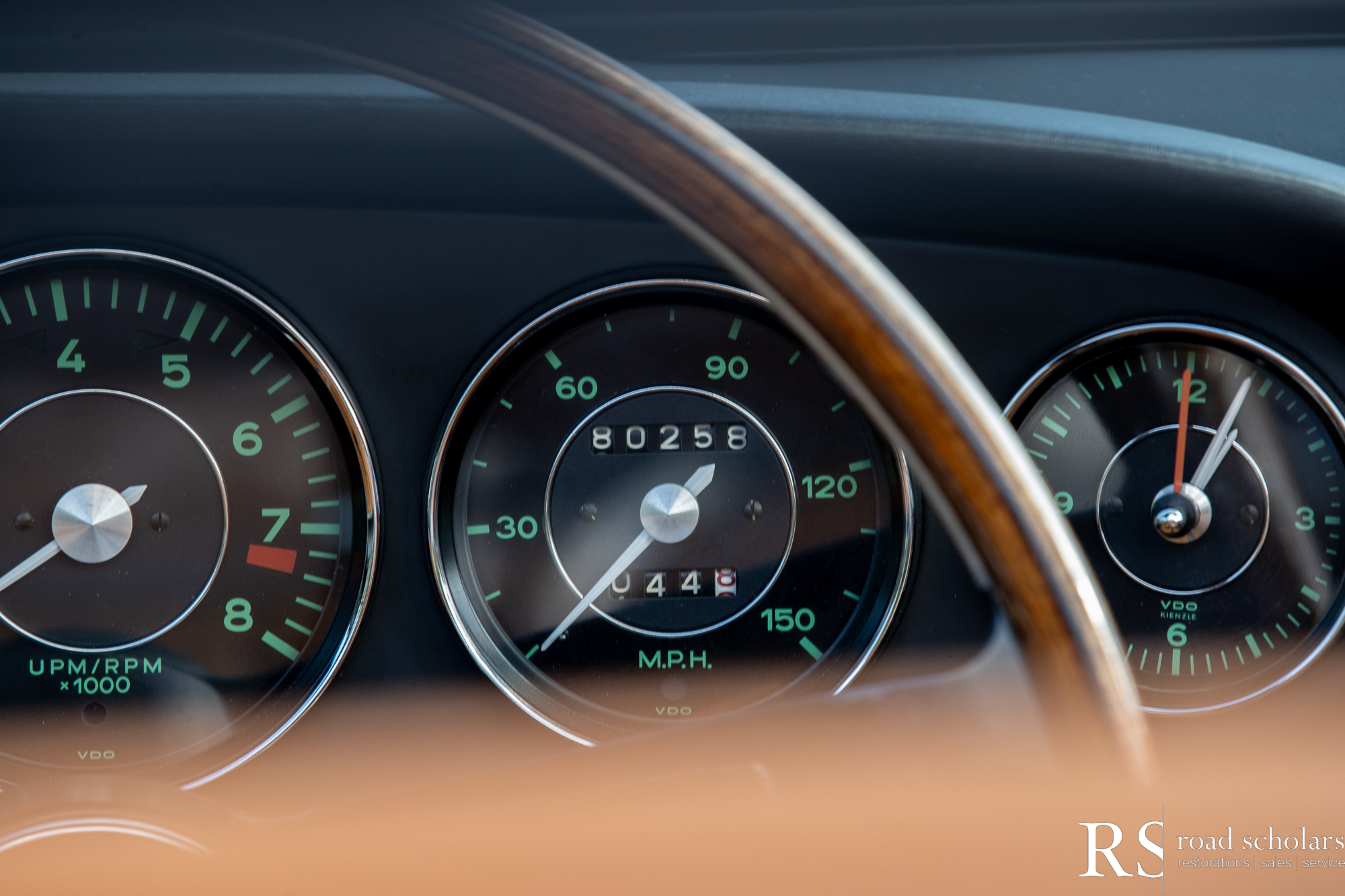
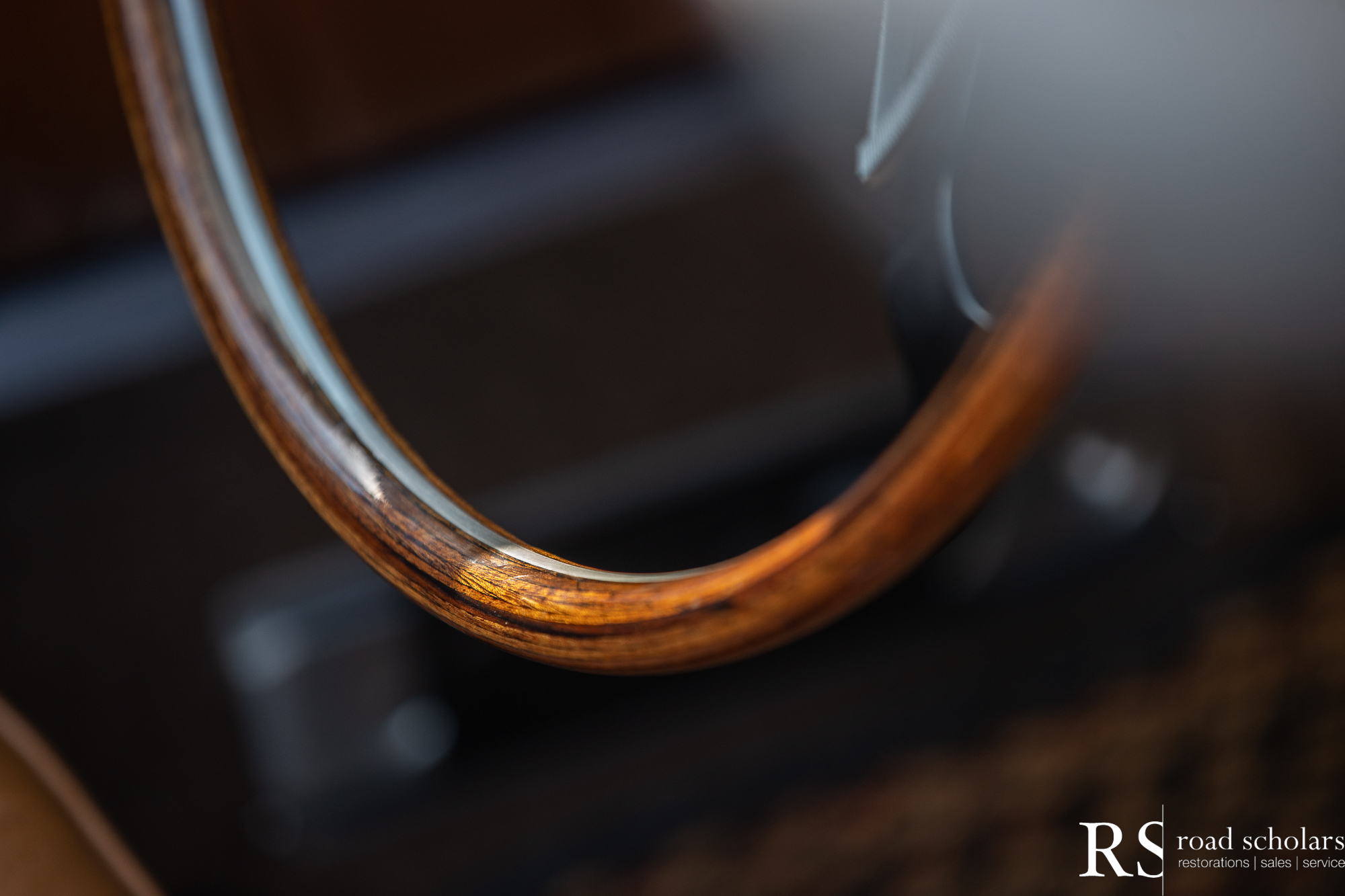
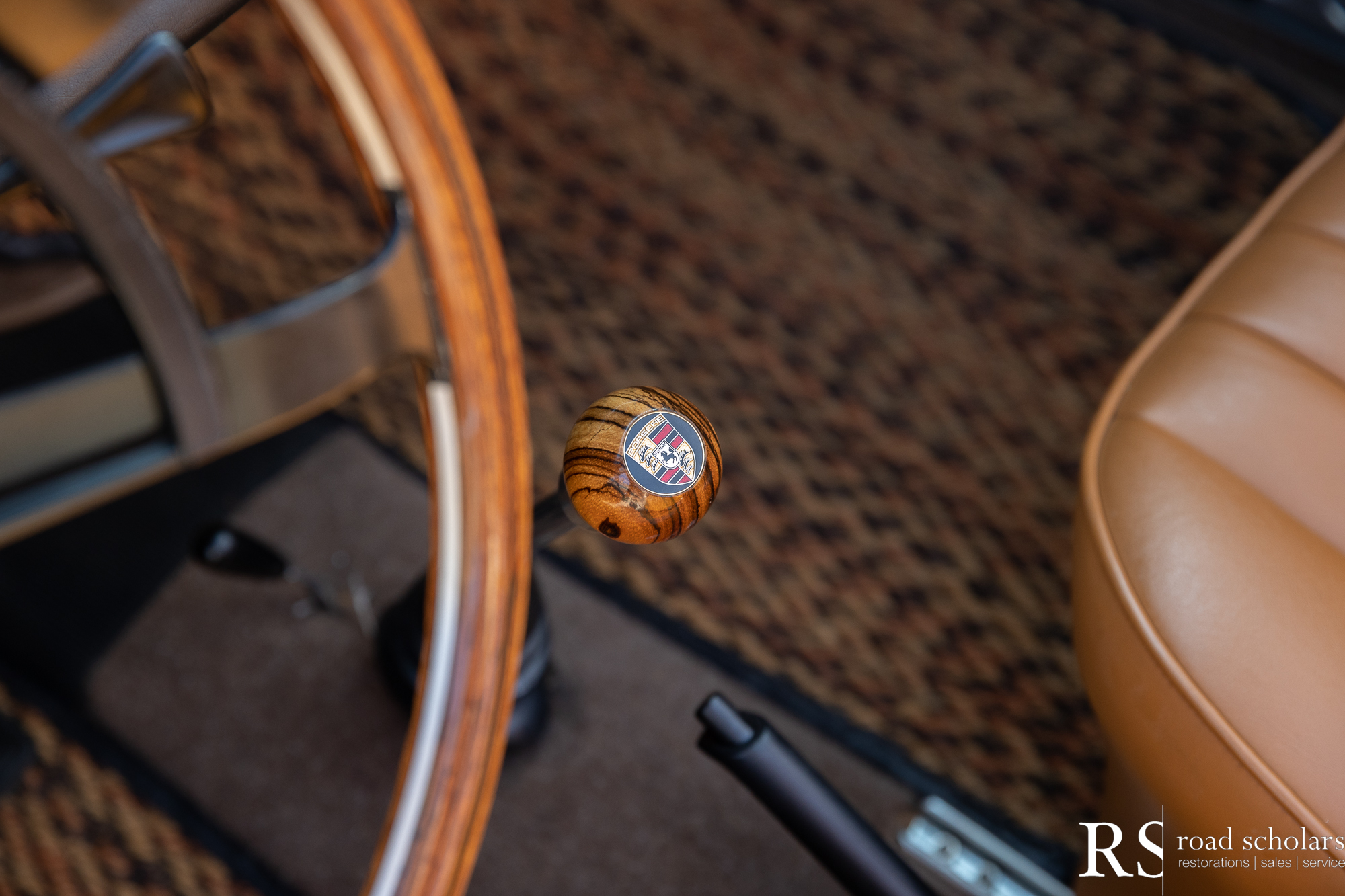
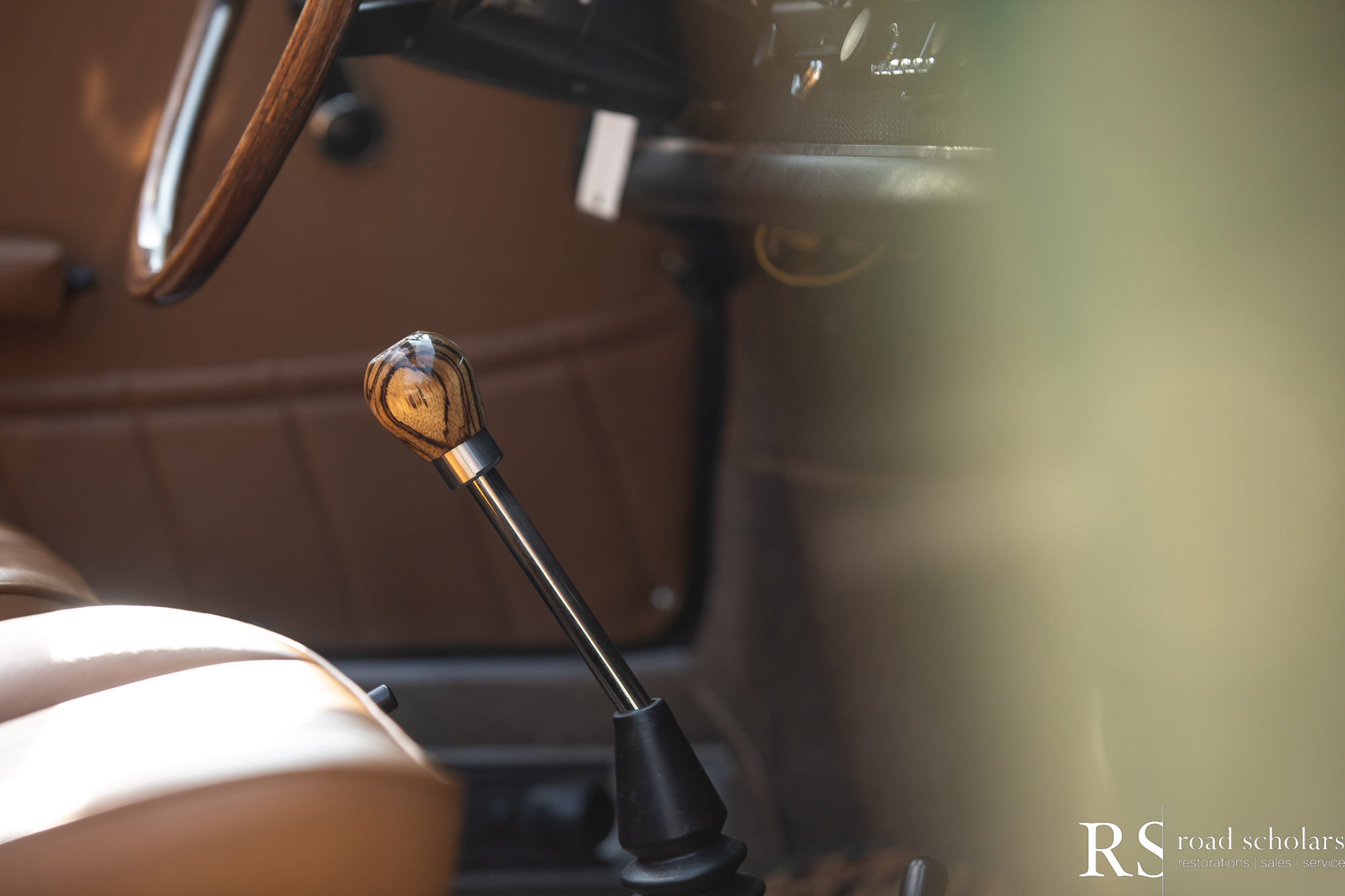
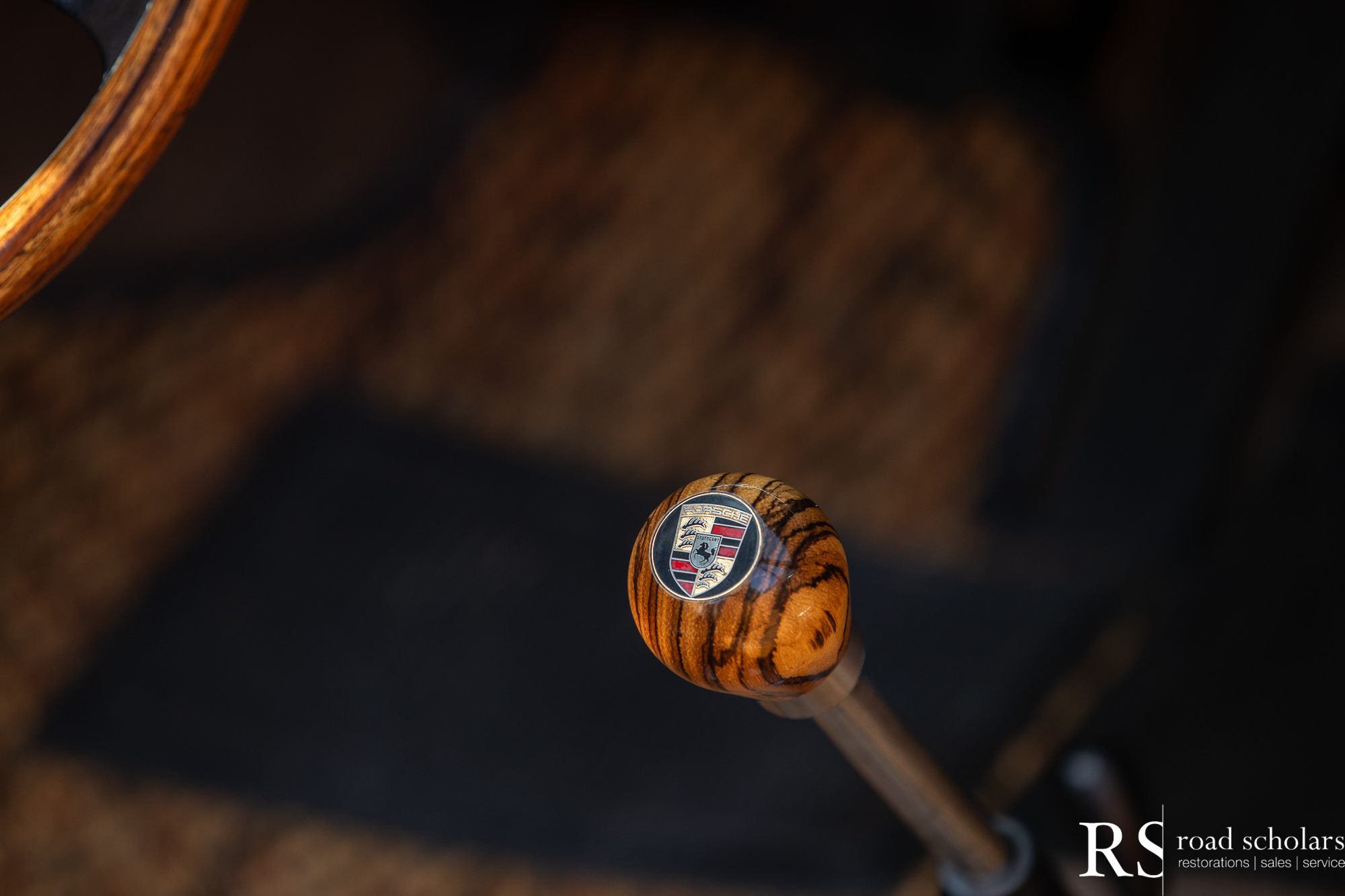
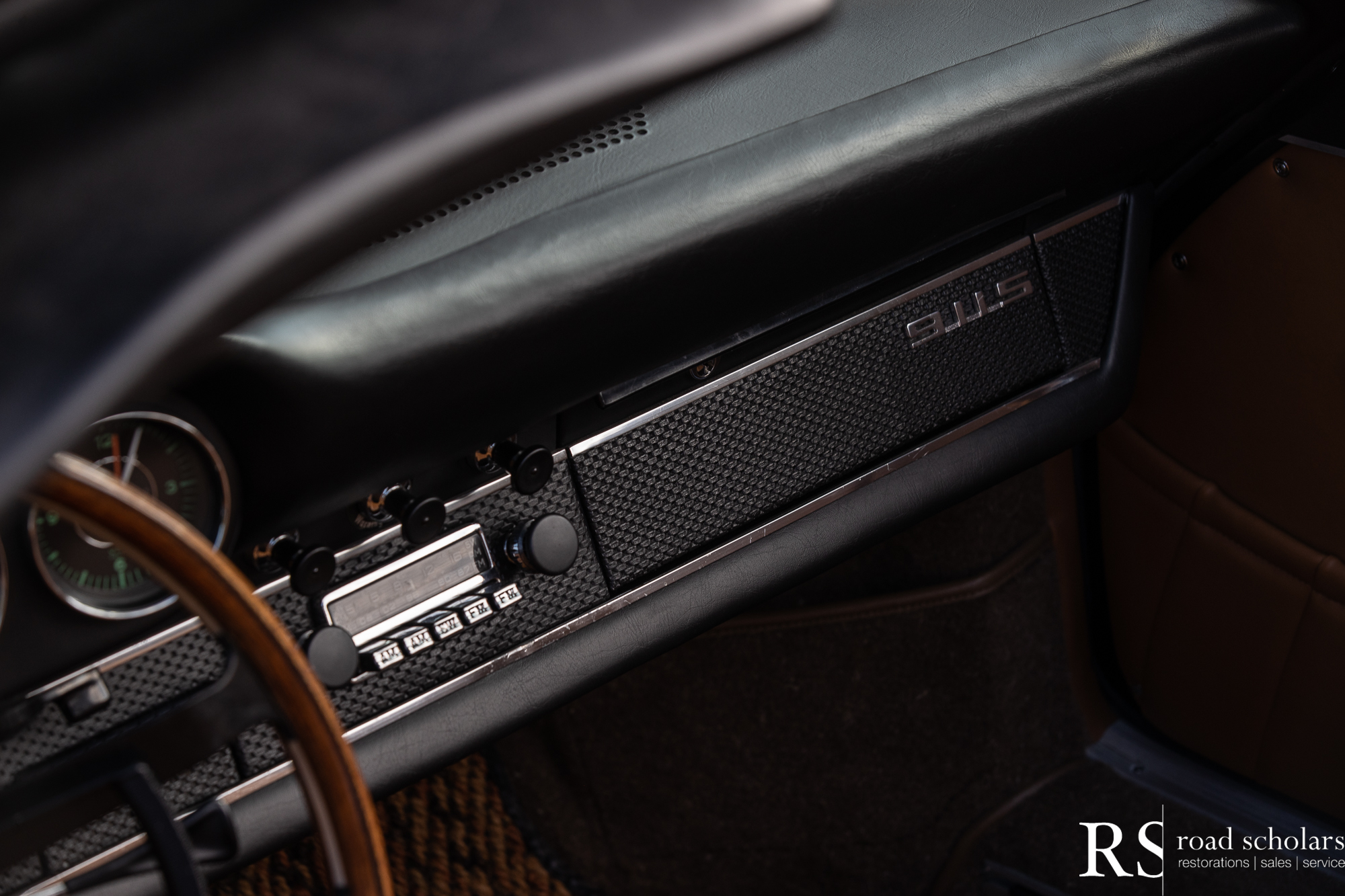
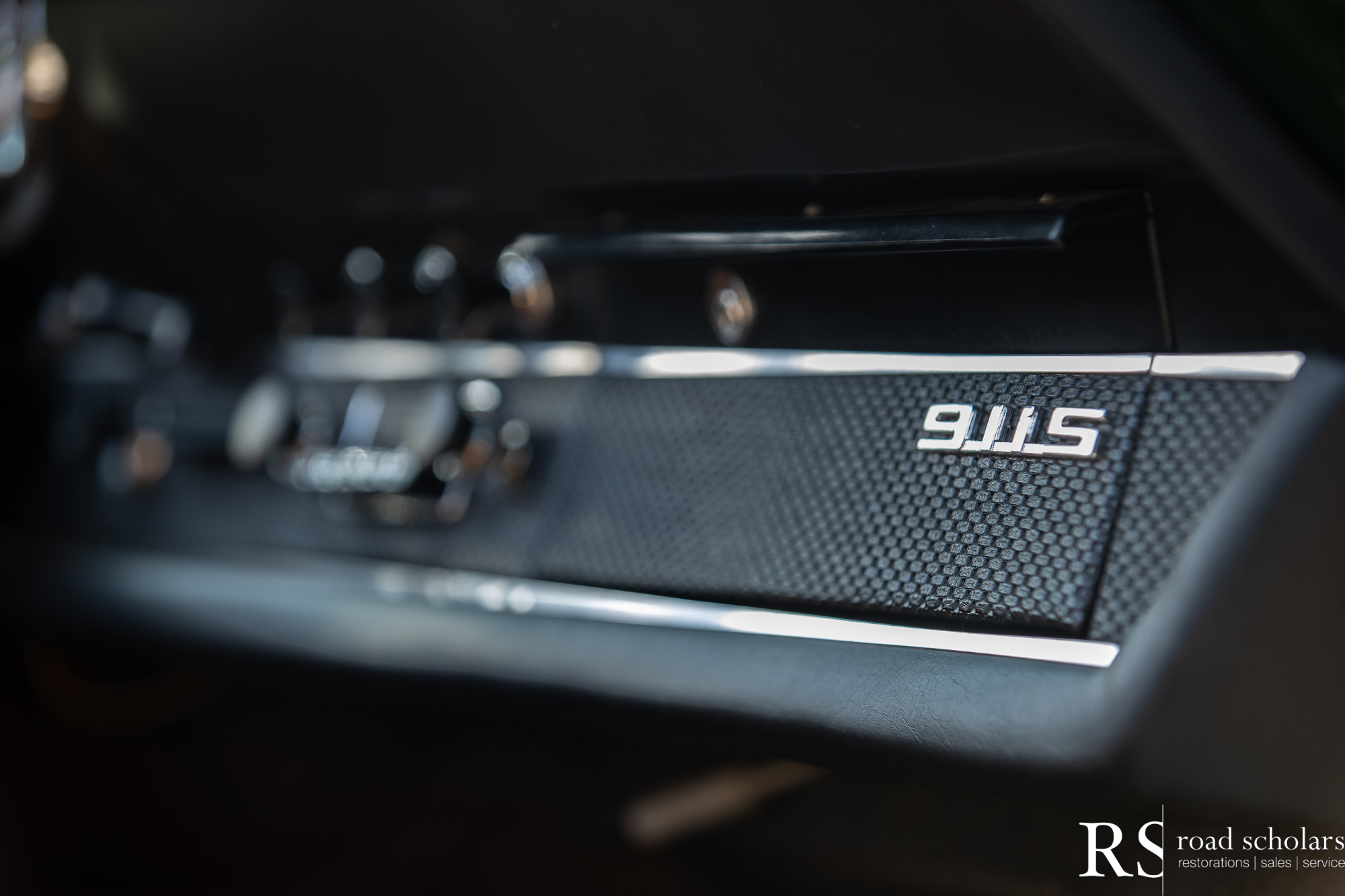
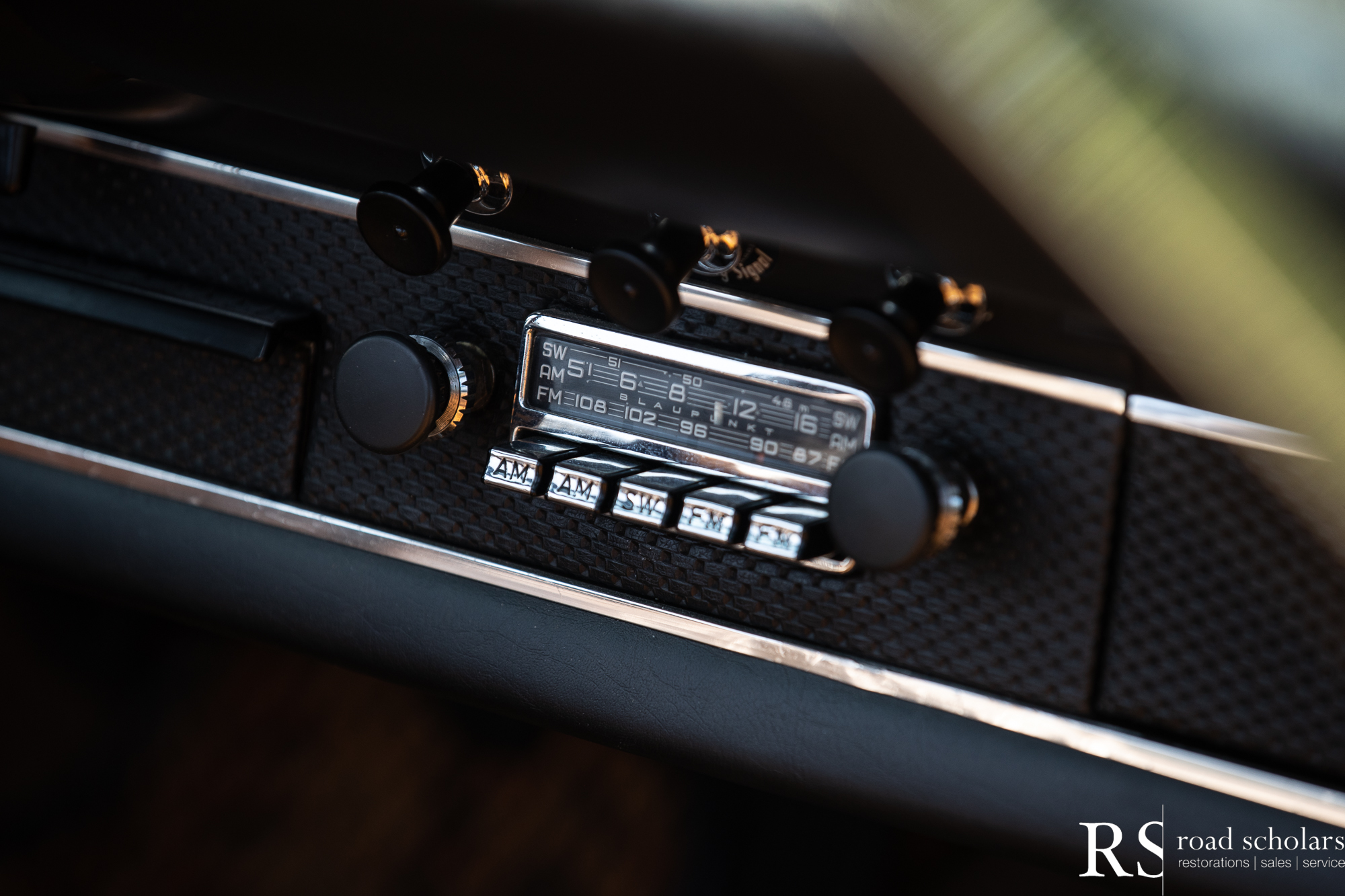

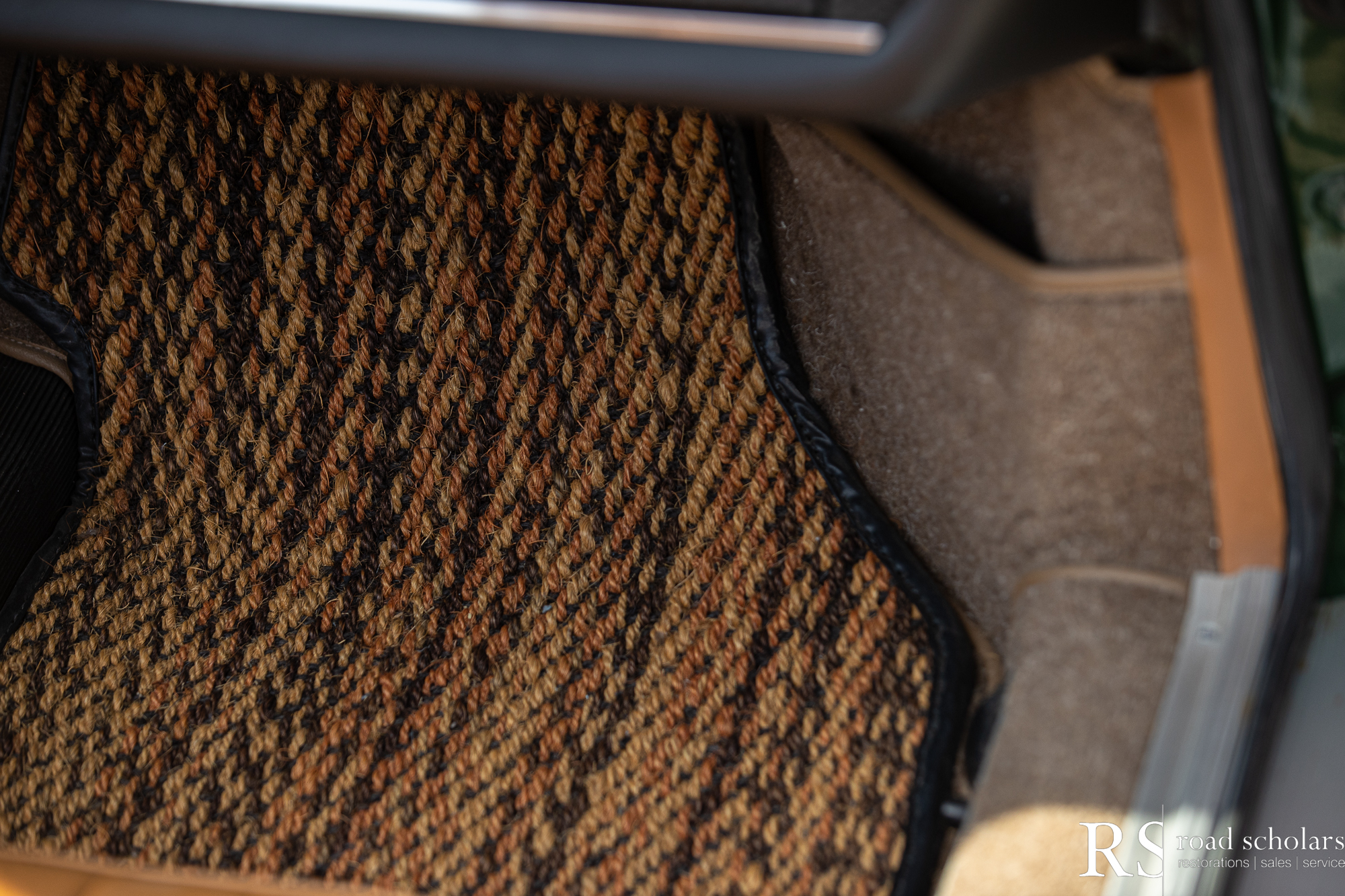
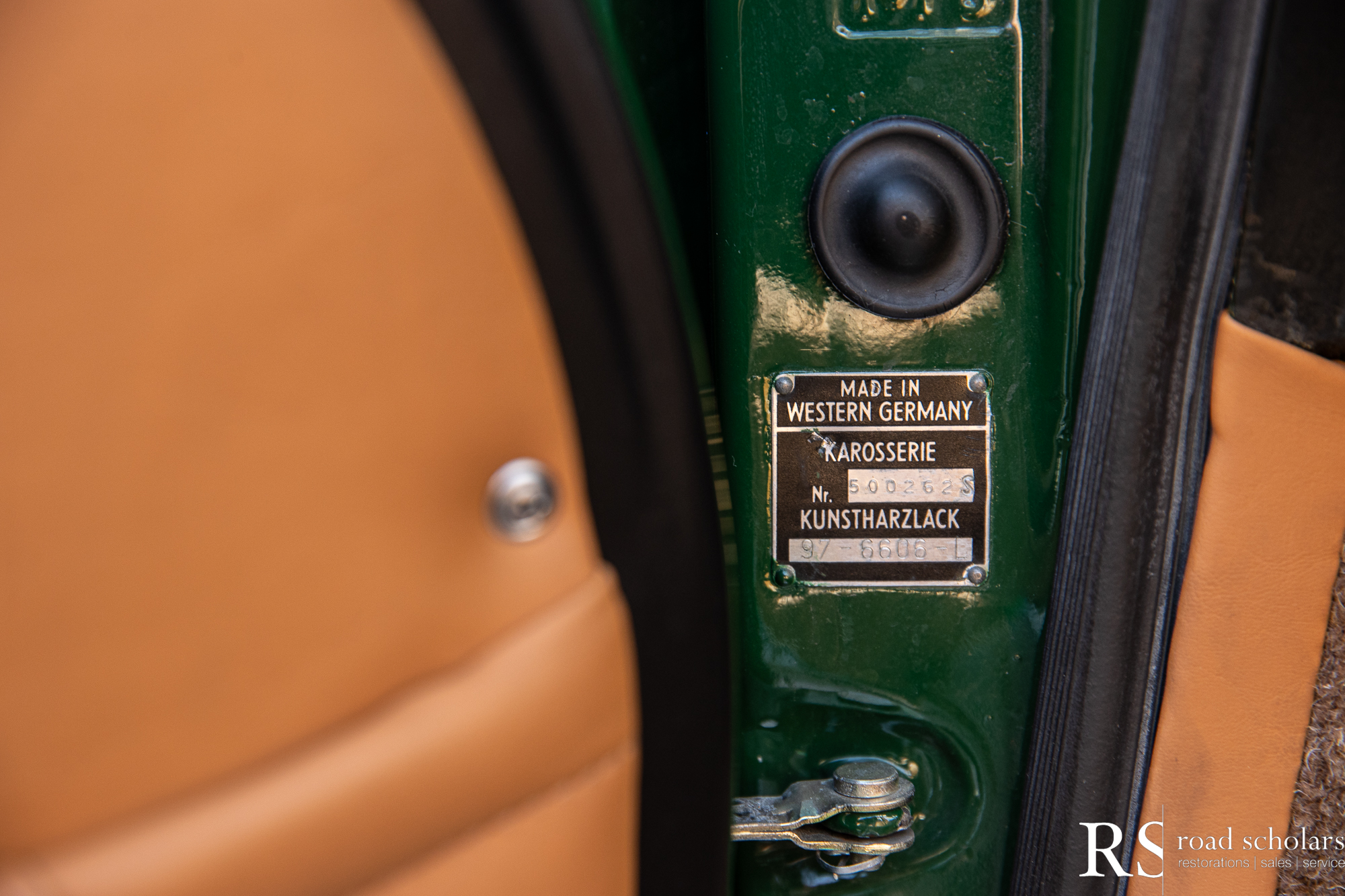
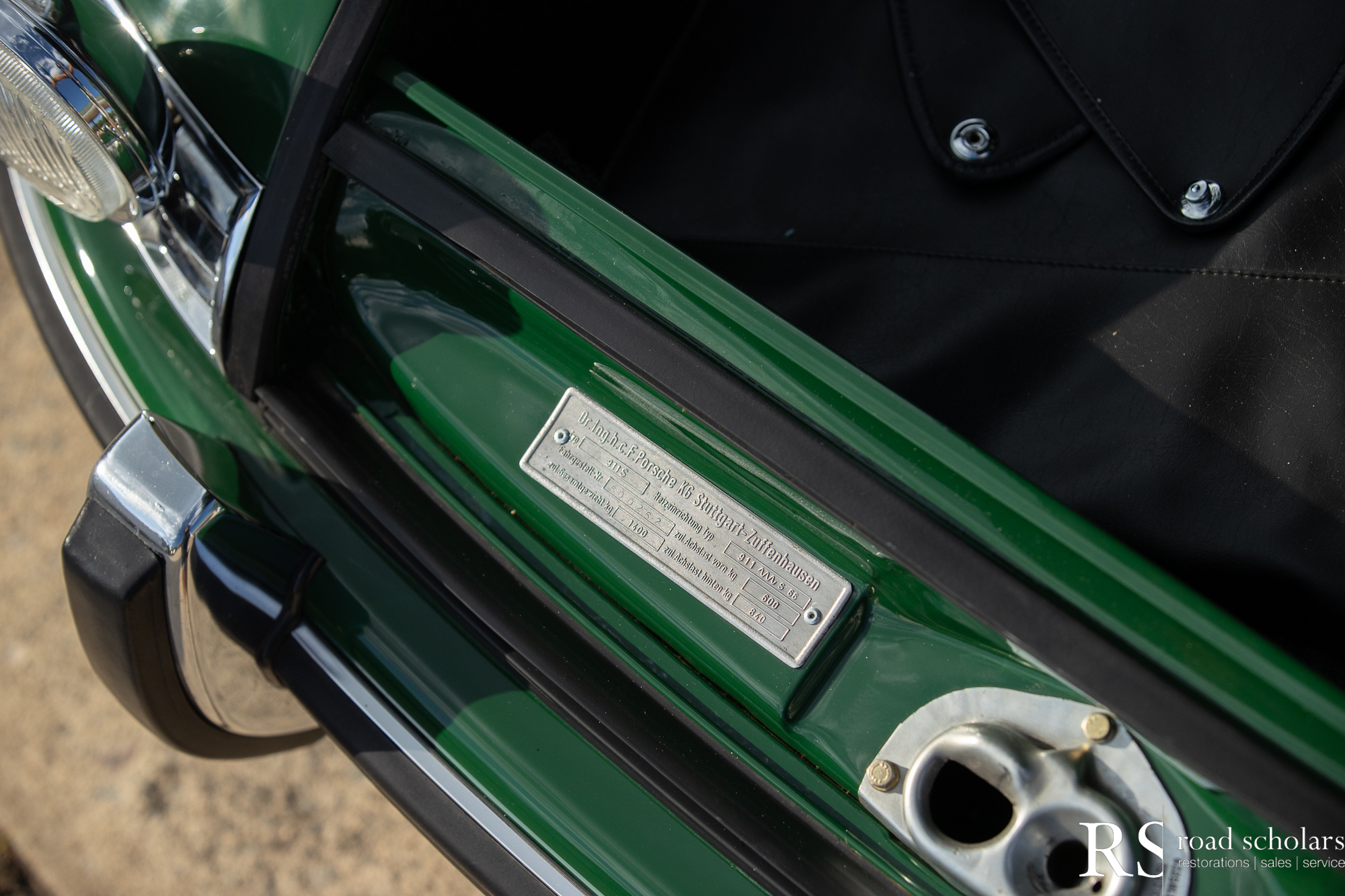
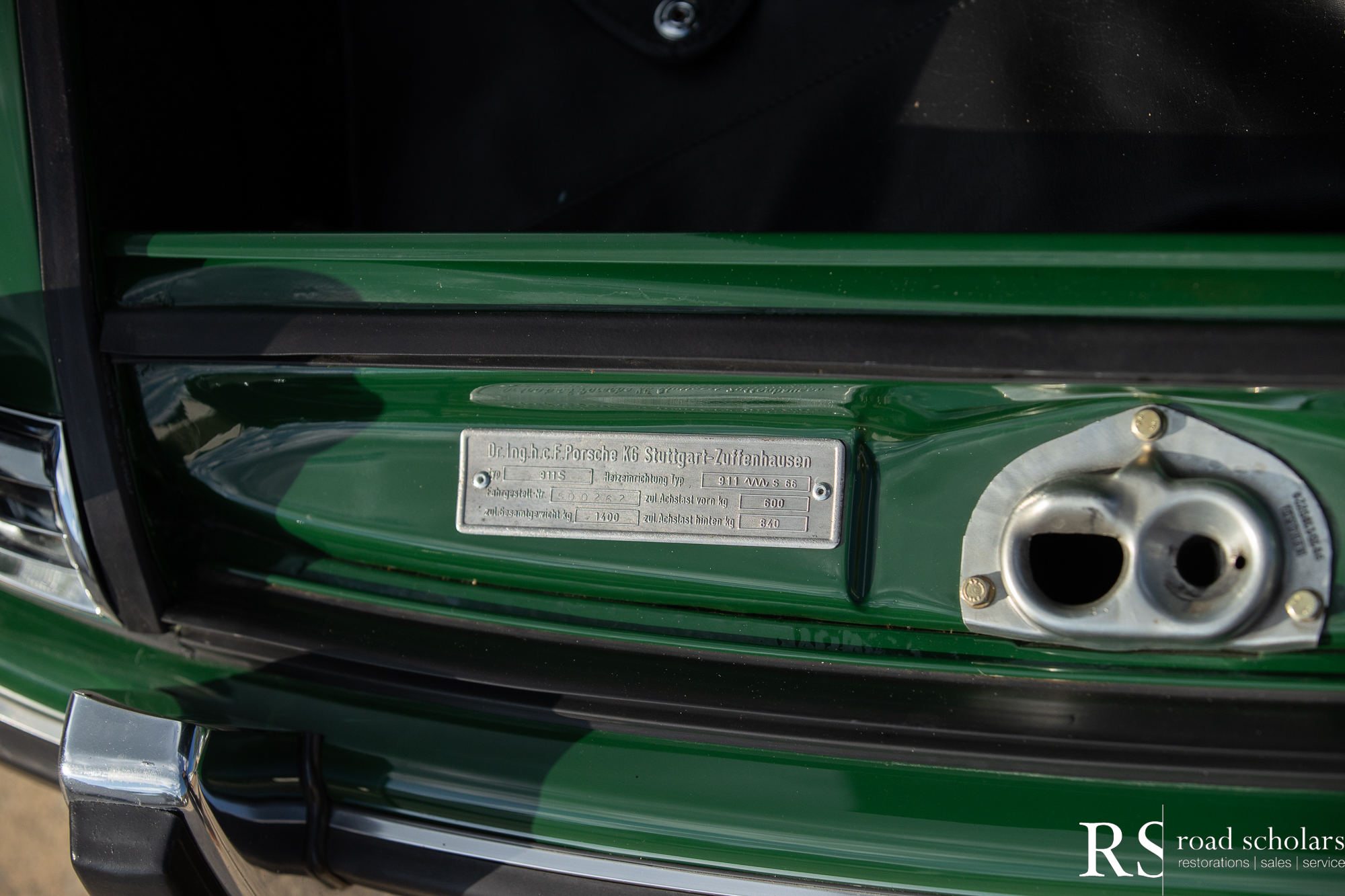

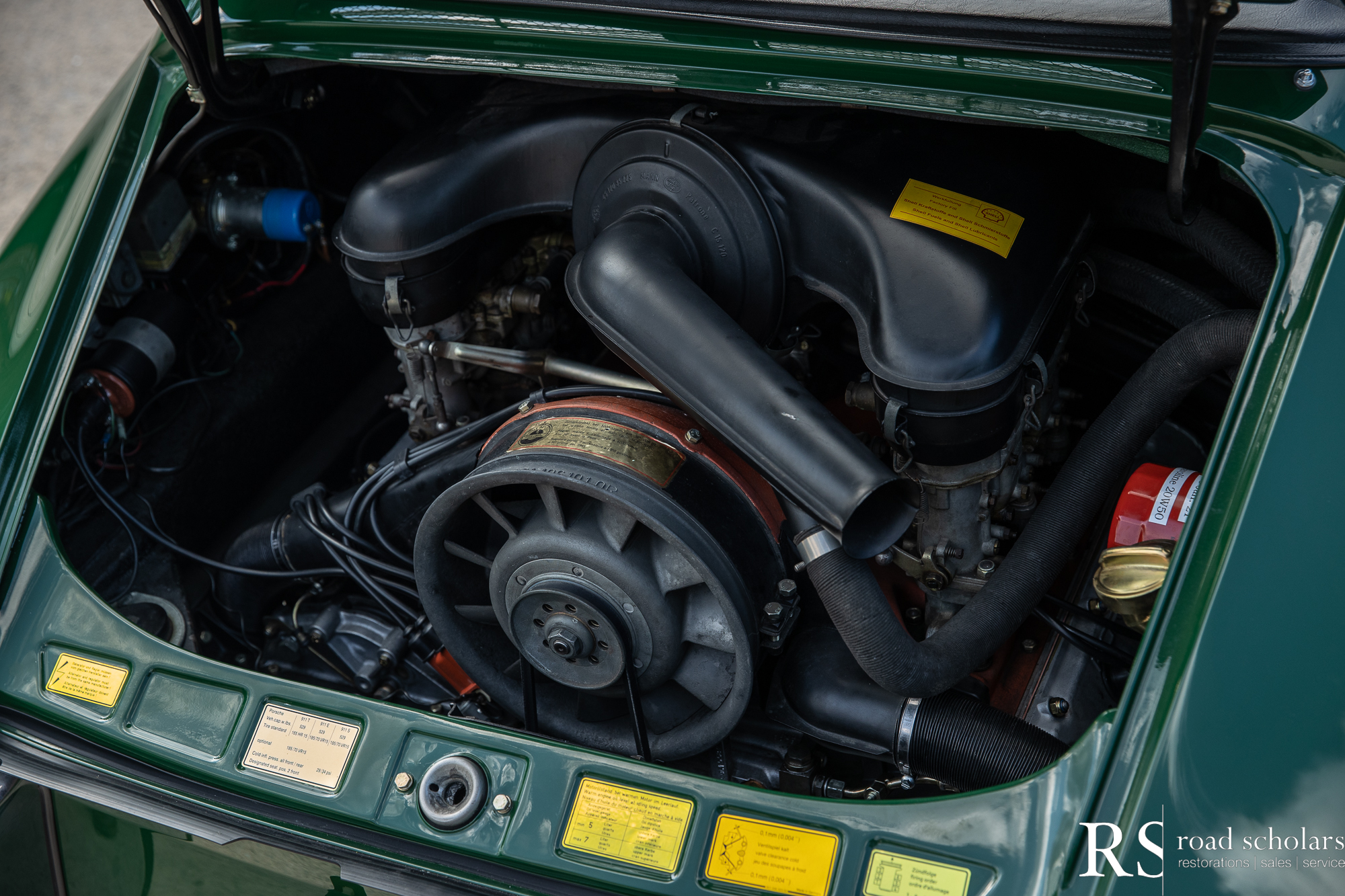
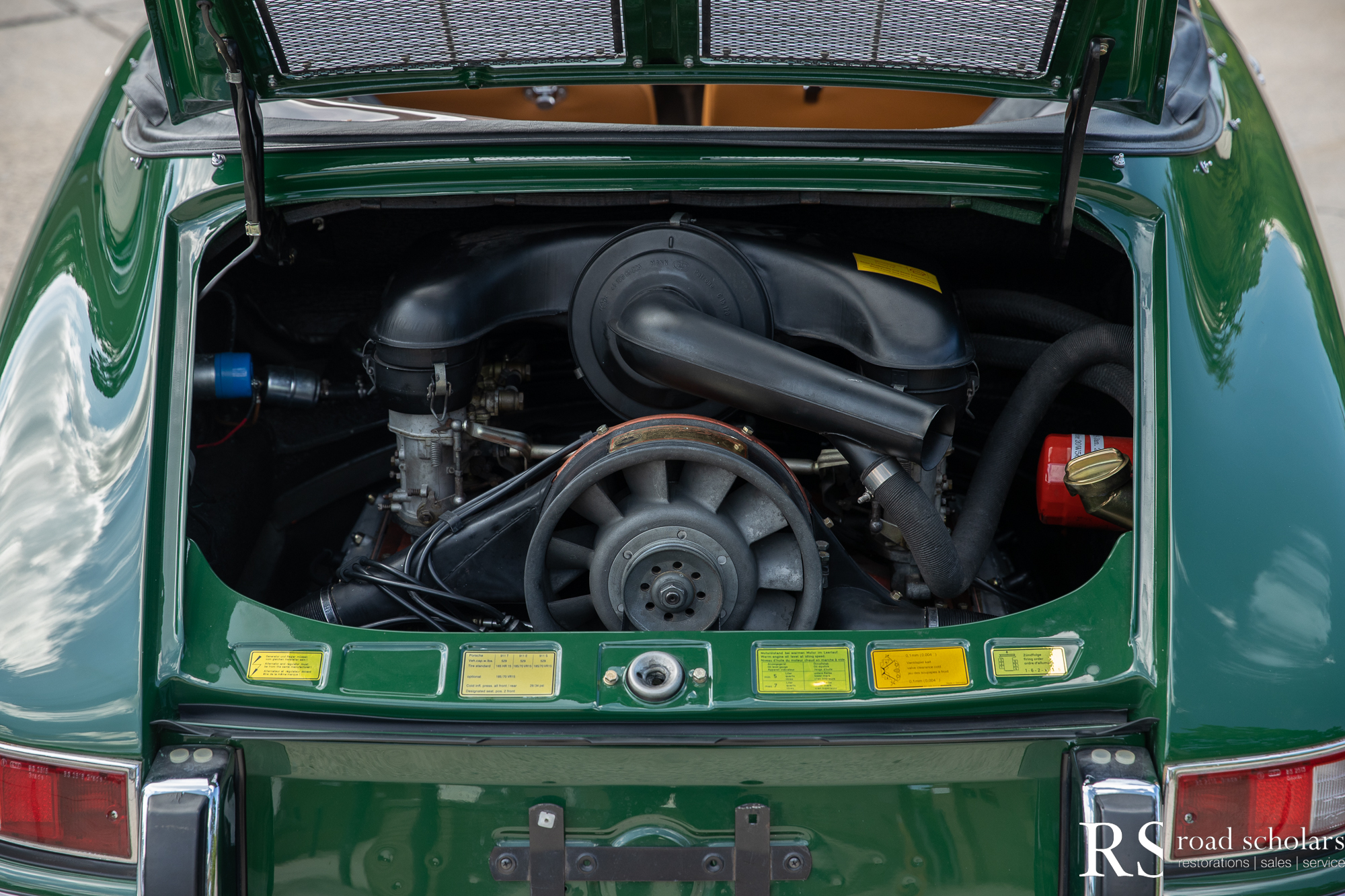
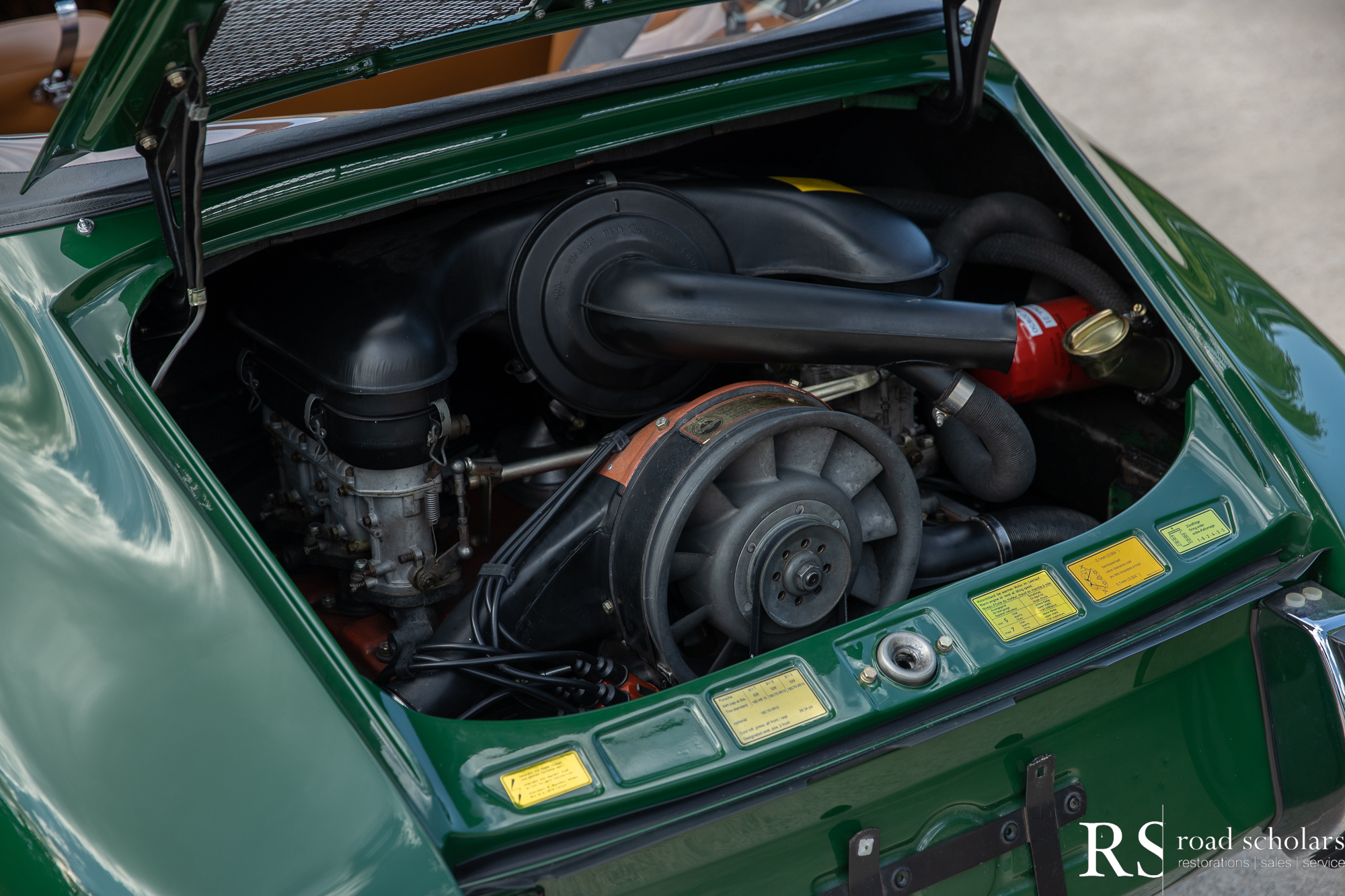
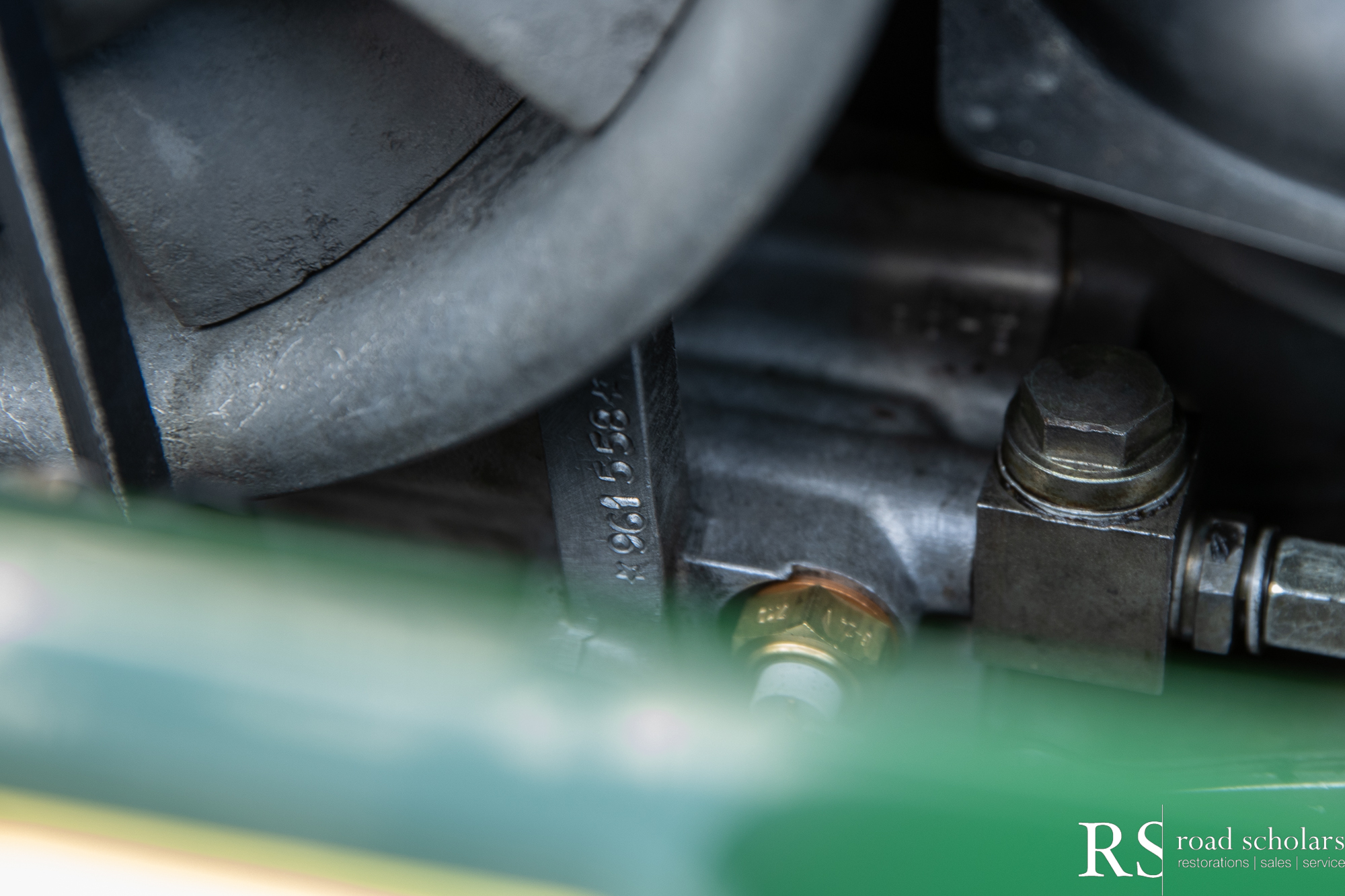
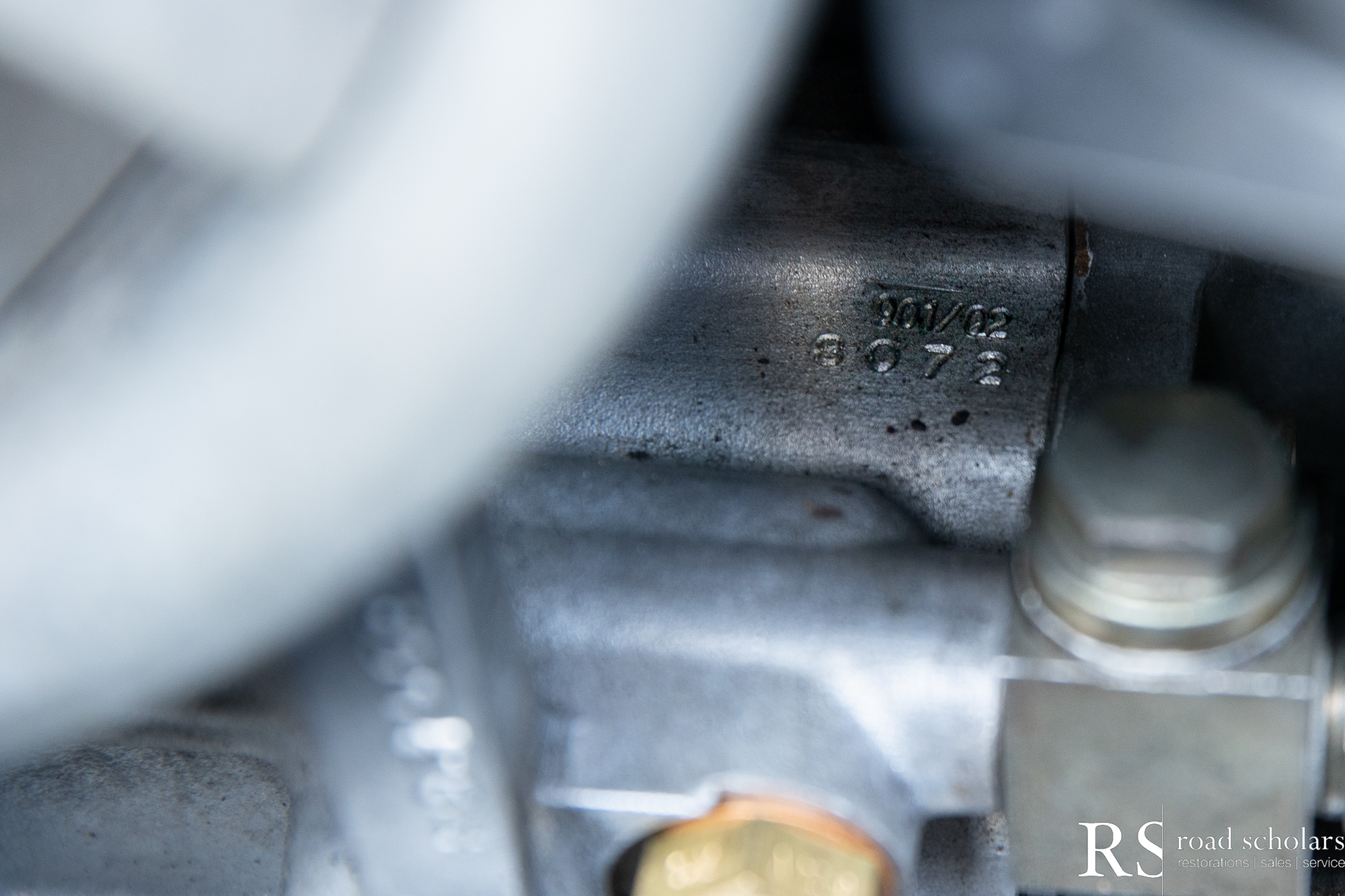
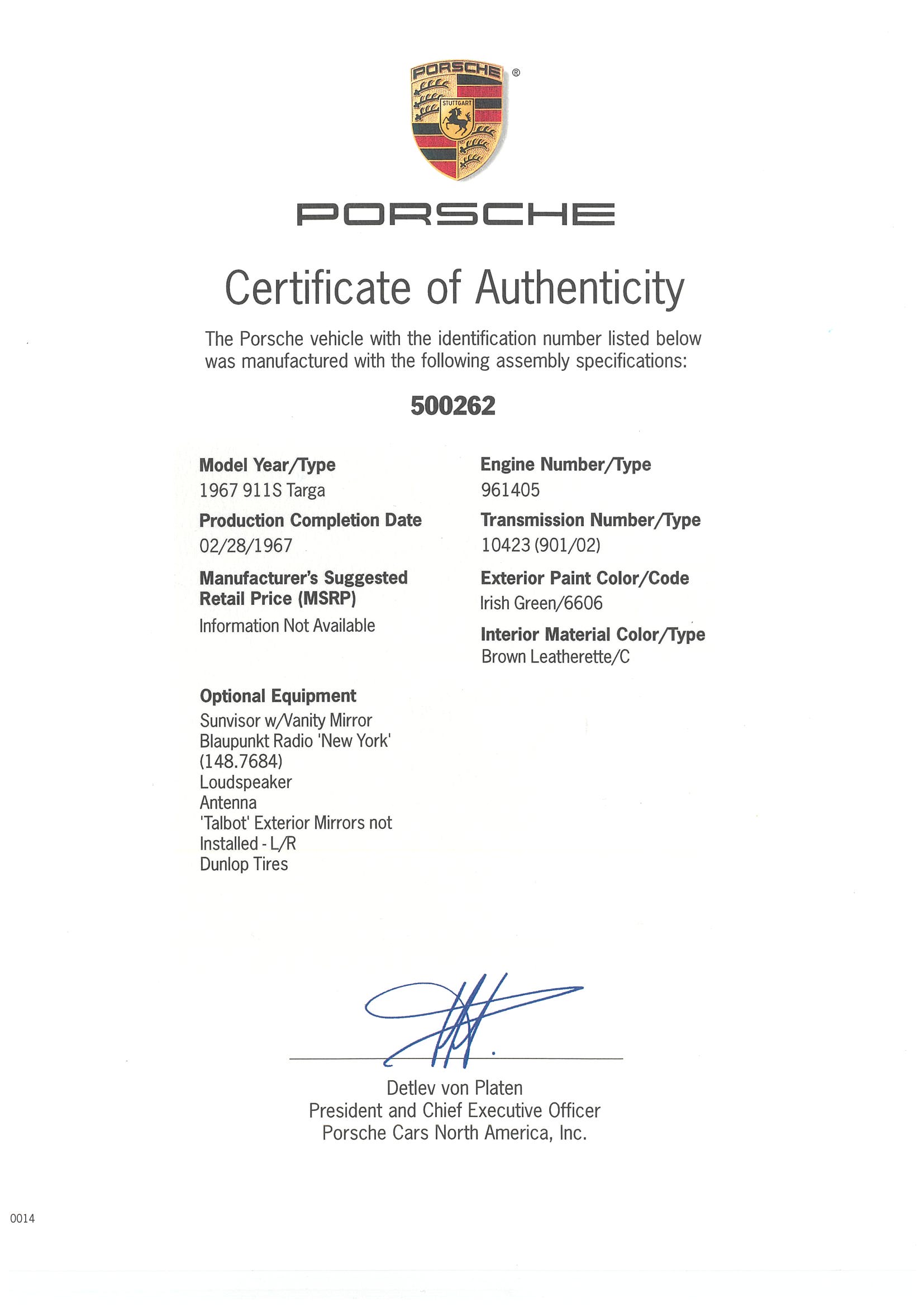



Ferry Porsche was a staunch enthusiast of open-top vehicles, so it was only a matter of time before the newly released 911 would have a cabriolet model to be offered alongside a coupe. Simply slicing off the roof presented a number of complications. Firstly, there was no room to store a collapsible convertible top due to the increased height of the engine from the use of a vertical center-mounted cooling fan. Secondly, without the roof, the body was simply not rigid enough to support being a cabriolet and would effectively undo all of Helmuth Bott’s work to remedy handling issues. Creating a 911 Cabriolet would have required extensive development to create entirely new body panels to accommodate the support bows and linkages of a collapsable convertible top.
Fast forward to 1965- F.A. Porsche and Helmuth Bott had devised a fixed roll bar and additional chassis reinforcement and implemented a soft clear plastic rear window that could b unzipped and folded down, resolving the structural challenges and successfully creating the open-car feeling of a cabriolet. The 911 Targa was officially offered to the public for the 1967 model year, and coincidentally the same year that the top of the model line 911S model was offered. “S” models raised the 2.0-liter engine’s output from 130 horsepower at 6,100 rpms to 160 horsepower at 6,600 rpms. They were able to achieve this through increasing the compression ratio to 9:8.1 and enlarging the diameter of the intake and exhaust valves and lengthening the amount of time the valves were open. Porsche made the switch from cast pistons to forged to accommodate the increased forces in the combustion chambers, as well as implemented improved pistons and connecting rods. “Biral” cast iron cylinder liners with a jacket of aluminum cooling fins were introduced by Porsche engine designers, prompting the different 901/02 engine designation for the 911S models. To improve handling, “S” models implemented front and rear anti-roll bars with Koni shock absorbers at all four corners. Ventilated four-wheel disc brakes and new Fuchs 15×4.5 inch wheels rounded out the package.
This example is one of just 483 911S Soft Window Targa models produced in 1967. It was delivered new to Leon C Felton Co. in San Rafael, California through Porsche Car Pacific Inc. Records show that the original engine was replaced under warranty with the currently fitted engine, number 961558. It was ordered with the optional driver-side sun visor with vanity mirror, New York Blaupunkt radio with loudspeaker and antenna, and a Talbot rearview mirror on the driver’s side only. In 2007, it underwent a high-level restoration in its original color scheme of Irish Green over Brown. It was completely disassembled and all components were stripped to bare metal before being refinished.
Around 2010, the Targa was sold through California Porsche Restorations to its most recent owner as part of a significant Porsche collection in the Southwest. It was meticulously cared for, and presents in excellent physical and mechanical condition inside and out.
One of 483 911S Soft Window Targa examples produced for North America in 1967.
High-level restoration performed in 2007

Get RS Insights sent to your e-mail monthly.